DEADLINE

DISRUPTORS
Our 2023 class of movers and shakers including:
QUINTA BRUNSON
It’s always funny in Philadelphia
LOUIS THEROUX
His docs don’t jiggle jiggle, they’re bold
EDWARD BERGER
Enjoying the spoils of war
IDRIS ELBA & MO ABUDU
Building a media empire from scratch
FRANCIS FORD COPPOLA & KEVIN COSTNER
How to make a DIY blockbuster
KILLERS of the FLOWER MOON
Scorsese , DiCaprio and De Niro together for the first time—on the callous historic crimes that shame America

MAY 16, 2023 | SPECIAL ISSUE
PLUS: THE KING’S LAW
Inside Henry VIII’s reign of terror in Firebrand PLEASED TO METEOR
Jeffrey Wright visits Asteroid City
LOACH CLASS Can Ken conquer Cannes?

PRESIDENT Stacey Farish
EXECUTIVE AWARDS EDITOR
Joe Utichi
VICE PRESIDENT, CREATIVE
Craig Edwards
SENIOR AWARDS EDITOR
Antonia Blyth
TELEVISION EDITOR
Lynette Rice
FILM EDITOR
Damon Wise
DOCUMENTARY EDITOR
Matthew Carey
CRAFTS EDITOR
Ryan Fleming
PRODUCTION EDITOR
David Morgan
EDITORIAL ASSISTANT
Destiny Jackson
DIRECTOR, SOCIAL MEDIA
Scott Shilstone
DIRECTOR, EVENTS
Sophie Hertz
DIRECTOR, BRAND MARKETING
Laureen O’Brien
EVENTS MANAGER
Allison DaQuila
VIDEO MANAGER
David Janove
VIDEO PRODUCERS
Benjamin Bloom
Jade Collins
Shane Whitaker
DESIGNERS
Catalina Castro
Grant Dehner
SOCIAL MEDIA COORDINATOR
Natalie Sitek
EVENTS COORDINATOR
Dena Nguyen
DESIGN/PRODUCTION COORDINATOR
Paige Petersen
CHIEF PHOTOGRAPHER
Michael Buckner
PUBLISHER
Kasey Champion
SENIOR VICE PRESIDENT, GLOBAL BUSINESS
DEVELOPMENT & STRATEGIC PARTNERSHIPS
Céline Rotterman
VICE PRESIDENT, ENTERTAINMENT
Caren Gibbens
VICE PRESIDENT, INTERNATIONAL SALES
Patricia Arescy
VICE PRESIDENT, SALES & EVENTS
Tracy Kain
SENIOR DIRECTOR, ENTERTAINMENT
Brianna Corrado
DIRECTOR, ENTERTAINMENT
London Sanders
DIRECTOR, DIGITAL SALES PLANNING
Letitia Buchan
ACCOUNT EXECUTIVE
Michael Bronstein
SENIOR DIGITAL ACCOUNT MANAGER
Cherise Williams
SALES PLANNER
Luke Licata
SALES ASSISTANT
Daryl Jeffery
PRODUCTION DIRECTOR
Natalie Longman
DISTRIBUTION DIRECTOR
Michael Petre
PRODUCTION MANAGER
Andrea Wynnyk
CO-EDITORS-IN-CHIEF
Nellie Andreeva (Television)
Mike Fleming Jr. (Film)
AWARDS COLUMNIST & CHIEF FILM CRITIC
Pete Hammond
COLUMNIST & INTERNATIONAL EDITOR-AT-LARGE
Baz Bamigboye
EXECUTIVE MANAGING EDITOR
Patrick Hipes
EDITORIAL DIRECTOR & BOX OFFICE EDITOR
Anthony D’Alessandro
SENIOR EDITOR, LEGAL & TV CRITIC
Dominic Patten
SENIOR MANAGING EDITOR
Denise Petski
MANAGING EDITOR
Erik Pedersen
DEPUTY MANAGING EDITOR
Tom Tapp
TELEVISION EDITOR
Peter White
INTERNATIONAL EDITOR
Andreas Wiseman
BUSINESS EDITOR
Dade Hayes
EDITOR-AT-LARGE
Peter Bart
FILM CRITIC & COLUMNIST
Todd McCarthy
EXECUTIVE EDITOR
Michael Cieply
SENIOR FILM WRITER
Justin Kroll
CO-BUSINESS EDITOR
Jill Goldsmith
LABOR EDITOR
David Robb
POLITICAL EDITOR
Ted Johnson
INTERNATIONAL TELEVISION CO-EDITOR
Max Goldbart
INTERNATIONAL FEATURES EDITOR
Diana Lodderhose
INTERNATIONAL BOX OFFICE EDITOR & SENIOR CONTRIBUTOR
Nancy Tartaglione
INTERNATIONAL TELEVISION CO-EDITOR
Jesse Whittock
INTERNATIONAL INVESTIGATIONS EDITOR
Jake Kanter
ASSOCIATE EDITOR & FILM WRITER
Valerie Complex
BROADWAY AND NEW YORK NEWS EDITOR
Greg Evans
ASSOCIATE EDITOR
Bruce Haring
CONTRIBUTING EDITOR, ASIA
Liz Shackleton
ASSOCIATE EDITOR, TV
Rosy Cordero
SENIOR INTERNATIONAL FILM CORRESPONDENT
Melanie Goodfellow
FILM REPORTER
Matt Grobar
INTERNATIONAL FILM REPORTER
Zac Ntim
TELEVISION REPORTER
Katie Campione
NIGHTS AND WEEKENDS EDITOR
Armando Tinoco
PHOTO EDITOR
Robert Lang
DEADLINE.COM
Breaking News Follow Deadline.com 24/7 for the latest breaking news in entertainment.
Sign up for Alerts & Newsletters
Sign up for breaking news alerts and other Deadline newsletters at: deadline.com/newsletters
VIDEO SERIES
The Actor’s Side
Meet some of the biggest and hardest working actors of today, who discuss their passion for their work in film and television. deadline.com/vcategory/ the-actors-side/
Behind the Lens
Explore the art and craft of directors from first-timers to veterans, and take a unique look into the world of filmmakers and their films. deadline.com/vcategory/ behind-the-lens/
The Film That Lit My Fuse
Get an insight into the creative ambitions, formative influences, and inspirations that fuelled today’s greatest screen artists.
deadline.com/vcategory/ the-film-that-lit-my-fuse/
PODCASTS
20 Questions on Deadline
Antonia Blyth gets personal with famous names from both film and television. deadline.com/tag/ 20-questions-podcast/
Scene 2 Seen Valerie Complex offers a platform for up-and-comers and established voices. deadline.com/tag/ scene-2-seen-podcast/
Crew Call
Anthony D’Alessandro focuses on the contenders in the below-the-line categories. deadline.com/tag/ crew-call-podcast/
CHAIRMAN & CEO
Jay Penske
VICE CHAIRMAN
Gerry Byrne
CHIEF OPERATING OFFICER
George Grobar
CHIEF ACCOUNTING OFFICER
Sarlina See
CHIEF DIGITAL OFFICER
Craig Perreault
EXECUTIVE VICE PRESIDENT, BUSINESS AFFAIRS & CHIEF LEGAL OFFICER
Todd Greene
EXECUTIVE VICE PRESIDENT, OPERATIONS & FINANCE
Paul Rainey
EXECUTIVE VICE PRESIDENT, OPERATIONS & FINANCE
Tom Finn
EXECUTIVE VICE PRESIDENT, PRODUCT & ENGINEERING
Jenny Connelly
MANAGING DIRECTOR, INTERNATIONAL MARKETS
Debashish Ghosh
EVP, GM OF STRATEGIC INDUSTRY GROUP
Dan Owen
SENIOR VICE PRESIDENT, SUBSCRIPTIONS
David Roberson
SENIOR VICE PRESIDENT, PROGRAMMATIC SALES
Jessica Kadden
SENIOR VICE PRESIDENT, DEPUTY GENERAL COUNSEL
Judith R. Margolin
SENIOR VICE PRESIDENT, FINANCE
Ken DelAlcazar
SENIOR VICE PRESIDENT, HUMAN RESOURCES
Lauren Utecht
SENIOR VICE PRESIDENT, BUSINESS DEVELOPMENT
Marissa O’Hare
SENIOR VICE PRESIDENT, CREATIVE
Nelson Anderson
SENIOR VICE PRESIDENT, LICENSING & BRAND DEVELOPMENT
Rachel Terrace
VICE PRESIDENT, ASSOCIATE GENERAL COUNSEL
Adrian White
VICE PRESIDENT, HUMAN RESOURCES
Anne Doyle
VICE PRESIDENT, REVENUE OPERATIONS
Brian Levine
HEAD OF INDUSTRY, CPG AND HEALTH
Brian Vrabel
VICE PRESIDENT, PUBLIC AFFAIRS & STRATEGY
Brooke Jaffe
HEAD OF INDUSTRY, TECHNOLOGY
Cassy Hough
VICE PRESIDENT, SEO
Constance Ejuma
VICE PRESIDENT & ASSOCIATE GENERAL COUNSEL
Dan Feinberg
HEAD OF LIVE EVENT PARTNERSHIPS
Doug Bandes
VICE PRESIDENT, AUDIENCE MARKETING & SPECIAL PROJECTS
Ellen Deally
VICE PRESIDENT, GLOBAL TAX
Frank McCallick
VICE PRESIDENT, TECHNOLOGY
Gabriel Koen
VICE PRESIDENT, E-COMMERCE
Jamie Miles
HEAD OF INDUSTRY, TRAVEL
Jennifer Garber
VICE PRESIDENT, ACQUISITIONS & OPERATIONS
Jerry Ruiz
VICE PRESIDENT, PRODUCTION OPERATIONS
Joni Antonacci
VICE PRESIDENT, FINANCE
Karen Reed
VICE PRESIDENT, BUSINESS DEVELOPMENT
Katrina Barlow
VICE PRESIDENT, INFORMATION TECHNOLOGY
Kay Swift
VICE PRESIDENT, HUMAN RESOURCES
Keir McMullen
HEAD OF AUTOMOTIVE INDUSTRY
Matthew Cline
SOCIAL MEDIA
Follow Deadline
Facebook.com/Deadline Instagram.com/Deadline Twitter.com/Deadline YouTube.com/Deadline TikTok.com/@Deadline
VICE PRESIDENT, STRATEGIC PLANNING & ACQUISITIONS
Mike Ye
VICE PRESIDENT, PRODUCT DELIVERY
Nici Catton
VICE PRESIDENT, CUSTOMER EXPERIENCE & MARKETING OPERATIONS
Noemi Lazo
HEAD OF INDUSTRY, PERFORMANCE MARKETING
Scott Ginsberg
VICE PRESIDENT, ASSOCIATE GENERAL COUNSEL
Sonal Jain
DEADLINE
HOLLYWOOD IS OWNED AND PUBLISHED BY PENSKE MEDIA CORPORATION
First Take
Cover Story
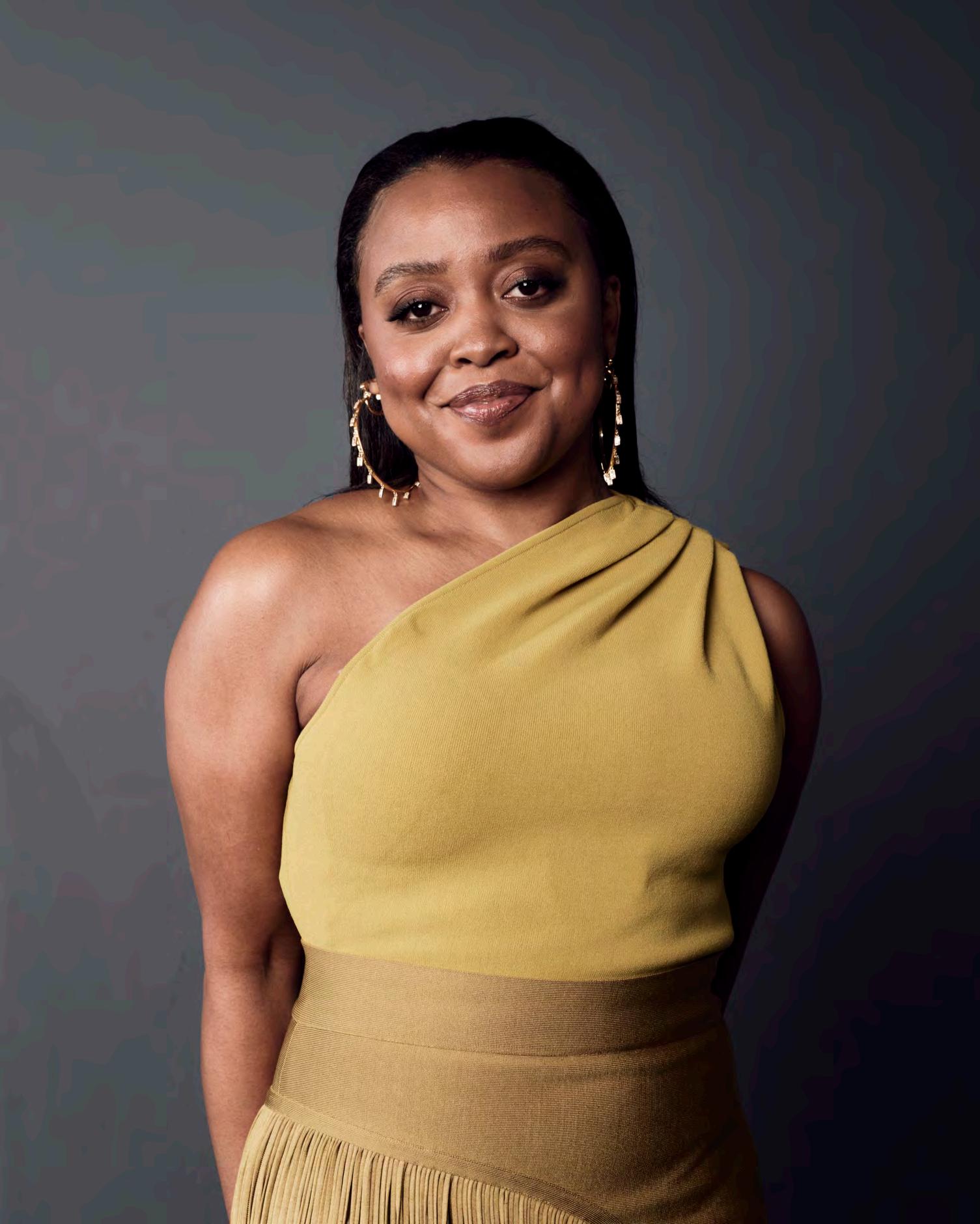
Flash Mob

CALL SHEET
4 ONES TO WATCH: Five Cannes debutantes to keep an eye on. 10 FIREBRAND: Jude Law and Alicia Vikander in a historic matter of wife and death. 24 THE PARTNERSHIP: Ken Loach and Paul Laverty go for the triple with The Old Oak 30 JEAN-LUC GODARD: The untold story of his crazy assault on Shakespeare. Dialogue 12 Wim Wenders 18 Alice Rohrwacher 20 Jeffrey Wright
38 KILLERS OF THE FLOWER MOON: How David Grann’s 2017 truecrime bestseller became the year’s biggest movie thanks to Martin Scorsese and Co.
114 Shots from Contenders Television: Los Angeles. ON THE COVER: Martin Scorsese
Mann. THIS PAGE: Quinta Brunson
Quinta Brunson 62 YouTube Revolutionaries 70 Vision Entertainment 74 Word-of-Mouth Horror 75 Tollywood 76 Magnolia Network 80 Idris Elba & Mo Abudu 82 Hybe Corporation 88 Edward Berger 90 Iran Rebels 92 Mediawan 94 Louis Theroux 96 Digital Disruption 98 Francis Ford Coppola & Kevin Costner 102
photographed by Mark
photographed by Michael Buckner.

F T I A R K S E T
DEADLINE ANOINTS THE FIVE NAMES



DESTINED TO ROCK THIS YEAR’S CROSETTE


ONES TO WATCH
CANNES FILM FESTIVAL 2023
DEADLINE.COM PG. 4
GETTY IMAGES/RLJE FILMS/STEF BLOCH/EDDY CHEN/HBO
DEADLINE’S
LILY-ROSE DEPP
WILL THE IDOL STAR UPSTAGE HER FAMOUS FATHER ON THE CROISETTE THIS YEAR?
“When was the last truly fucking nasty, nasty, bad pop girl?” This is the question posed in the teaser trailer to HBO’s The Idol, which promises the kind of lurid, adrenaline-pumping pop-culture exposé you’d see if Paul Verhoeven was ever allowed to make a film like Showgirls again. Said trailer also features copious quantities of cocaine, champagne and seriously dirty dancing, suggesting a warts-and-all drama about a super ambitious Madonna/Lady Gaga type who has recently hit the big time in the dog-eat-dog world of showbiz.

That, in itself, would be a risky for role for any young actress, especially since The Idol has already been in the news for its turbulent production, overseen by director Sam Levinson, whose envelope-pushing series Euphoria was labelled “pointlessly gratuitous” by the hardly conservative Esquire magazine. Hats off, then, to Lily-Rose Depp—daughter of Johnny and French pop singer Vanessa Paradis, and goddaughter of the controversy-besieged goth rocker Marilyn Manson—for braving the role of Jocelyn, a singer on the rebound who falls under the influence of shady nightclub impresario Tedros (Abel Tesfaye, AKA The Weeknd).

Though she’s still only 23, Depp went into acting nearly a decade ago, when she made her debut alongside Kevin Smith’s daughter Harley Quinn in Smith’s Tusk, an orgy of nepotism that must have seen the recent ‘nepo baby’ witch hunt coming. The pair reteamed in another Smith movie, Yoga Hosers (2016), another horror-comedy, in which they played convenience store clerks attacked by occult Nazi sausages. It was both a commercial flop and, to damn it with faint praise, Smith’s best film in 10 years.
Somehow, Depp’s acting career has gone under the radar so far, despite roles alongside names like Timothée Chalamet in The King (2019) and Keira Knightley in Silent Night (2021). With a high-profile project like The Idol, which follows prestige serial TV such as Twin Peaks: The Return (2017) and Irma Vep (2022) into the official Cannes lineup, Depp will have to navigate her own life as a screen idol pretty quickly, a status she’s already given thought to. “People want you to be larger than life and somebody that they can aspire to be like or look up to,” she has said, “but also relatable enough to make them feel comfortable.”
To play the part of Jocelyn, Depp went further than asking her parents what life was like in the ’90s, which, on reflection, might have saved everyone a lot of time.
“I thought about movie stars of the ’40s, like Lauren Bacall and Gene Tierney,” she said. “They didn’t walk into a room and descend to anybody else’s level to try and make them feel comfortable. They almost had this confidence in the discomfort that they could provoke in people. A thing of, ‘This is who I am, and I’m not going to change.’”
The elephant in the room, of course, is the very public fall from grace of Depp Sr.—star of opening night film Jeanne du Barry—whose notorious libel trial made never-ending headlines last year. Asked by Vice about the blessing/curse of celebrity parentage, Depp showed an encouraging level of self-awareness. “I feel like my parents did the best job that they possibly could at giving me the most ‘normal childhood’ that they could,” she said. “And obviously, that still was not a normal childhood. I’m really lucky that I’ve been surrounded by people who value normalcy and who value real life, and I think that’s the only way to exist in this world and not go insane.” —Damon Wise
ANNUAL GROUP OF ONES TO WATCH IN CANNES IS MADE UP OF ACTORS AND FILMMAKERS WHO ARE ALL BRINGING SOMETHING FRESH TO THE FESTIVAL. THE DISTINCTION ISN’T ALWAYS RESERVED FOR BRAND NEW FACES; RATHER, WE’VE SELECTED PEOPLE WHO ARE BRANCHING OUT, OR WHO FIND THEMSELVES IN WATERS WHERE THEY ARE LIABLE TO MAKE WAVES. CANNES CAN BE A PLACE OF REINVENTION, AFTER ALL.
2023 FILM FESTIVAL CANNES
IDOL
THE
JOANNA ARNOW


THE PROVOCATIVE BROOKLYN SHORTS DIRECTOR MAKES HER FEATURE DEBUT
You know an artist must be doing something special when even Andrew Bujalski, the godfather of mumblecore, calls their work “excruciating and extraordinary”. But this is where Brooklyn-based director and comic-book writer Joanna Arnow is right now, after a string of darkly funny shorts that might be said to combine the sexual candor of early Chantal Akerman with the sardonic humor of Todd Solondz. Cannes audiences, then, must brace themselves for her feature debut, The Feeling That the Time for Doing Something Has Passed, which premieres in the Quinzaine and which she describes as “a mosaic-style comedy following the life of a woman as time passes in her long-term casual BDSM relationship, lowlevel corporate job, and quarrelsome Jewish family.”
Surprisingly—or perhaps not, given the genesis of her bestknown film I Hate Myself, a documentary that started to take a new direction when a bitter row with a boyfriend was accidentally recorded—Arnow was expecting to debut with a different movie. “But my previous project had gotten delayed,” she says, “and I needed to feel artistically engaged with something new.” Similarly, she hadn’t always planned to be a director. “I wanted to be an actor when I was growing up, but in college I was too nervous to audition. I didn’t quite know what to do after giving up in a big way, until I was blown away by a history of world cinema class and decided to divert my interests into film.”
As someone who thinks she shares “a lot” with George Costanza in Seinfeld, Arnow is both thrilled and terrified to debut in Cannes. “I hope people think it’s funny, and that they will relate to the absurd humor of a character figuring out how to be. I’m overjoyed the film is screening at Cannes and grateful to be included in such an amazing lineup. I’ve been trying to make a first feature for the past eight years, and I never expected something like this would be at the end of the road.”
—Damon Wise
MOLLY MANNING WALKER THE FIRST-TIME BRITISH DIRECTOR EXPLAINS HOW TO HAVE SEX?
They say you always remember the first time, but Molly Manning Walker’s Cannes debut, in the shorts section of Directors’ Fortnight, only happened in theory, after the pandemic closed down the festival. “It’s weird but I’ve never seen a film I’ve made in a cinema,” she says. “Both of my other shorts came out in the pandemic, then Good Thanks, You? premiered at Cannes, but only virtually, which was heartbreaking. So, it will be great to be at Cannes and experience it in full force.”
Happily, not only is Walker back, she’s in Un Certain Regard no less, with her first feature, How to Have Sex? “It follows a group of teenage girls during a rite of passage post-exam holiday in a party town in the Mediterranean,” she explains. “It looks at how we learn to have sex through the pressure of friendship, toxic masculinity and societal expectations. It’s a ride through the highs and lows of intimate female friendship.”
As you might expect, the story is drawn from the filmmaker’s own experiences. “As a teenager I enjoyed many party holidays but I hadn’t thought about the impact it had had on my perception of sex,” she explains. “I have a very distinct memory of a bar crawl where I saw a blowjob on stage. I wanted to talk about how we are introduced to sex. Especially people who have experienced these clubbing holidays. Most women I know have experienced some form of sexual assault, and I think this needs to be talked about. There is obviously a gap in education around the topic of consent. I hope the film will start a bigger conversation around the topic of consent; it would be amazing to reframe the conversation around how to have positive sexual experiences.”
Expectations are high for the film, since Walker is already established as a talented DP—her most recent work can be seen in Charlotte Regan’s charming Sundance entry Scrapper. And there are no signs that How to Have Sex? will be a one-off. “For me, cinema can take you on a rollercoaster of emotions. It’s all-encompassing. For the duration of the film, you have to surrender to the filmmaker. Real life really inspires me, I’m forever writing down stuff that people say in the street. To me, reality is so much better than fiction and when you can capture the madness of life on screen, that’s magic.” —Damon Wise
6 DEADLINE.COM
2023 FILM FESTIVAL CANNES FT CANNES ONES TO WATCH ODD ANDERSEN/AFP VIA GETTY IMAGES/COURTESY MOLLY MANNING WALKER
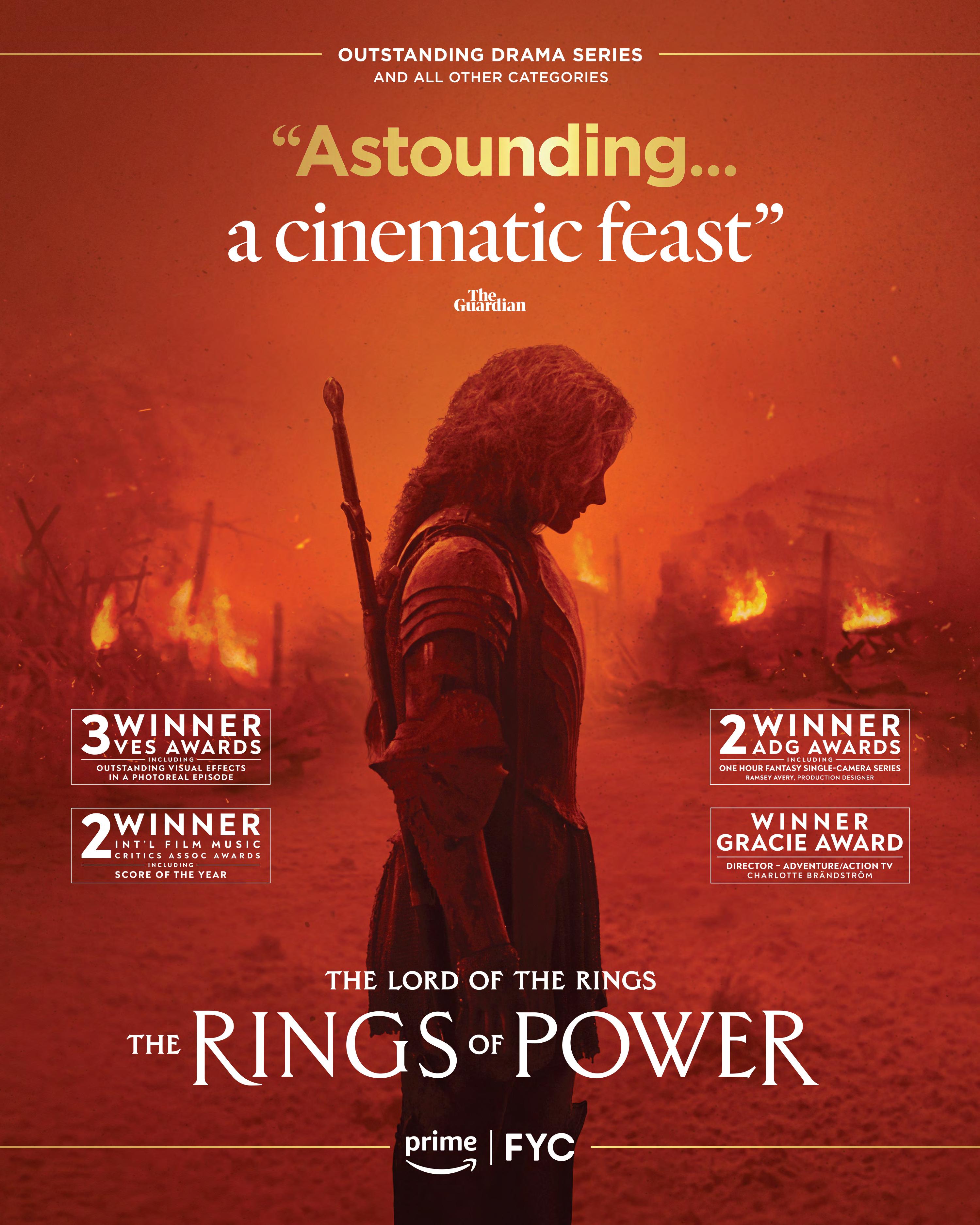
RAMATA-TOULAYE SY
THE FIRST-TIME DIRECTOR REFLECTS ON HER ANCESTRY IN COMPETITION ENTRY
Senegalese and French director Ramata-Toulaye Sy is only the second Black woman to make it into Competition in Cannes. Her debut feature, Banel & Adama , follows in the footsteps of Mati Diop’s 2019 Atlantics . The screenwriter and director draws on her roots in the Fulani, or Peul, culture of the Futa region in northern Senegal for her magic-realist film about a young couple whose passion brings chaos to their remote rural community. “The people of Futa have the reputation of being very dignified and sticking to their community,” says Sy, who was born and grew up in France. “I was raised in the Fulani tradition at home and French culture outside.”
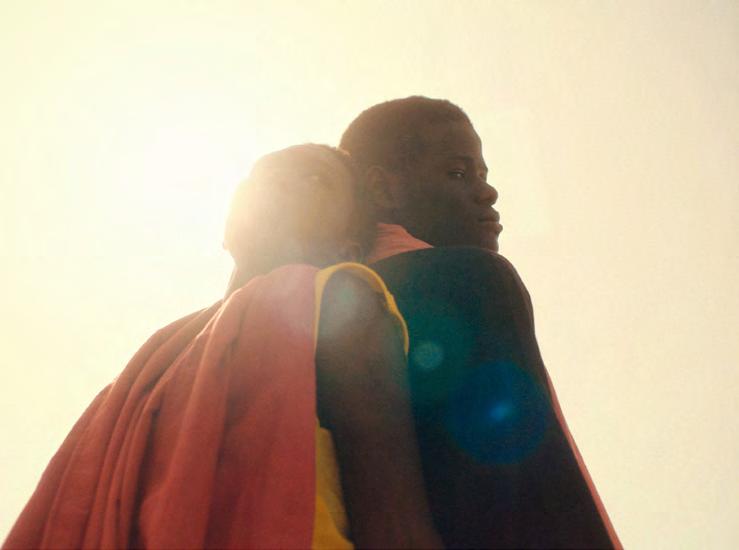
Inspiration for Banel & Adama came from a desire to create a tragic African heroine on par with Pierre Corneille’s Médée or Jean Racine’s Phèdre. “We don’t really have these mythical, tragic characters, or we do, but very few,” says Sy, who wrote the screenplay as her graduation work for the French film school La Fémis, where she studied screenwriting.
“I didn’t want to direct. Literature and writing are my passion,” she says, citing her favorite authors as Toni Morrison, Maya Angelou, Chimamanda Ngozi Adichie and Jesmyn Ward, as well as William Faulkner. But tragedy pushed Sy into the director’s chair after French producer Éric Névé, who had acquired the screenplay and was trying to get the project off the ground, died suddenly in 2019. “He was my godfather in the cinema world. His wife, Maud Leclair, said, ‘You need to do this for Eric,’ and so I did it for him as an homage.”
Mixing 17th Century literary influences with Senegalese storytelling traditions, Sy describes her film as “a patchwork” representing different parts of her identity. “Yes, I was born in France, and I am culturally French, but I am above all African because I am Black and my parents come from Senegal. I also consider myself a French cineaste.”
STÉPHAN CASTANG
THE DIRECTOR OF VINCENT MUST DIE PROVES THE ZOMBIE MOVIE IS UNALIVE AND KICKING

In an early scene of French director Stéphan Castang’s Cannes Critics’ Week entry Vincent Must Die, a colleague of the film’s titular protagonist whacks him around the head with his laptop. A little later, another workmate stabs him in the arm. “He’s just an average guy who wakes up one morning to discover that everyone wants to kill him,” Castang explains. The debut feature follows in the wake of Julia Ducournau’s Raw and Just Philippot’s The Swarm as French genre titles to be championed by the first and second film-focused Critics’ Week.
Castang came late to film directing after spending two decades working as a theatre actor. “I always wanted to write and direct films but then I took a very long detour,” he says. He finally started exploring filmmaking with a short film, French Kids—in which a group of rebellious high school students react to an aggressive guidance counsellor—that played in the Generation 14plus section of Berlin in 2012. Subsequent shorts include the 2050-set sci-fi Panthéon Discount, set in a world where doctors have been replaced by a super-scanner that diagnoses ailments and treats them on the basis of the patient’s bank balance, and the octogenarian love-triangle tale Finale.
Vincent Must Die is one of the first projects to come to fruition for Wild West, the joint Blumhouse-style venture created by Thierry Lounas’ French film company Capricci and Goodfellas (ex-Wild Bunch International) in 2021 to develop and produce French genre cinema. The screenplay by Mathieu Naert was originally developed in Capricci’s So Film Genre Screenwriting Lab, which laid the foundations for the creation of Wild West.
“I was a script consultant on the residency but on another project,” says Castang. “Thierry asked me to look at the script and whether I would be interested in directing it. Initially, I wasn’t too keen, as I like to write my own films, but when I read it, I felt a complicity. There was something in it that chimed with my own neurosis. I felt I could find a place for myself in the story. I also like the way it mixed lots of genres. It’s not locked in absolute genre codes, it’s a love story with a sort of zombie angle as well.” —Melanie
Goodfellow
But beyond questions of origin and identity, Sy’s biggest hope for the film is that it will have universal appeal. “I want all women to recognize themselves in the character of Banel, in the same way there are universal films set in the United States, in which I recognize myself even if they’re American characters,” she says. “We need to do the same thing out of Africa. Just because a film is African with Black characters, it doesn’t mean white spectators can’t recognize themselves in those films, in the same way we recognize ourselves in films where the characters are predominantly white.” —Melanie
Goodfellow
8 DEADLINE.COM
BANEL & ADAMA
2023 FILM FESTIVAL CANNES
FT CANNES ONES TO WATCH CAMILLE DAMPIERRE/ASTOU FILMS
BANEL & ADAMA

HENRY: PORTRAIT OF A SERIOUS KILLER
Alicia Vikander stands up to a fearless Jude Law in Firebrand, Karim Aïnouz’s unvarnished look at Henry VIII’s last marriage
 ByBazBamigboye
ByBazBamigboye
It’s a solemn command from Firebrand’s first assistant director Lydia Carrie: “When you bow to the king, bow straight down,” she announces. “Don’t look at him; you’ll get your head cut off.” The fearsome monarch Carrie is referring to is Henry VIII, and on this particular day, Jude Law’s king is in an ax-swinging mood. The background artists on Karim Aïnouz’s set comply to orders and stare down at their toes. Before them, seated on thrones arranged on a raised plinth, is the potentate in question, and Katherine Parr, his queen.
Henry’s had a few wives. Katherine is his sixth and every time she opens her mouth, she’s in mortal danger. How does she survive? That’s the burning question asked by Firebrand, which Aïnouz describes as a
“psychological thriller”. History tells us that Parr outlived her husband, but little is known about Parr after that, though she was the first woman in England to have a book published in her own name.
Katherine was a smart woman who had to strategize in order to keep her head on her shoulders, says Alicia Vikander, the Academy Award-winning actress playing Parr. She knew exactly what she had to do “to live with a man who is like a beast” and “she needs to read him, constantly.”
Firebrand’s set today is the ancient Haddon Hall, built with local Derbyshire, England sandstone thick enough to retain 900 years’ worth of secrets within its walls. Aïnouz accompanies Vikander, wearing a grey tracksuit,
to the Hall’s gardens to go through the scene planned for the day’s shoot: It’s to be a Maypole dance to welcome in the spring.
A corpulent person soon appears, bedecked in a bejeweled coat with a fox-head fur wrapped over his shoulders. “It has to be real otherwise it looks like teddy bears,” says costume designer Michael O’Connor. Before PETA becomes involved, he quickly adds, “They’re old cut-up fur coats, so they’re sustainable.”
The man with the wide girth continues toward the filmmaker and the actress. He’s having trouble with his legs and the walk is more of a wobble. It’s before 9 a.m. and a visitor wonders if the mystery man with whiskers on his square-jawed face is Law’s stand-in.
“It’s Jude,” Firebrand producer Gabrielle Tana says matter-of-factly. “There’s Alicia in her civvies. They’re all here to rehearse. That’s Karim’s process.”
Law fills the throne as he sits. White stockinged legs protrude from ruby-red robes. He stares at Vikander, who by now has partnered with Sam Riley, playing the cowardly courtier Thomas Seymour. They bow, heads down, then dance. Vikander, who studied ballet when she was younger, moves delicately as Karim and Law look on.
Law shifts his padded frame. He was up with the larks to be dressed in specially made undergarments of the period. “No zips and buttons,” says O’Connor, noting that Law’s undies had to be tied up with silk ribbons.
Such an endeavor signified immense wealth. “You couldn’t possibly dress yourself,” O’Connor scoffs. “Only those highborn and with money could afford to have an army of dressers to get you ready in the morning.”
Aïnouz wanted to work with O’Connor because of the costumes he created for Francis Lee’s Ammonite. The filmmaker asked O’Connor how they could make “Ammonite on this film, in terms of spareness, stripping it down.”
“I said: ‘Well, she’s scrabbling around for dinosaur poo on the South Coast, and this is the court of Henry VIII, so they’re not really related to each other.’ But he wanted to get into what happens behind closed doors. It’s about how to transpose his style onto this subject. He wanted to coarsen it up a bit,” says O’Connor, though there is some splendor.
Only thespians portraying powerful sovereigns in a major movie can wallow in such trappings nowadays. So it was that O’Connor and his team were up early to kit out Law in a full padded body suit and then dress him in finery before turning him over to Oscar-winning makeup and hair designer Jenny Shircore to pad his cheeks, Marlon Brando Godfather style, and attend to his coiffure.
Shircore has been on almost intimate terms with Law’s torso; painting it with makeup and measuring his padded posterior to ensure the
10 DEADLINE.COM
LARRY D.
ENTERTAINMENT
2023 FILM FESTIVAL CANNES
HORRICKS/BROUHAHA
FT FEATURE
From left: Eddie Marsan, Alicia Vikander and director Karim Aïnouz.
buttocks tallied with someone else’s bare bottom, to use as a stand-in for a scene involving a horrifying sexual assault on Parr.
Tana admits that “a lot of actors were scared” of this Henry VIII. “He’s a murderer, a butcher,” she says.
“They didn’t want to have to go through that physical transformation, and all they could think about was that Hans Holbein portrait of Henry as this very stout, big thing,” she says. “They couldn’t get that out of their mind. There’s something very dark about that period and this Henry. But Jude relishes this, and he has totally embraced it.”
One of Aïnouz’s edicts is that on the set nobody talks to the actors except him. “So on the set, Jude is Henry,” Tana tells us.
She understands it. “It’s about protecting those characters. When they’re on the set that’s who they are. It’s his interactions with the actors and those interactions are sacrosanct,” Tana says. “He’s the director, he’s the auteur. They’re discovering their characters as they’re playing them.”
Aïnouz, too. Born to a Brazilian mother and an Algerian father who met at graduate school in the U.S., British medieval history hadn’t been on his curriculum growing up in Brazil. “Karim didn’t even know who Henry VIII was until I gave him the screenplay,” Tana says, which is why she wanted him to direct Firebrand She wanted a filmmaker who could look at other peoples’ stories “from the outside”.
Tana knew this from watching the heartwrenching betrayals explored in his films such as Futuro Beach and The Invisible Life, a success at Cannes in Un Certain Regard.
Tana notes how some British period films “fall into the same old tropes.” She says, “Karim doesn’t countenance tropes, but delights in all the things that are about the period.”
Like what? “In a way, the horrors of it,” she
says with alarm. “It’s not romanticized, it’s a fascinating portrait of a horrible marriage. There was no way out of it for her. ”
And Aïnouz has been absorbed with the historical medical details relating to Henry’s painful venous leg ulcers. “The maggots, the leeches and all of that,” that physicians of the day applied when they opened the wounds to drain and air them, Tana says.
Shircore consulted with surgeons about venous ulcers so she could contract FX designers to build leg wounds oozing with a variety of matter that slithers and apply them to Law’s legs. “It’s all down to Jude,” Shircore says. “He knows what he wants. He knew he could achieve it.”
As with Aïnouz, Vikander came to Parr from an outsider’s perspective, though she confesses to a certain “unsaid pressure” in portraying a royal character. But “Karim has taken an artistic freedom in telling quite an intimate story about a relationship,” she notes. “He shows quite a domestic version of what happened at court.”
There’s also a coarseness in the court that Aïnouz puts on display at Haddon Hall. “We’ve really tried to strip down the costume drama,” Vikander says.

Although the great state rooms, minstrels’ gallery and the acres of terraced gardens are splendid to behold, they’re not as grand as the palaces down south. “We are not in the main castle of London,” Vikander explains, “because, and this was accurate during the time, the court has to escape the plague, so this is set much smaller. It’s like when the royal court goes camping for a while.”
Vikander studied Parr’s own writings to help get a sense of Parr’s life. “For me, it was a lot of trying to get in the head of this woman and to understand her faith in God. The question of not having faith almost didn’t exist.” Parr’s words helped give Vikander a realization. “Not
only of Katherine, but of how women at that time lived and how they really came second. They were such a low-tier citizen.”
Vikander couldn’t comprehend how Parr could write long essays and poems about her fantastic husband, “And yet, at certain points of her life, he wants her dead. She’s in this very unhealthy and abusive relationship, but at some level it also needs to be functioning, and she was considered a good wife. I think it’s interesting to think about women in general, at whatever generation or time you’re in, you need to survive, so you also need to find your place in this reality and to find a way for you to not fully succumb to the tragedy that you are in.”
The stance Parr took often worked in her favor. Henry admired her intelligence to such an extent that he made her regent when he went with his army to France. “We really do play with the idea that she had quite a lot of influence on him,” she says.
We’re sitting in an outbuilding that has been turned into her green room, which she has brightened up with flowers.
The talk then turns to monsters. The ones who run the world now and how they relate to monsters in the past. “Henry was a monster and there are dictators like him living now,” she says, without identifying the 21st century culprits. Her question is, how would you survive? “How would a woman survive,” she corrects herself. “What would you say and how would you behave?”
A look back at Henry’s six wives suggests that history doesn’t really focus on the survivors. You don’t hear so much about Catherine of Aragon and Anne of Cleves, whom he divorced, but everyone remembers Anne Boleyn and Catherine Howard, who were executed, and Jane Seymour, who died shortly after childbirth.
“Isn’t that sad?” says Vikander. “They’re only interested in the women if they’re dead.” A
2023 FILM FESTIVAL CANNES DEADLINE.COM 11
Alicia Vikander as Katherine Parr.
Wim WENDERS
With Anselm and Perfect Days , the German auteur comes to Cannes with a two-for-one offer
BY DAMON WISE
A A A A A
Wim Wenders could be the Bob Dylan of European cinema: always around, always the same, always different. Sometimes he’ll arrive in Cannes with a doc, like 2018’s Pope Francis: A Man of His Word, and sometimes he’ll come with a work of fiction, like his timeless 1984 Palme d’Or winner Paris, Texas. This year, he’s coming with one of each: Anselm, a 3D portrait of artist Anselm Kiefer, and Perfect Days, the story of a Tokyo toilet cleaner. Ironically, Wenders thought he’d have more time on his hands after the pandemic and moving on from being president of the European Film Academy. How wrong he was.

You have two films in Cannes. Which would you prefer to start with?
Let’s start with the one that was in the works longer. That would be Anselm,
which was shot all through the pandemic and took quite a bit longer.
You’ve become very prolific in terms of documentaries lately in
your career. What appeals to you about documentaries, and why Anselm Kiefer?
I feel that the field of documentaries is wide open and that you have the freedom to redefine it with each film.
I’ve explored it extensively, let’s say, from Buena Vista Social Club to Pina or The Salt of the Earth, and each time the result was an entirely different language. I love it when the subject invents its own form and prefer that to imposing a formula or method on a film beforehand. Then you not only discover a new world, but also the way to approach it from scratch. I’m convinced that audiences feel that energy and are taking part in a whole new adventure of discovery.
The idea for a film with Anselm Kiefer didn’t come out of the blue. I’ve known him for 30 years, and at the beginning of our relationship in the ’80s, we talked about making a film together. In the end, we didn’t do it because Anselm moved to France, and I eventually moved to America for quite a while. But I followed his
work ever since, and we still met every now and then, reminding each other of our old plan. And then, about three years ago, I visited him for the first time in his huge place in the South of France, Barjac, where he built a whole landscape of gallery houses, underground structures like crypts and tunnels, even a roofed amphitheater and an immense cityscape of crumbling towers. I had never seen anything like it. That’s when our film idea immediately imposed itself again, very powerfully. And soon afterward, we met again in his studio near Paris, in Croissy, where I also hadn’t been before. And that was really what clinched it. After seeing that studio and the work he was doing there, I said, “We shouldn’t wait any longer; let’s do it now.”
Is this a study of the person or the work?
[Laughs]. The man is truly an interesting character, quite wild and independent. I like him a lot, yes, but it’s his work that I was interested in. With Pina, too, I didn’t go into a biography of Pina Bausch, same with the Buena Vista Social Club guys. I am interested in the work, and this film is a “biography of his work”, so to speak. Anselm and I have a lot in common. We were born in the same year, 1945, he a bit before the end of the war, me a bit after that. We definitely share a lot of the history that so strongly appears in his work. The scope of his painterly world is tremendous. It includes history, not only the German one, the origins of our myths, just as well as religion, astronomy, alchemy, physics. The range of his explorations really knows no limits, and he’s just as well a poet and a scientist than a painter and sculptor.
How do you approach a documentary—is it the same as your
12 DEADLINE.COM
GETTY IMAGES
CA NNES FILM FES TIVAL

fiction narratives? Are you the same person behind the camera?
I’m the same person behind the camera, sure. It might sound a little cryptic, but I basically approach my documentaries as if they were fiction films, and I like to approach my fictional films as if they were documentaries. I try to be fluid and to not be preconceived. Fiction thrives on an injection of reality, and the documentary form loves to include fictional elements. In a documentary, you try to find a thread, something that leads you through it, so you’re almost in search of a story. While in a fiction film, I enjoy the freedom that can come in when elements of reality enter it.
Has the technology changed since you did Pina? That’s a fair while ago. Is it easier to shoot in 3D now?
We did Pina on prototype equipment and remember that was before Avatar even came out. I was declared crazy. “Where do you want to show your 3D extravaganza!?” Then, God bless James Cameron, Avatar opened everywhere and there were suddenly a lot of theaters that could show Pina. And you’re right, with the technological development of 3D, I felt I was given a whole new approach to producing a poetic and immersive experience for the viewer inside the documentary field. Indeed, it was a different ballgame to shoot in 6K instead of high-def [like Pina] and to have all the tools I only dreamed of at the time. We even developed an enormous drone to actually carry a two-camera 3D rig for the landscape shots.
What is it about Anselm’s work that lends itself to 3D?
3D involves you. Other parts of your brain are put into action to see three dimensions. You’re altogether more “there”, both mentally and physically. And Anselm’s work needs your entire perception. You leaf through a catalog, and it doesn’t mean anything. You stand in front of the work or walk through it, and you’re completely
overwhelmed. I wanted to take the audience into that experience, both of him working as well as into the work itself.

How did you manage to make another feature film, Perfect Days, in all this time?
When we finished shooting, Anselm and I had a final cut. Post-production had to continue in all these different departments, from sound to visual effects, color correction and so on. There were months and months in which other people had to work, which I essentially just had to supervise. 3D is extremely demanding in postproduction. I really had time on my hands. And then I all of a sudden got this amazing invitation, out of nowhere: could I possibly think about making a film in Japan? And I said, “Yes, but only if it can happen fast because I’m not available for too long.”
That proposition was a very open invitation and a Carte Blanche in many ways. And with it came an amazing partner and writer, Takuma Takasaki. He came to Berlin, and together we wrote the basic story in two weeks. And we found the title, too. Perfect Days. Titles are so important to drive a project! I loved this one from the beginning based on a Lou Reed song. Soon afterward, I found myself going to Tokyo for two weeks to look for locations and to meet the one and only actor for this project: Kôji Yakusho. I knew his work ever since Shall We Dance and Babel and had always been utterly
impressed with him. When the possibility opened up that we could work together, it seemed too beautiful to be true. And we got along great on the spot. The language barrier was no problem. We spoke the same language and needed no words. The script was written for him, so to speak, and he became very involved in the making of the film and the preparation.
In October, I went back to Tokyo, and we shot Perfect Days in an amazing 17 days. Yes, that is fast. I love that intensity of shooting in such a condensed way. Actors love it too when they do not have to sit around waiting but can really live a story, almost as it happens. With my director of photography, Franz Lustig, we are a great team. He shot the entire film handheld, like a living tripod.
And what’s that story about, in your own words?
It’s a very Japanese story deeply rooted in Japanese culture. It digs deep into the idea of what “cleaning” means and what “service” means. The most unclean places in our Western civilization are obviously toilets. Toilets are not part of our culture; they rather represent the contrary. In Japan, there’s a whole different attitude surrounding “The Toilet”. They are essential places of everyday culture. Our story involves the most amazing “toilet temples” built in the city of Tokyo, in the Shibuya area, by Japanese master architects. Then again, this is not a film about toilets.
It is about the spirit of a man who takes care of these places. He does it with a great modesty, in the spirit of “service”, which has a whole different history in Japan. Hirayama is the man’s name in our story. He had a very different, “privileged” past in a former life but is now dedicated to these places. And to nature, trees especially. And to reading. And to listening to his favorite music. I won’t tell you more. This film is an ode to a spirit of service and to “nowness”: to live your life in the present tense.
The common good in Japan is still something altogether different than in our Western civilization, where the common good was a sad victim of the pandemic. The idea of the common good has vanished more and more, together with the sense of truth that has also gone down the drain lately. Perfect Days is about a man who finds a sense of life in service and restriction, even poverty. His routine might, at first sight, appear boring to us, but soon you realize that it is the opposite: it is filled with beauty and purpose. This man is able to live his life to the fullest.
Could you have foreseen these two films both being in Cannes?
No way [laughs]. When I finished the cut of Anselm, I told Thierry Fremaux that I had a film that I would love to show in Cannes, and he was intrigued. He liked it very much and suggested an Out of Competition slot. So Anselm, in my book, was already going to Cannes. Now, postproduction in 3D is more demanding than in any other medium, so a window opened for the other film, and I edited it almost as fast as I shot it. The Japanese producers said to me, “It looks like we could be ready in time for Cannes. Would you allow us to send it in?” I responded: “Well you must know that I may already have a film in Cannes, but who am I to forbid this to you?” And then the unforeseen happened: Frémaux called me a day before the press conference and said he would like to invite both films. I sat down and took a deep breath. A
14 DEADLINE.COM
Wim Wenders' Cannes entry Anselm ROAD MOVIES
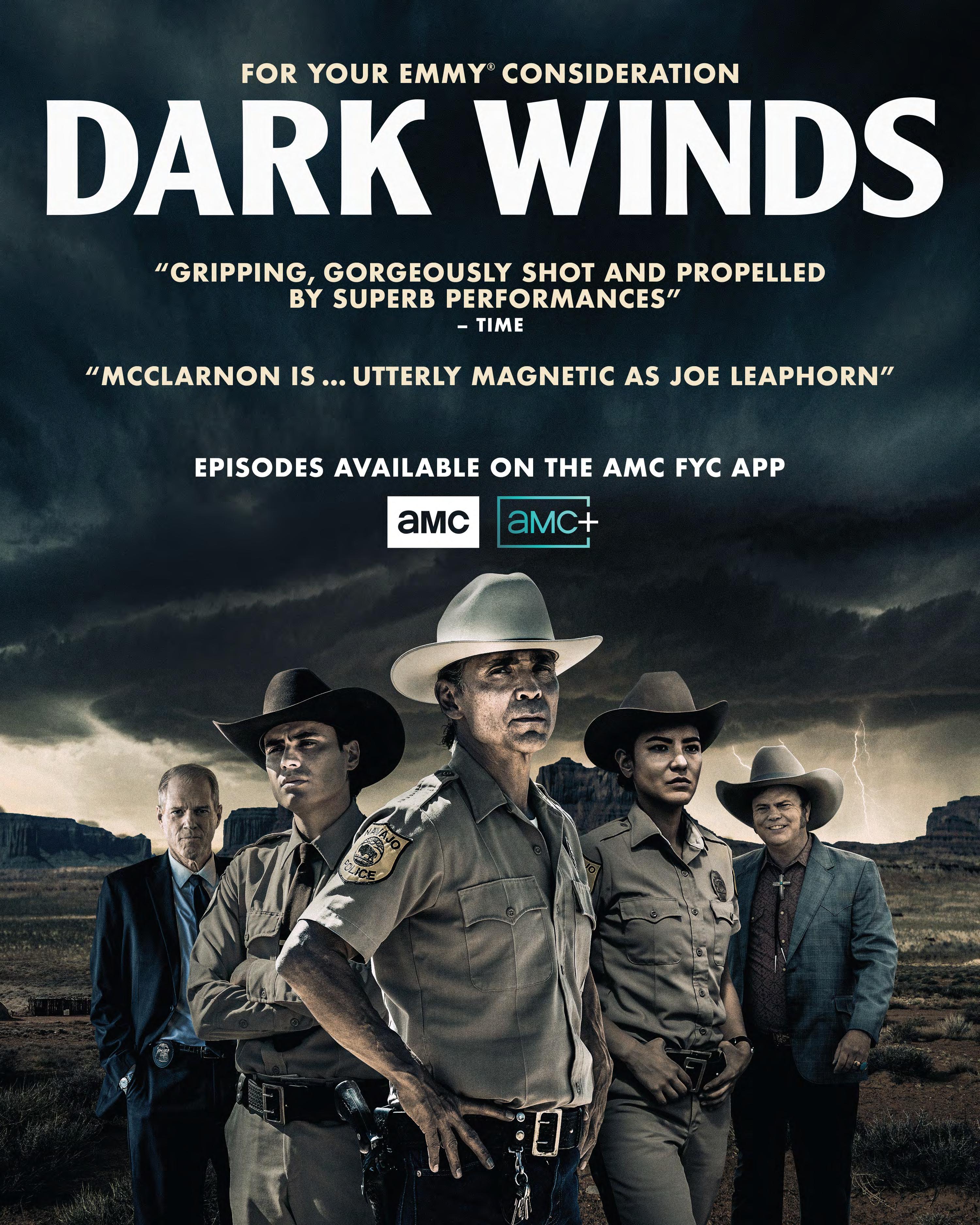


Alice ROHRWACHER
The Italian director goes for gold with her archaeological drama La chimera
BY DAMON WISE
In less than 10 years, Alice Rohrwacher has carved out a formidable reputation for herself, notably by gatecrashing the boys’ club that is traditionally the Cannes competition, and the fact that she did so in 2014 with only her second film, The Wonders, is further proof of a distinctive talent. One competition slot doesn’t guarantee another, yet Rohrwacher was back in 2018 with the follow-up, Happy as Lazzaro. Both films won prizes— Grand Prix and Best Screenplay, respectively—which means that expectations are high for the Oscar-nominated 41-year-old Italian, whose new film, La chimera, makes it three in a row.
What can you reveal to us about La chimera?
Nothing! [Laughs] It’s very difficult to talk about the film when you have not seen it, but I can tell you that it’s the story of a group of grave robbers. We call them tombaroli in Italy, and they do it because some of the world’s most precious artifacts are hidden in Etruscan tombs. The main character is a British archeologist, played by
Josh O’Connor, and the title, La chimera, represents what we aim for and can never reach. For some, a chimera is easy money. For other people, it’s a secret goal that cannot be attained so easily.
Who else do you have starring in the movie?
There’s a very important character played by Isabella Rossellini, an old
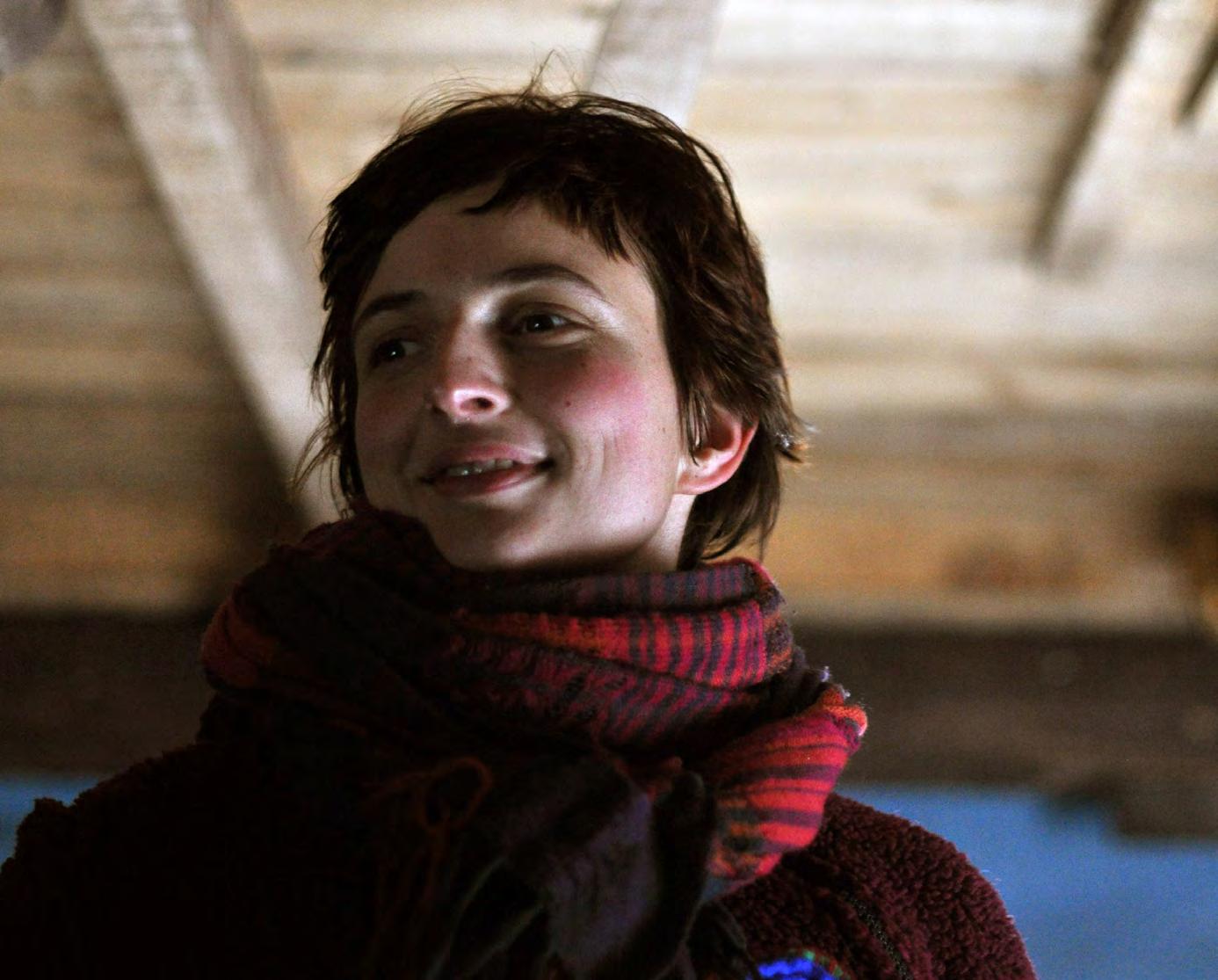
lady living with the memory of her daughter. And then there’s a young singing student, played by Carol Duarte, a Brazilian actress who learned Italian to play the role, and there’s also a small part played by my sister Alba. But it’s an ensemble with many different roles that are played by local people. Some of them are non-professional actors. Mainly my neighbors [laughs].
What inspired the story?
Accounts of the archeological treasures that were illegally found at night in the woods, under the ground, fed my childhood. It’s somehow an epic narrative that is part of the territory I was born in and grew up in, and it’s part of the epic narrative of Italy, as with all the other countries that had a strong past civilization. But I
do remember that in the ’80s, while I was growing up, men would go out on a treasure hunt at night to try and steal any artifacts that they could find. It was almost a stereotype. However, it fascinated me very much, and, indeed, I do think that my work as a filmmaker is somehow connected to archeology. My writing process has a connection with the process of the archeological in terms of findings and practice, so I thought it was a good idea to combine these two universes: filmmaking and archeology.
Whydidyoudecidetobecome a filmmaker?
Probably because there were stories that I could not write, but I could see.
Childhood seems to be a very big influence on your work, your own
18 DEADLINE.COM
A
A A A A
FILM MOVEMENT/EVERETT COLLECTION/TEMPESTA
childhood in particular.
I don’t know if my childhood is such a big influence on my filmmaking. I know that in the territory I grew up in I was a foreigner, since my father—who’s German—is a foreigner. I somehow had the ability to see that land, that place, with different eyes than the people around me, who were somehow more used to the landscape and the place. It’s certainly a source of inspiration for my imagination and the clarity of my gaze on the marvels surrounding me. But I would never tell a story related to my childhood if I were not sure that it tells a story of human beings in general.
You were very fortunate in that your very first film, Corpo celeste premiered at Cannes in 2011. What was your experience there, and were you surprised to get into Directors’ Fortnight?
I remember that it was a wonderful experience. It was all very new for me, and it impressed me so much. I hadn’t even made a short film before that, and seeing my film selected in Cannes was already beyond my imagination. But the experience of sharing that screening with an audience… It was just so emotional for me. I’ll never forget it.
It’s a very confident film. Your style has grown since then, but it’s still a very good debut. How do you feel about it now?
I don’t know if it was a matter of confidence or of feeling irresponsible and unaware. I felt a great deal of freedom, and I still look for that freedom. The freedom was in my angle and perspective on the world that I wanted to attract viewers into. That was mainly my goal: not so much telling a story but opening a door onto a world that I wanted people to go into. That’s why I’m talking about instinct and irresponsibility. I remember the first day I went on set, I’d never seen a crew in my life before. I didn’t know who did what, but I felt such a force and a beauty in collaborating in this team effort to make the film. The collective aspect of filmmaking gave me strength, and really, I admire the
beauty of that effort.
You hit your groove with your second film, The Wonders. Critics use the term ‘magic realism’ a lot to describe it. Were you aware of that emerging style, and did you consciously develop it to get where you are today?

Yes. I think that it’s important not so much to change but to evolve. And this is the reason why I like to continue working with the same collaborators because it’s as if I were saying to them, “OK, we got here. Now let’s continue the journey together. Let’s grow together in this world we wish to share and portray.” And, differently from Corpo celeste, The Wonders was a story that was much closer to home than the first film, and therefore it was more difficult in a way because I felt a shyness that I did not feel in my first film. But I like challenges. I think that these difficult things can help you grow and mature.
As for the definition of magic realism, I’ve read it very often myself, but it was never my intention nor my will. My approach is in talking about reality the way I see it, and I try to grasp the magic that I believe is in reality. So, it’s my gaze that sees the enchantment and the wonders in looking around myself. I don’t add it on in a sort of extra dosage of it.
Your next film, Happy as Lazzaro, had the best reviews you’ve had so far and put you into the main Competition for the first time. How important is that film to you?
I think it’s the one I have the most serene relationship with, in a way,
because I feel I did my homework with that film. It’s a film that I wanted to be that way, and my sensation was of being completely fulfilled in making it. It’s like when Michelangelo said, “I see the statue in the block of marble. It’s already there—I just must carve it out.” That’s what I feel about Happy as Lazzaro. I’m not comparing myself to Michelangelo [laughs]. I’m just saying that the most beautiful feeling for a filmmaker is when you feel that you need to give life to a film, and it’s right there in front of you. Of course, I see its faults, but it’s like being in a relationship with another human being—you love their faults and their failures as well.
La chimera brings you back in Competition. Do you feel any pressure? There are famously very few women competing every year…
Yeah, indeed. The fact itself of being in the Official Selection of the festival is already incredible because it means that I got what I wanted, in a way. So, I’m very grateful to the selection committee that chose my film. And, yes, the Competition adds some pressure, but the most difficult step is to be selected and to have the opportunity of presenting your film at the Cannes Film Festival in front of the Cannes Film Festival audience. Films have a strange life in a big festival. They can shine immediately and then disappear a split second after, or they can be silent and shine later on. Of course, different epochs, different times react to a film in different ways, and awards normally reflect the moment. But the life of a film can be
absolutely unexpected after it’s been presented to an audience.
Speaking of awards, you had the experience of the Oscars this year with your short film Le pupille What was that like for you?
It was very funny, in a way, being able to attend the ceremony with Alfonso Cuarón. There are many things that I didn’t know and I could never have imagined. Amongst which, what was least expected was that there was a very familial atmosphere at the ceremony. It was just extraordinary for a short film—which tells the story of 17 little girls in an orphanage in Italy, from the pen of [author] Elsa Morante—to be selected for the Academy Awards.
Why did you choose to make a short film at this point in your career? You said earlier that you hadn’t even made one before you made your first movie.
It was actually a long short film because it nearly lasted 40 minutes.
It was Alfonso Cuarón that asked me to make a Christmas film of the runtime that I wished, and this is one of the very positive aspects of platforms—the freedom of runtime. If you think about it, when cinematography was invented, films were short: one minute, 15 minutes, up to 45 minutes for [Jean Vigo’s 1933 featurette] Zéro de conduite, and nowadays, normally, a feature film lasts two hours. It was the complete freedom that I most appreciated, and I can only be very thankful to Alfonso for this experience. I don’t know if I’ll make another one in the future. If I’m given the opportunity, why not?
Final question. This is your fourth time in Cannes with a movie. What is it about the film festival that you look forward to the most?
It’s very difficult to describe. You’ll never get used to the emotions that you feel. It’s a mixture of fear, happiness, terror, joy, shame, embarrassment, pride—all of these together when it’s the first official screening in Cannes. It is really very, very difficult to describe, but I’m looking forward to it, and I cherish the emotions. A
DEADLINE.COM 19
Alice Rohrwacher's Cannes competion entry La chimera .
Jeffrey WRIGHT
BY DAMON WISE
It’s a testament to Jeffrey Wright’s onscreen presence that he is now the longest-serving Felix Leiter—an often-thankless part that’s perhaps the 007-universe equivalent of a Star Trek redshirt—in the entire James Bond franchise. But, then, Wright has a charismatic gravitas that has served him well in the years since Basquiat, an experimental portrait of the ill-fated New York graffiti artist, first launched him in 1986. Emmy-nominated for his stint in HBO’s Westworld, he comes to Cannes with his second Wes Anderson hook-up, Asteroid City, after stealing the show in The French Dispatch as food writer Roebuck Wright.

Wes Anderson’s films are always shrouded in secrecy, but what can you say about Asteroid City? Well, it’s more Wes Anderson [laughs]. It’s set in a fictional town in the American West of 1955, or at least it was 1955 when last I understood it to be. There’s a gathering around science and innovation centered on a group of young inventors or stargazers’ , as we call them. The story flows from that until it doesn’t, and it’s disrupted by an event that affects everyone. When I read the scripts, I asked Wes if he had written it during lockdown. He said he had. It made a poetical sense to me that that was the case. But it’s a wonderful, ironic, and quirky, but also fantastical film. Perhaps in a way that many of Wes’s films are fantastical, but I found this one particularly so. And it’s a story that, for me, became even richer and more interesting on performing it. It really unfolded with
increasing detail and wonder as we got together to put it on its feet.
What can you reveal about the character you play?
I play General Grif Gibson, who’s a five-star general. He’s the host for this event, a gathering of young, brilliant scientists and inventors. And he’s there because the United States military has an interest in these young minds and their various experiments. And so, he oversees the days spent there and the itinerary.
How did you first get involved with Wes Anderson?
I first got involved in the somewhat usual fashion when my agent reached out and said that Wes would like to meet me. This was, I guess—since the pandemic—four or five years ago. My agent said that Wes would like to meet me to talk about an upcoming project
he had planned in which he’d written a part with me in mind. As it turned out, I was traveling with my kids to Paris later that week, and Wes was living in Paris at the time. We met at a cafe in SaintGermain and talked about The French Dispatch and the character of Roebuck Wright. And I found out over lunch that he had seen pretty much every play I’d ever done in New York.
I was very touched by that and surprised because I hadn’t met him backstage after any of those shows. And it was very gratifying to know that he had taken the time to do that, and that, after having taken in my work over so many years, he’d kept me in mind with the intent to work with me someday.
And so, The French Dispatch was the beginning of our working relationship.
Roebuck Wright would be a fantastic part for any actor. It’s probably one of the best parts in any of Wes Anderson’s films, to be quite honest.
I couldn’t say [laughs]. There are so many wonderful characters and performances in Wes’s films. But when he sent me the script, and it was only Roebuck Wright’s story that he sent me, I just immediately fell in love with the words on that page. It was one of the most carefully, wonderfully written pieces that I had read. And by the time
we got to set, I knew every comma and dash in the thing. It just spoke to me.
There are so many characters in that film, but Roebuck Wright is one of the more real and emotionally grounded.
Yeah. All the characters in The French Dispatch were autobiographical for him in their own ways. I think it was a very personal film for him. But you’re a writer, so you’re biased.
What’s Wes like to work with? We hear that he’s a perfectionist and obviously a stylist.
I’m probably less stylistic in my life than Wes, but I’m equally a perfectionist. So, I understand him, and I know what he wants. He’s all of that and a real taskmaster but in the best way. He has a very vivid vision for his films, clearly, and he asks a group of actors to come together that he believes can help him realize that vision. Because he has such a specific and personal signature, we all understand what he’s doing—and if we don’t, then we’re in the wrong place. We understand that we are there to be in service to him and to his ideas and his framework. I find that to be gratifying. Wes is unique.
So, I seriously enjoy working with him because of his specificity and also because I think his films are genuine.
20 DEADLINE.COM
The Asteroid City slicker spills the beans on Wes Anderson’s star-studded sci-fi
A
A A A A
DAVE J HOGAN/GETTY IMAGES

He’s not putting on an affectation. He genuinely desires to tell a story in this way on film. And I love partnering with him in that, to the extent that I do in these characters that I’ve been able to play with him. I just dig him. I think we all do.
You’re quite unusual, in terms of American actors, because you have a lot of stage experience. What is it about theater that attracted you in the first place?
Well, the actors that I appreciated growing up, and most actors of the generation that I watched as a kid, were theater actors. Folks like Dustin Hoffman, Sidney Poitier, [Marlon] Brando, these are theater actors. [Al] Pacino is a theater actor. And what first drew me to acting wasn’t film; it was theater. It was just going to the theater regularly as a kid with my mom in Washington [D.C.], seeing all the touring shows that came to town. Everything from Black musicals like The Wiz and Purlie to Annie, to James Whitmore in Give ’em Hell, Harry! and the one-man show that Avery Brooks did about Paul Robeson.
I just saw a whole range of stuff on stage, and I was just enthralled by it. And then, I got out of college and started doing theater. I didn’t do any plays in high school. I didn’t do much in college until very late. Getting back to Wes Anderson, Wes’s films are, in some ways, cinematic theater in that we all exist inside these dioramas that are essentially shifting stages for him. He also appreciates the written word in a way that’s rare for the cinema.

Is it the spontaneity of theater that appeals to you?
There’s a freedom and an unexpected aspect to it that lends itself to spontaneity. And there’s also greater immediacy in the relationship between the performance and the audience. The actor has greater control over that relationship, and that’s gratifying. I was an athlete many years ago, and there’s an athletic quality to acting, a physical quality that, at times, you can explore on film, but you do it at every
moment on stage. Even if there are quiet moments. There’s a physicality to it that I appreciate.
What’s been your favorite role you’ve played in theater?
I don’t know. Obviously, Angels in America is the most meaningful play and performance, really, of my career, because it was the epicenter of so much. It was early on in my career, and it spoiled me with the idea that we could actually do great things. And it was also happening at a time that really needed it. I mean, I don’t say that lightly: it had a profound relevance. So that’s a big one for me. But I also deeply enjoyed playing in SuzanLori Parks’ Topdog/Underdog, which recently had a revival.
Are you still keeping an eye on the theater?
I’ll get back on the stage at some point, I think. Yeah. I’ve been working on a lot of movies and, of course, Westworld, so I’ve been jumping from one thing to another. In fact, I was doing Westworld when we filmed Asteroid City. They gave me a break; I snuck off for a couple of weeks to go do it, and then went back. Right now, I’m taking a pause, because there’s been too many airplanes in too many directions over the past few years. I have a project coming out this year, as well as two others. And so, I would like to get back on the stage at some point.
This interview is going in Deadline’s Cannes magazine. What’s your experience with Cannes?
I’ve never been! This will be my first
trip. I’ve had several films there, and, for one reason or another, I didn’t make it. Mostly because I was working, and they wouldn’t let me. For example, the last time Wes had a film there, I was fully planning to go, and then I believe it was Westworld that didn’t see fit to allow me to take time off to go.
The films of yours that have been there are all very different: films like W, Only Lovers Left Alive, The French Dispatch Don’t forget Broken Flowers!
What’s the common denominator in these kinds of films?
Well, when I’ve chosen best, it’s been about the collaborators and the people I’ve worked with. And over time, I’ve gotten better and smarter and wiser in my choices. And that’s, lately, what I think is most central. Yes, of course, the story has to be interesting to me and meaningful, but you can have the best of stories and have the experience of telling those stories be completely undermined by the people that you work with. I’ve learned over time that that’s the key to this work: do it well and do it with others who are also doing it well—and who aren’t assholes.
Basquiat put you on the map. How do you feel about it now?
I’m pleased to see the ways in which Basquiat has grown in the eyes of the world, and I think that our film was the first introduction to him and his work for many people. And for that reason, I felt, at the beginning of working on it, that it needed to be done carefully. “Treat it gentle”, as Sidney
Bechet wrote. I felt that I was being asked to be a caretaker for the telling of this seriously delicate story. So, it’s just been amazing to me, from that moment to now, to see his influence on aesthetics around the world and in so many different media and ways. It’s cool because I fell in love with him as an artist when I began to study his work preparing for that role. His work, his language, just speaks to me really deeply. I get him, and I’m pleased to see that others are beginning to get him too. I’m proud that I might have played a little part in that.
What was it like working on the Bond movies? Would you go back if they reboot it?
Yeah. Or if there’s a ‘ghost of Felix Leiter’ moment, then I’ll certainly consider doing that [laughs]. But, at the same time, I had a great run on those films, together with Daniel [Craig], Barbara Broccoli and Michael Wilson and I’m very happy to let that be. I’d never expected to be a part of that franchise. I was an enormous geeky fan of the Bond films as a kid, as many of us were. I’m completely satisfied with what we did there. I’m happy to move on and let someone else be part of it.
What are you up to now?
I just finished a film last fall, which is, as of now, untitled, directed by a firsttime director, Cord Jefferson, who also wrote the script. It’s a film based on the Percival Everett novel, Erasure I think we did something interesting there. But after we finished that in the fall, I decided to take some time off and lay low with my daughter, who’s in her last year of high school, and play the role of executive assistant to her as she applied to colleges and all that stuff. I just decided to chill for a while. I looked up one day and realized that it’d been over 35 years since I’d done nothing but work as a professional actor. Now, I’d like to carry on working for as long as I’d like to work, but I also think I’m OK with a little break here and there right now. And so, I’m taking a break. A
22 DEADLINE.COM
COURTESY OF POP. 87 PRODUCTIONS/FOCUS FEATURES
Wes Anderson's Asteroid City .


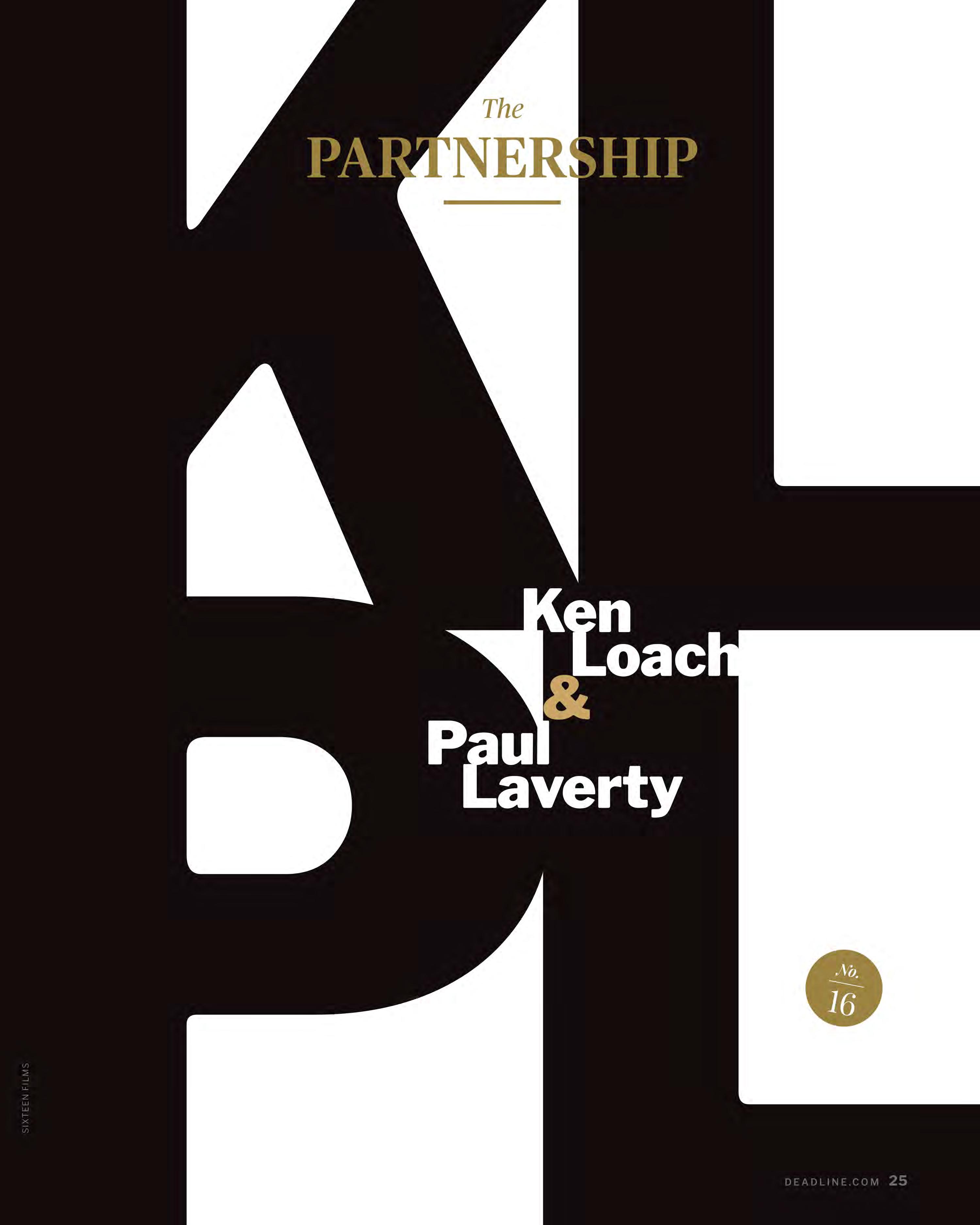

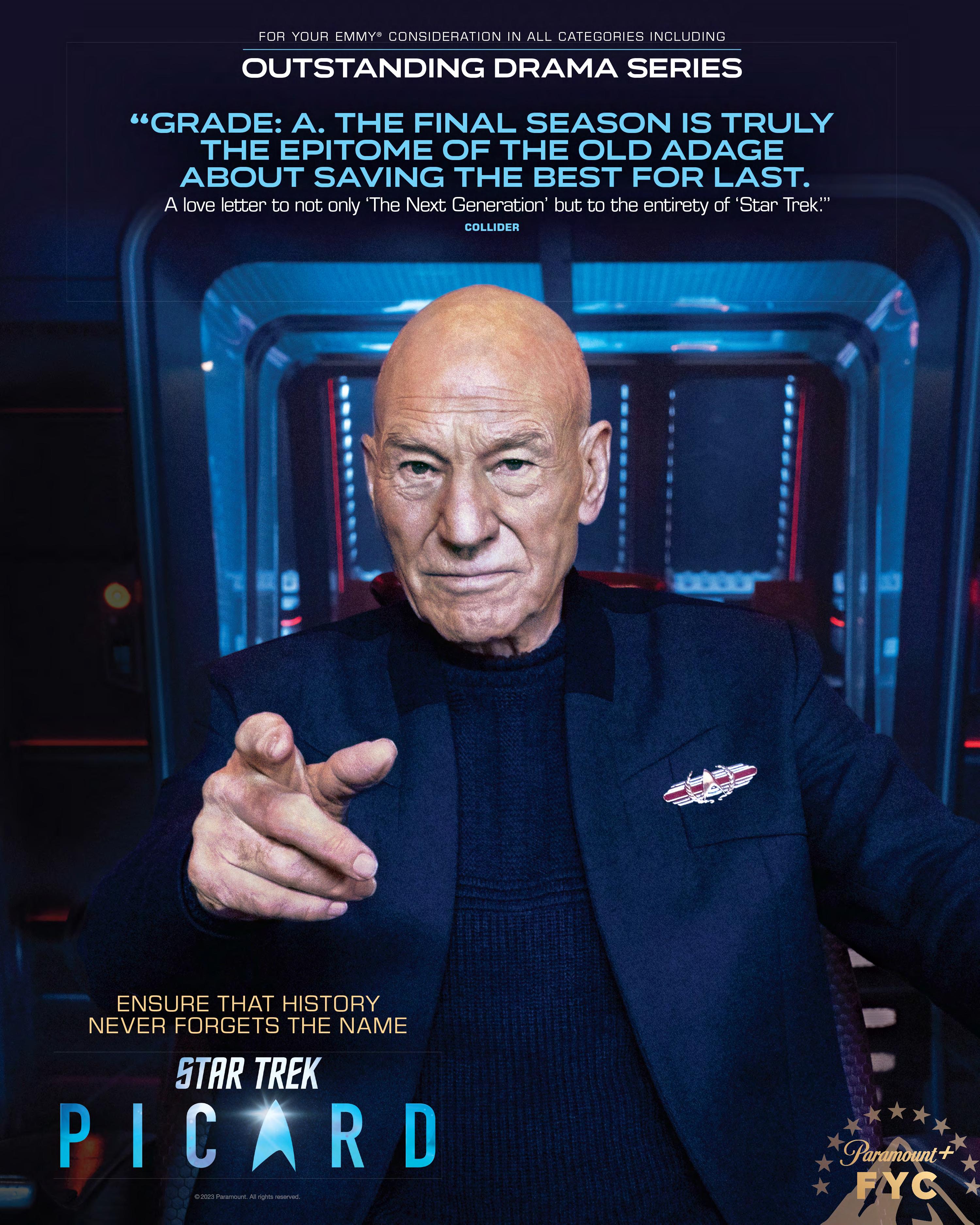


THE MADNESS OF KING LEAR
Chuck Norris, Shakespeare and a contract on a napkin: Peter Sellars reveals the inside story of Jean-Luc Godard’s strangest film
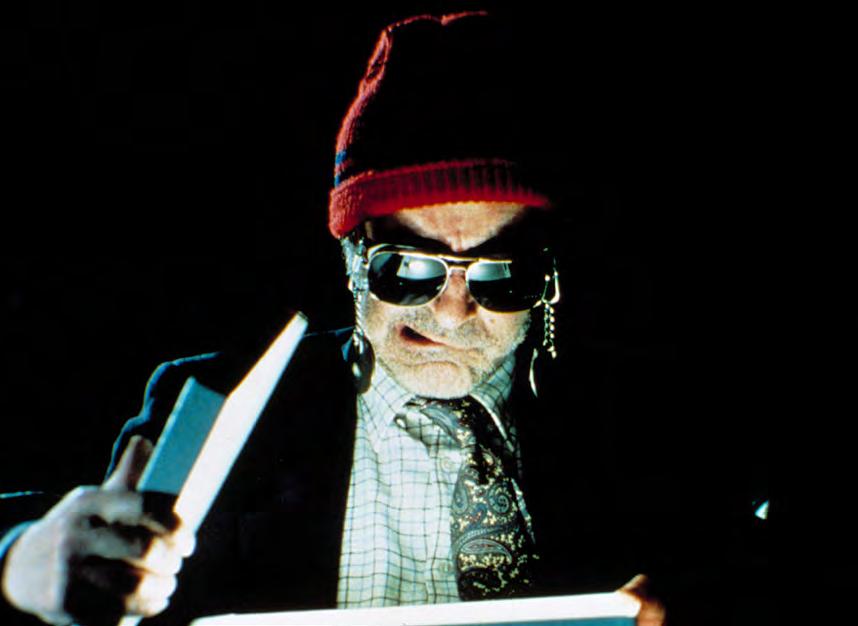 By Damon Wise
By Damon Wise
There are many stories about Jean-Luc Godard in Cannes, like the year he helped to shut it down (1968) because of the civil unrest that was sweeping France at the time. Then there was the time when (in 1985) he was ambushed in the Palais by a Belgian anarchist and hit in the face with a custard pie after the premiere of Détective . And, as recently as 2018, there was the time he conducted a press conference for his film The Image Book via Facetime from Switzerland, making journalists line up to speak into a mobile phone.

But the story that endures the most is the time he signed a contract on a napkin with Menahem Golan and Yoram Globus, CEOs of The Cannon Group, whose big hits that year were Invasion U.S.A., starring Chuck Norris, and Death Wish 3, with Charles Bronson. Godard— who died last year aged 92—was the high priest of art cinema and his work the epitome of avant-garde (The Onion
CANNES
FILM FESTIVAL
noted his passing with the headline: “Jean-Luc Godard Dies at End Of Life in Uncharacteristically Linear Narrative Choice”). And yet this chalk-and-cheese pairing made a weird kind of sense; Godard had agreed, for $1 million, to make an adaptation of William Shakespeare’s King Lear, written by and starring Norman Mailer, then perhaps the most famous writer in America. Mailer’s
daughter Kate would play Cordelia, the headstrong daughter who precipitates the king’s downfall.
Two years later, a workprint of the film debuted in Cannes to less than stellar reviews, and its backers’ horror was palpable (“He took Cannon for a ride,” fumed Globus). After a screening at Toronto, the film finally appeared as an ultra-limited release in the U.S. in the beginning of 1988. The New York Times described it as “a late Godardian practical joke, sometimes spiteful and mean, sometimes very beautiful, sometimes teetering on the edge of coherence and brilliance, often amateurish and, finally, as sad and embarrassing as the spectacle of a great, dignified man wearing a fishbowl over his head to get a laugh.” For The Washington Post, meanwhile, it was “like finding yourself in the middle of a poem whose meaning the poet refuses to make clear.”
It came and went so quickly that the young Quentin Tarantino faked it on his resumé. “I’d played an Elvis impersonator on one of the episodes of The Golden Girls,” he said, “but basically, I didn’t have much of an acting career. I saw King Lear, one of the few people in America who actually did, and I went, ‘Aw, no one’s ever gonna see this movie, I’ll say I was in that.’ It was a really cool credit.” And because there are no actual credits on the film, and perhaps also because it was later noted that it features early acting appearances from French filmmakers Leos Carax (as Lear’s Edgar/ Edgar Allen Poe) and Julie Delpy (as a cinema usher shrieking, “Pall Mall! Marlboro! Lucky Strike! Camel! Phillip Morris!” in heavily accented French), no one twigged. For a really long time.
Despite the irreverent glee that heralded the inauguration of the project, Godard quickly went sour on the project. “I should never have gotten involved in this nonsense,” he told BBC filmmaker
30 DEADLINE.COM
Jean-Luc Godard on the set of King Lear
From left: Johnny Hallyday, Yves Mourousi, Godard and Claude Brasseur in Cannes,
2023
CANNON FILMS/EVERETT COLLECTION/RALPH GATTI/AFP VIA GETTY IMAGES FT FEATURE

Christopher Sykes in 1986. “They tried to con me, Golan and Globus. They think they’re film producers but they’re just clumsy sharks, gangsters who want to be noblemen. Golan tricked me into signing a contract on a paper napkin in a hotel bar at Cannes. I thought it was a joke but an hour later he was holding it up to the press, shouting ‘Godard, Mailer, Shakespeare, King Lear, Cannon!’ People were cheering and I thought, ‘What the hell. I need the money; I’ll do the stupid thing.’”
Almost immediately, there was conflict. Godard claimed that the first four checks from Cannon bounced. Cannon counterclaimed that Godard was over-paying himself, something Godard ascribed to a 30% drop in the dollar-franc exchange rate between 1985 and 1986. And once production did start, it hit another rock. Having arrived in Nyon, a small Swiss town in the Paris-born Godard’s adopted homeland, Norman Mailer and his daughter Kate were dismayed to learn that Godard had become intrigued by a thought that there might be an incestuous subtext to Shakespeare’s tragedy.
Having filmed just one scene, both Mailers left. Godard not only put both takes of it in the film, he broke the fourth wall, recounting in scathing detail how Mailer upped and went in “a ceremony of star behavior”. He later scoffed at the claim that he’d offended the writer. “Just a pretext,” he said later. “Mailer loves money. Besides, he wanted Cannon’s backing for his Tough Guys Don’t Dance film. Once he got it he left my movie with $350,000 in his pocket and his movie contract. And there was still no King Lear.”
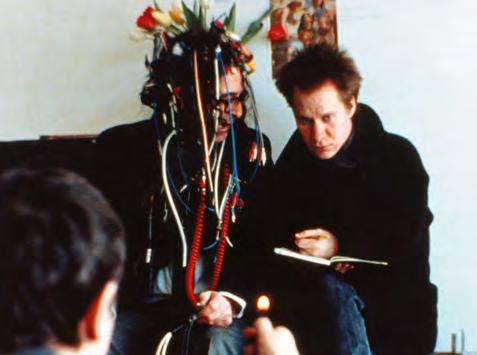
This is where Peter Sellars comes in. Now an acclaimed director of plays and operas, Sellars was then an actor in his mid-20s. As a freshman he enrolled in a filmmaking class and found himself in a
seminar on Godard’s 1962 film Vivre sa vie , starring Anna Karina. “We looked at the film for 15 weeks, frame by frame on a Steinbeck, and accounted for every literary reference, every musical reference, every visual reference,” he says. “It was my first time figuring out what was inside a work of art, and following Jean-Luc’s level of detail was incredible. So I became a worshipper of Jean-Luc.”
This familiarity with Godard’s work proved useful. Mediating between The Cannon Group and Godard in the thankless task of producer was Sellars’ friend and mentor Tom Luddy, cofounder of the Telluride Film festival in 1974, who died earlier this year at 79.
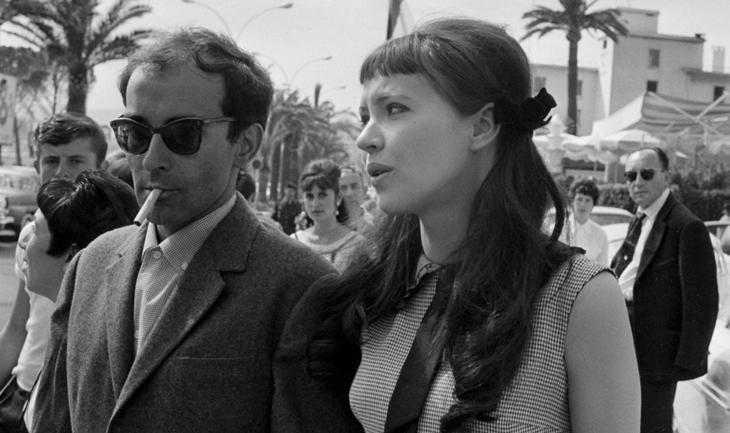
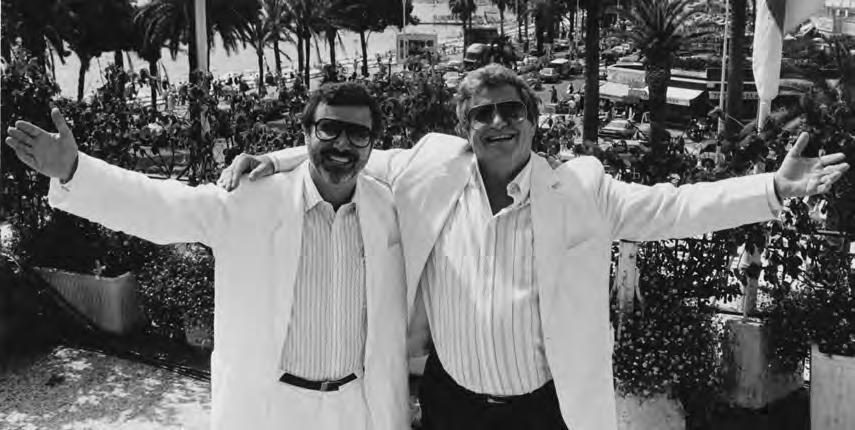
“After Mailer left, Jean-Luc had no idea how to continue,” says Sellars, “and Tom knew that the film was stuck. He knew that I loved Godard, he knew that I knew King Lear really well, and so he introduced me to Jean-Luc.”
Sellars met Godard when the director came to New York to film Woody Allen in the Brill building. Allen—playing The Fool but called, in Godard’s narra-
tion, The Alien—is sitting at a Steinbeck, splicing film with a needle and thread, reciting a Shakespeare sonnet. Recalls Sellars, “Jean-Luc said to me, ‘Talk to him. Here’s the sonnet. Go teach it to him,’ but Woody said, ‘I don’t know what this is. I can’t say this.’ That scene, which is right at the end of the film, was actually the first thing that was shot in my presence.”
It was Sellars who suggested the film’s new Cordelia: Molly Ringwald, fresh, almost literally, from her final John Hughes movie, Pretty in Pink. “I said to him, ‘the person you need in this film is Molly Ringwald. She has everything. She has truly everything. And the movies she’s been in have all been captivating, but she has so much more in her. And if she could actually touch Shakespeare, this would be incredible.’”
In the meantime, to replace Mailer, there were two old-Hollywood options: Rod Steiger, who refused to travel, and Burgess Meredith, who was Luddy’s first choice. “Burgess signed on,” says Sellars, “and then we were all set to go meet Jean-Luc. He insisted that we take the Concord, so the three of us got on
32 DEADLINE.COM GETTY IMAGES/CANNON FILMS/EVERETT COLLECTION 2023 FILM FESTIVAL
CANNES
From left: Godard and Anna Karina in Cannes; with Peter Sellars in King Lear
FT FEATURE
Cannon Films owners Yoram Globus and Menahem Golan in Cannes.

the Concord, but when we arrived in Paris, Jean-Luc was still not there.” They spent three days in the airport hotel then went to Nyon, where he was shooting. “Our trips to and from the shoot were silent because Godard was so overwhelming a presence that anything you said sounded unbelievably stupid after he said what he had to say. It was quite intense.”
The work situation was also intense. “At no point did anybody see a script,” Sellars says. “Whatever Jean-Luc wanted to shoot would be presented in the morning to me, and I was to present it to the actors. Two young women were the cinematographers, and they knew that it was an incredible privilege to work with Jean-Luc. They got a serious course because Jean-Luc was meticulous about everything. And I learned a lot of the most important artistic lessons of my life during those days. In particular: never point the camera at the view. Point the camera in some place no one would ever think of looking.”
Molly Ringwald, at 18, and Burgess Meredith, nearly 80, were both old hands by now, actors who were used to serious film sets with such things as hair and makeup. But they found none of the usual niceties in Nyon. “Poor Burgess,” says Sellars, “speaking these lines that he had spoken in his youth, but never knowing what we’re going to shoot from day to day. It was all just literally sprung on him. That’s why, in the film, I have to write things down and hand them to him, like it’s a telegram that’s being delivered, for example, because Burgess never had the time to learn any lines. And he felt that as a humiliation. But, of
course, for Godard, it becomes one of the most poignant and beautiful things of the film as you watch human failure with old age. It has a tragic stature that I think Burgess never realized was coming across in the footage.”

Suddenly, after three days of shooting, Godard sent Ringwald and Meredith home. “He said, ‘I’m done. I don’t need to see anything more.’ They were shocked. They thought they were being fired, but he said, ‘I just don’t need to see anything more.’”
What nobody knew was that Godard’s film was starting to come together in his mind, and Mailer’s original vision for the film had planted a seed: that script was called Don Learo , since Mailer thought, as he says in the film, that “the

mafia is the only way to do King Lear .” Meredith, as Learo, was a depository for everything Godard hated about the movie industry, and the film is rich with references to the mob and Las Vegas, while alluding to the idea of mainstream cinema as exploitation, a form of racketeering.

The finished film begins with that sense of vitriol: before Godard’s denunciation of Mailer, there are panicked voicemails from Golan and Luddy and a stark intertitle screams, “A PICTURE SHOT IN THE BACK.” (By whom? By Mailer? By Cannon? Or Godard himself? All these readings are possible.) But once this is out of the way, King Lear becomes, very recognizably, of a piece with the work Godard was doing in the same period, films that actively deconstruct storytelling while at the same time expressing sophisticated ideas about art and beauty. In this case, this means cross-pollinating King Lear with Shakespeare’s Sonnets, Virginia Woolf’s The Waves and a whole lot more.
The setting is a post-Chernobyl world where society has rebuilt itself after a harrowing nuclear winter, but art and culture has been destroyed. Into this bleak landscape comes William Shakespeare
34 DEADLINE.COM CANNON FILMS/EVERETT COLLECTION
2023 FILM FESTIVAL CANNES
Above: Sellars in King Lear ; Protesting directors in 1968, from left, Claude Lelouch, Godard, François Truffaut, Louis Malle and Roman Polanski.
FT FEATURE
Molly Ringwald and Burgess Meredith in King Lear .

Jr. the Fifth (Sellars), who is on a mission to restore his ancestor’s works. Along the way he encounters Professor Pluggy (Godard himself), a character memorably described by The Washington Post as “decorated like a kind of Rastafarian Christmas tree with variously colored audio and video patch cords, chomping a cigar and speaking, nearly incomprehensibly, out of the side of his mouth.”
It’s quite a look. Did Sellars know he was going to do that? “No,” he says. “When you see the film, you’re seeing me walk in and see him for the first time looking like that. And then I have to come in and sit with him. But, you know, it makes sense. He considered himself to be on the cutting edge of film tech-
nology, the technology of tomorrow, and so his wig is his statement of him not being in the world of John Ford. It’s his way of saying that the future of film is going to be this high-tech, electronic manipulation. So when we meet, he and I are in solidarity, because he, also, is reconstructing a lost art—the lost art of film—but with new technology.”
Sellars got it, but not everybody would, as he found out when the film premiered at Cannes. “We showed the film in the big screening room there,” he says, “which has a particular sound effect: when people decide to leave, those seats flip up and go boom, boom, boom, boom… There was a torrent of that all the way through the film.”
The press conference was similarly memorable. “It was one of the most vituperative press conferences in the history of Cannes,” Sellars says. “It was a room of seething, carnivorous, animal energy. People trying to tear him limb

from limb and eat his flesh. The hostility in the room was like, ‘Mr. Godard, how could you possibly insult us with a failure that is even greater than the failures of the last five years? How can you possibly dare to present something so empty? Have you lost all your talent? Have you lost all your integrity?’ And he would proceed to answer every question with a discourse about Mondrian, Rembrandt, Beethoven, Greek tragedy, the entire history of culture. It would go on for 20 minutes. Then he would turn to me and say, ‘Peter?’”
On its release in the U.S., the film found better favor with critics such as Jonathan Rosenbaum, who instinctively understood its many layers of meaning while pointing out its many idiosyncrasies (such as Godard deliberately speaking “semi-coherently out of one side of his mouth”, a bizarre affectation that swamps much of his dialogue). Cannon, however, wanted it gone, and
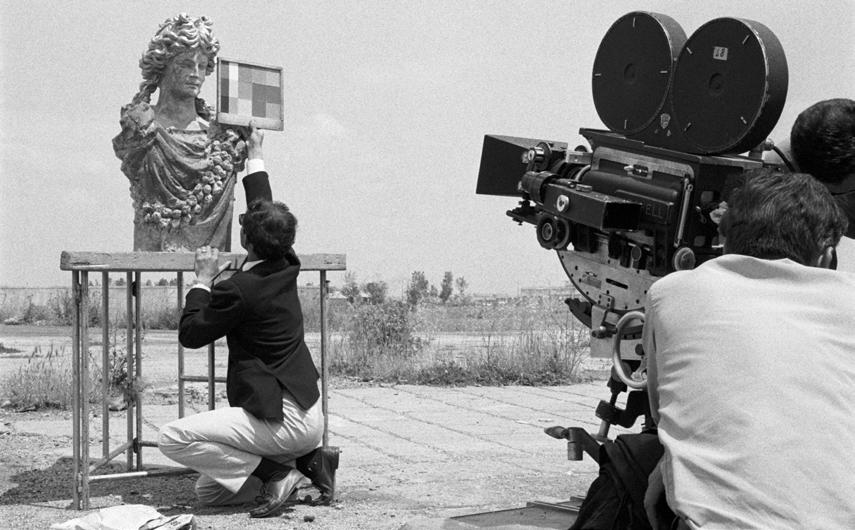
the film has barely been seen since a boutique release in France resulted in a 5,000 euro copyright claim from French author Viviane Forrester.
In America, it was recently shown in April at a tribute to Tom Luddy, where Sellars was pleased to see their work hold up, despite the tension of opposites at the heart of it. “For Molly and Burgess, a major film was a big-budget thing with huge personnel, but for Jean-Luc, it was a private-journal entry. King Lear is an essay written in isolation, reflective of the world but also about himself. And you get all of that inside this splintered, violent film, which is deliberately self-destructive in the way that King Lear himself was self-destructive. Like Lear, Godard’s main enemy is himself, but at the same time he’s bitter about all his enemies, so you get the gangster motif, and the connecting of Las Vegas to Hollywood, the idea that the commercial cinema is a giant come-on to make a lot of money that actually leaves people empty and broke emotionally.
“He’s on point over and over again in his super-brilliant aphoristic manner. And it adds up astonishingly, because by the end—even though you can’t follow it or, if you can, you’re not aware of it—it has an accumulative power that is truly incredible.”
All of this alchemy happened in the course of less than two weeks. “JeanLuc was one of a kind,” Sellars says. “There will never be another. No one can match those films. They’re in their own category, and you know you’re with a master. You can see from 50 paces that it’s a Picasso painting that you’re approaching, and it’s the same with Godard. He created a language, a signature, and a handwriting that is totally, unmistakably his.” A
36 DEADLINE.COM
2023 FILM FESTIVAL CANNES BORIS HORVAT/AFP VIA GETTY IMAGES/JEAN-LOUIS SWINERS/GAMMA-RAPHO VIA GETTY IMAGES
Godard atop the steps of the Palais in Cannes with the cast of his Competition film Notre musique (2004).
FT FEATURE
Godard on the set of Le mépris
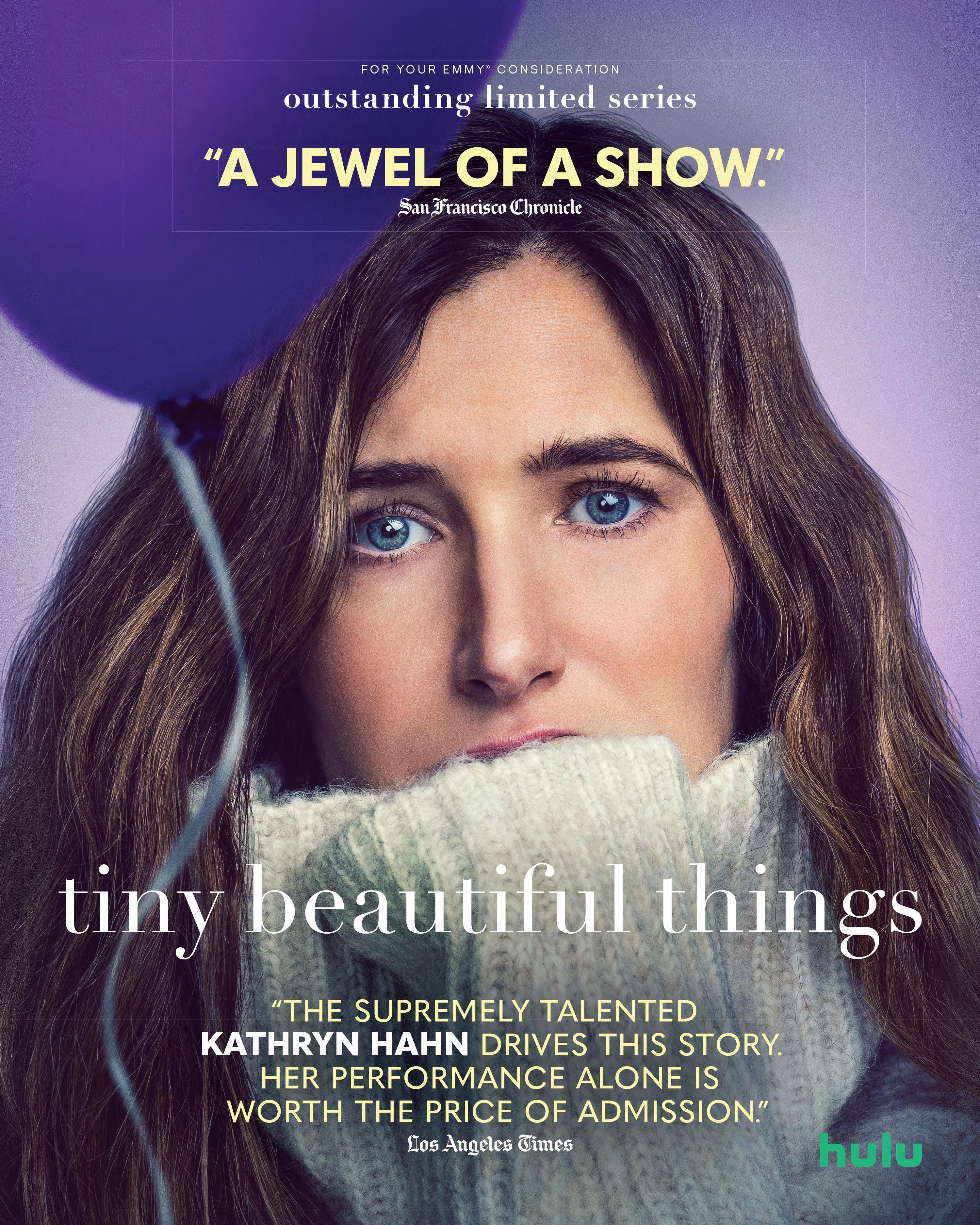


38 DEADLINE.COM
Killers of the Flower Moon was going to be just another period crime movie until MARTIN SCORSESE realized he was telling the story of an innocent community that was targeted by ruthless criminals in a country that didn’t care. The film reunites him with LEONARDO DICAPRIO & ROBERT DE NIRO. The three men, and breakout star LILY GLADSTONE, explain to Mike Fleming Jr. why their approach changed.


 Martin Scorsese photographed by Mark Mann exclusively for Deadline.
Martin Scorsese photographed by Mark Mann exclusively for Deadline.
G O Ø D B a D U g L y THE AND THE THE ,
I N
2016, the hottest book in Hollywood hadn’t even been published yet. Circulating in galley proofs, it was the latest non-fiction work from author David Grann, whose 2009 book The Lost City of Z: A Tale of Deadly Obsession in the Amazon had recently been filmed by James Gray and produced by Plan B. His new book was another mouthful—Killers of the Flower Moon: The Osage Murders and the Birth of the FBI—and it proved just as tasty.
Seven-figure bids materialized, with talent attachments that included Leonardo DiCaprio, George Clooney, Brad Pitt and J.J. Abrams. The deal ended with a statement buy by Imperative Entertainment’s Dan Friedkin and Bradley Thomas, who went well beyond the bids and took it off the table for $5 million. With Martin Scorsese directing, they would set it up at Paramount, casting DiCaprio alongside Robert De Niro in the most iconic pairing since Michael Mann’s Heat with De Niro and Al Pacino, but on opposing sides of the law.
Killers of the Flower Moon had all the makings of a classic Western. DiCaprio would play Tom White, an incorruptible Texas Ranger-turned FBI agent sent to Oklahoma in the early 1920s by J. Edgar Hoover to answer a desperate call from the Osage Indian Nation. The Osage had recently become the wealthiest people per capita in the world due to the vast supply of oil being harvested from their lands. At the same time, many of them were beginning to die in alarming numbers—and under highly suspicious circumstances.
It was the perfect set-up for a murder mystery, but something didn’t feel right. Scorsese, DiCaprio and De Niro began to realize that the situation was more complex than that. More explicitly, it would be inappropriate to serve up a white-savior Western since white people were also the bad guys: the outsiders who insinuated their way into the Osage and took advantage of their naivety, empowered by apathy from corrupt local law enforcement and townsfolk eager to shake money out of the pockets of their trusting Osage friends.
So, Scorsese started over, seizing on the chance to tell a story that would resonate in a modern era, forcing audiences to confront their own darkest instincts: how far would they be willing to go for the love of money? The lightbulb moment came when DiCaprio wondered if the focus should not be the lawman but rather one of his suspects: Ernest Burkhart. Burkhart is apparently a loving husband, married to Osage tribe member Mollie, and they have three children together. Mollie is at death’s door when Tom White—now to be played by Jesse Plemons—arrives. Is Ernest just in it for the money?
This much darker take and much more expensive take reportedly led Paramount to back out as financier. But to Apple TV+ Video Programming co-heads Zack Van Amburg and Jamie Erlicht, this had the potential to be an important historical epic, a beachhead project for their fledgling film program. They went out and got the package, just the way they did at Sundance with CODA, which went on to become the first Best Picture Oscar winner for a streamer. The deal orchestrated by Scorsese and DiCaprio’s rep Rick Yorn left room for Paramount, which had certain rights. The deal called for a full global theatrical release through Paramount, before it lands on the Apple TV+ streaming site in the heart of awards season.
DESPITE THE RADICAL CHANGE OF ANGLE, De Niro, marking his 10th collaboration with Scorsese, held on to the role of Bill Hale. He is Ernest’s uncle, who presents himself as a loving patriarch and ally to members of the Osage, but who enlists his nephew in a nefarious plan to help fulfill his darker motives. “I’d read the book a few years earlier and the Tom White character was more prominent,” he says, “That was right for the book, but Marty and Leo’s idea to focus on the relationship between Bill and Ernest made sense to me. They wanted to focus more on that dynamic instead of Tom White coming in and saving the day.”
That shift makes it a much more personal story, De Niro explains, one that fleshes out the story to ground an exploration of human nature, weakness and greed. “It made the most sense to show what’s going on in that world, the dynamic between the nephew and the uncle,” says De Niro. “I don’t know if you would call it the banality of evil, or just evil, corrupt entitlement, but we’ve seen it in other societies, including the Nazis before WWII. That is, a depressing realization of human nature that leaves people capable of doing terrible things. [Hale] believed he loved them, and felt they loved him. But within that, he felt he had the right to behave the way he did.”
He continues: “Tom White and the FBI set up law and order in the Wild West, where laws were made by the people who were right there and felt they could do anything. They were entrenched in the community, and nobody was accountable. It was racism, really.”

40 DEADLINE.COM
“...THAT IS, A D e PRESS I N g
REALIZ a TI Ø N OF HUMAN NAT u RE
TH A T LEAVES PE o PLE CA p ABL E OF DOING TERR i BLE THINGS...”
— ROBERT D e NIRO

IN RETROSPECT , casting De Niro as DiCaprio’s uncle was a masterstroke, playing into the idea of family and subverting the concept of the father-son relationship that had developed offscreen. After all, says DiCaprio, “My career was launched by doing This Boy’s Life, auditioning with Bob and then getting the role. Working with him, watching his professionalism and the way he created his character was one of the most influential experiences of my life and career. It got me to do all these films with Marty and now, 30 years later, all of us getting to work together and collaborate, it’s such an incredible and special experience for me. Those are my cinematic heroes. It is so very special to me.”
To DiCaprio, the original script just didn’t live up to the story’s epic potential. “It just didn’t get to the heart of the Osage,” he says. “It felt too much like an investigation into detective work, rather than understanding from a forensic perspective the culture and the dynamics of this very tumultuous, dangerous time in Oklahoma.”
DiCaprio was keen to tap into the innate spirituality of the piece, and also the place, a feeling that followed him onto location. “We were shooting there during the 100th anniversary of the Tulsa massacre,” he says, “which was a half-hour car ride away from where the Osage reign of terror occurred and happened in the same year, 1921, as the first Osage murder. We were there for the Tulsa massacre and the return of the Flower Moon. It was cosmic insane coincidence that we were telling this story, 100 years later.”
This subtle reworking of the material, with its new emphasis on shifting moral values, also helped the movie to become more of a traditional Scorsese movie.
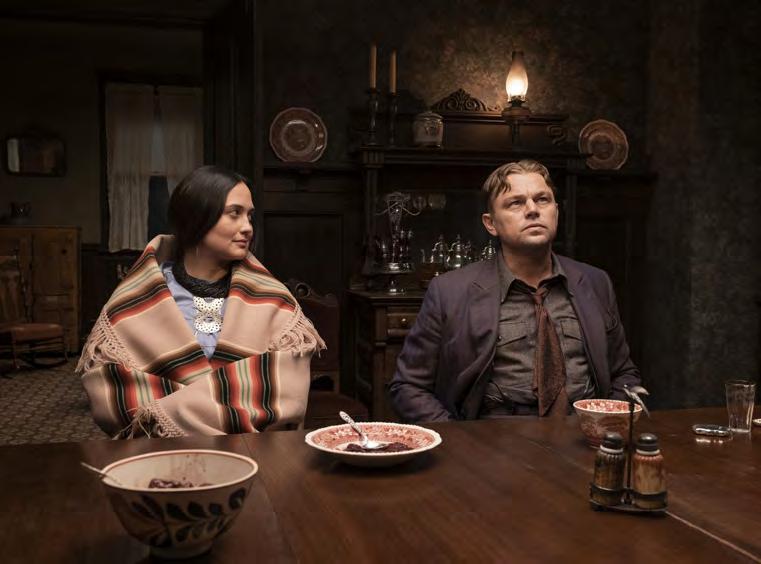
“We did a lot of work to try to help Marty do what he does best, which is to tell a very human story,” says DiCaprio. “To get to the dark side of the human condition but also understand the complexities. Here you had the wealthiest nation, the richest per capita people in the world. You had this melting pot in Oklahoma where freed slaves had created their own economy, and the Osage emerged as this wealthy culture. But you also had during that period the rise of the KKK and white supremacy and this clash of cultures. For some of these white settlers, it was like a gold rush to take advantage of people of color.”
Surprisingly, in amongst all this darkness is a love story, between Ernest and Mollie. “Ernest and Mollie really represented how twisted and complex some of this stuff was, culturally,” DiCaprio says. “A lot of Osage women were marrying white men who really came to prey on them, to take over their headrights and seize their oil money. And yet, at the same time, what struck me was one scene in the initial draft we had, the real testimony of Ernest and Mollie, as he explains his part in this horrific plan. They still loved each other. That was the twisted complexity of what made this a truly dark American story.”
This is really where the film departs from the path laid down by the book.
“The biggest challenge became pulling off the trick of not making this a mystery, but exposing Ernest early on for who he is and then watching this very twisted relationship unravel. Not only with Mollie, but also with De Niro’s character as well. That wasn’t easy and it took years to figure out.”
So many years, in fact, that Scorsese had enough time to go off and make The Irishman. “There was just more and more development,” DiCaprio recalls. “The script is based on an amazing book, but when I spoke with David Grann after we had this idea, he was all for it. He said that getting into a forensic look at the culture at that time, the clash between white America and the Indigenous people, would be the perfect way to tell the story, if it could be done. I really think we accomplished that. At the end of the day, it works.”
Another approach would have felt rote, he says. “When you see our characters, you’re going to know something’s wrong. You see the dynamic within the first 20 minutes, and where do you go from there except explore, in depth, that crazy family dynamic? That decision allowed us to really make what I feel is a throwback to a 1940s or ’50s golden age of cinema epic drama, the kind we don’t often get to see nowadays.”

42 DEADLINE.COM
COURTESY OF APPLE/STEVE GRANITZ/WIREIMAGE
From top: Lily Gladstone and Leonardo DiCaprio as Mollie and Ernest Burkhart in Killers of the Flower Moon ; Robert De Niro, Martin Scorsese and DiCaprio.

M A RT N SC Ø RSE S E
The king of New York reflects on the life choices that brought him together with long-time collaborators
LEONARDO DICAPRIO & ROBERT DE NIRO
for the first time
on Killers of the Flower Moon

In Killers of the Flower Moon, the depiction of the exploitation and murder of Osage tribe members for oil money—and the indifference shown by the U.S. government and law enforcement—is just gutting. Why did you want to tell this story?
› What I responded to when I read David Grann’s book was the natural order of things. The idea that one could rationalize that if the Osage are not going to be of any use, if they’re going to be phased out anyway, why don’t we just, you know, help them go? And, ultimately, do we really feel any guilt for that?
I don’t mean you and I, but when you’re doing what was being done to the Osage, and if you tend to dehumanize someone…
…You can rationalize abhorrent behavior, if it lines your own pockets?
› Do [the Osage] behave differently, culturally? Yes, on all levels. There’s no way they could fit in to the European model, the capitalist model, in terms of money and private property. So, then [the attitude is] we’re coming, and we’re not going away. Either you join us, or you have to go. Now, we love and admire you, by the way, but it’s just that your time is up.
I heard someone recently say, when they fire an executive, well, their time is over. And the person behind that fired person, it’s their time. Is this the natural order of who we are as human beings?
Your movie supplies a bleak answer to that question.
› Well, the answer is: probably yes, if you’re driven by how much money you can make. All that land’s just sitting there, what are they doing with it? The Europeans are thinking, ‘We come here, and look at this place. Look at the riches! And what are they doing? Killing some buffalo. Fighting amongst themselves over hunting areas. Communal living. And, excuse me, nobody owns the land?’ The very fact they don’t understand, in European terms, the value of money means they can’t exist in this world.
So rather than take David Grann’s book and turn it into a mystery-thriller with murders solved and the FBI established, you decided that making it an exploration of human nature was your way in?
› Leo DiCaprio looked at me and said, “Where’s the heart in this movie?” This
was when Eric Roth and I were writing the script from the point of view of the FBI coming in and unraveling everything. Look, the minute the FBI comes in, and you see a character that would be played by Robert De Niro, Bill Hale, you know he’s a bad guy. There’s no mystery. So, what is it? A police procedural? Who cares! We’ve got fantastic ones on television.
The least material available to us was about Ernest. There’s much written about Bill Hale, Mollie, and many of the others. Eric and I enjoyed working on that first version; it had all the tropes of the Western genre that I grew up with, and I was so tempted to do it that way. But I said, “The only person that has heart, besides Mollie Burkhart, is her husband Ernest, because they’re in love.”
We went to Oklahoma to the Gray Horse settlement, the Osage gave us a big dinner, and people got up and spoke. One woman got up and said, “You know, they loved each other, Ernest and Mollie. And don’t forget that. They loved each other.” I thought, ‘Whoa. That’s the story. How could he have done what he did?’
Presumably, the other version would have been more in the spirit of Westerns told from a white male perspective.
› It was something we’ve seen before. We researched Tom White. He was super-straight.
In the book, he’s the son of a lawman who instilled incorruptibility and empathy in his son. We tried to do more research, hoping to go deeper on Tom White. Does he have difficulties? Maybe he’s drinking? I finally said, “What are we making? A film about Tom White, who comes in and saves everybody?”
The woman who mentioned the love story said she’d told her mother about this film, and her mother said, “Tom White? You mean the man who saved us?” So, there’s still recognition of what they did, Tom White and what was then called the Bureau of Investigation. Even though a lot of people got away with what they did. We’ll never really know everything about what happened.
But the love story [changed everything]. I said, “How do we do the love story?” We couldn’t figure it out. And then Leo said, “What if I play Ernest?”
44 DEADLINE.COM

I realized, because there is the least amount of research on Ernest, that we could do anything. If we did that, we’d take the script and turn it inside out, make it from the ground level out, rather than coming in from the outside. I said, “Let’s put ourselves in the mindset of the people who did this.”
How much did this whole experience leave you questioning the Westerns you grew up loving, with the white heroism, and white hat/black hat iconography, especially when it came to the depiction of Native Americans? › Well, the white hat/black hat tradition has more to do with mythology that is deeper than folklore. The gunslingers evolve into the outlaws of the ’30s that the FBI made their name on—Bonnie and Clyde, Baby Face Nelson—and then to La Cosa Nostra. There was a Robert Warshow essay called The Gangster as a Tragic Hero that laid it out: as long as we see the gangster fall, it’s alright. The western mythology comes under that heading.
The most beautiful of them came from John Ford and Howard Hawks, and
then, of course, there’s Shane, which is the most mythological. But there were movies we grew up watching where the native Americans were for the most part depicted unfairly.
The first Western I remember seeing was Duel in the Sun, in which Lionel Barrymore calls [Jennifer Jones] a squaw. I was 6 years old, and I remember thinking, ‘Why are they so angry at these people?’ Gypsies, Native Americans. It’s like England, where you had Madonna of the Seven Moons. Phyllis Calvert plays an aristocrat, but she also has Gypsy blood in her, and at night she runs out and does crazy things with the Gypsies.
I didn’t quite get it then [laughs]. I guess it had more to do with sex than anthropology and social issues. But I grew up watching films like Red River , where the Native Americans force the wagons into a circle and Joanne Dru gets the arrow in her shoulder. That incredible scene, where Montgomery Clift pulls out the arrow and she doesn’t blink. And he has to suck out the poison. I think one of the problems in the genre is that none of the Native Americans are played by Native Americans. I mean, in Taza, Son of Cochise [Douglas Sirk, 1954], the star is Rock Hudson.
In your movie, you feature a glimpse of the 1921 massacre in Tulsa, where white supremacists destroyed the Black Wall Street. Was that an extension of the attitude among white people—a kind of passiveaggressive civility—that could turn violent with the slightest provocation?
› I don’t know. We only became fully aware of what happened in Tulsa a couple of years ago. We knew about race riots, about lynchings. We didn’t know about the destruction, the wiping out of a whole people out of fear of economic superiority, of people of a different color. You see they’re doing well and next thing you know… I think it has to come down to pure racism. This country’s a big experiment. Everybody’s together.
Had DiCaprio played Tom White, it would have been like putting him in the role Kyle Chandler played in The Wolf of Wall Street. It’s better to see you put him through the emotional blender. Bend and twist him to see what happens.
› What’s great about Leo, and it’s why we work together so often, is, he goes there. He goes to these weird places that are so difficult and convoluted, and through the convolution, somehow there’s a clarity that we reach. And usually it’s in the expression, in his face, in his eyes. I’ve always told him this. He’s a natural film actor. I could shoot a close-up of him, he could be thinking of nothing, and I could intercut anything with it, and people will say, “Oh, he’s reacting to such and such.” It’s the Kuleshov experiment. You could do that with him. There’s something in his face that the camera locks into, in his eyes. The slightest movement, we know it. Thelma [Schoonmaker], editing his footage with me over the years, she often goes, “Look at this. Look at the eye movement here. I think we should keep it.” It’s very interesting, what goes on behind the eyes. It’s all there.
His first breakthrough came opposite Robert De Niro in This Boy’s Life, and it was De Niro who told you about him. Do you remember what he said?
Not exactly. He usually didn’t say much at that time. It was ’92, ’93 and we hadn’t worked together for almost 10 years since we did Goodfellas. Bob wanted me to do

46 DEADLINE.COM
MARK MANN FOR DEADLINE

Cape Fear. After Goodfellas, he did This Boy’s Life. We were talking on the phone, about what I’m not quite sure. He said, “I’m working with this young boy. You must work with him sometime.” That was the first time I heard him recommend somebody to me. “The kid is really good.” he said.
Did he say why?
Bob doesn’t talk a lot [laughs]. He’ll say, “He’s good.” Or, he’ll say, “He’s right for this.” Or he’ll say, “I don’t know, there’s something.”
This is your 10th film with De Niro and your sixth with DiCaprio. But aside from a short film, it’s the first time you’ve had them together. Why did it take so long, and how close were you to having them both in a film like The Departed?

We talked to Bob about it, but he didn’t want to do it. Look, there are some people I work with a lot because I find that I’m… in the margins, in a way. I look back, and I feel lucky enough to have gotten the films made that I got made. By “in the margins”, I mean it in the sense that there are many actors over the years I would’ve loved to work with, but… I don’t fit in with the industry thinking. I’ve tried. I was lucky with Paul Newman and Tom Cruise. It all fit together right. But I didn’t work with Bob for 10 years until we did Goodfellas ; we went off in different directions. Then we made another two, three films. And then, for another 19 years, we didn’t. In the meantime, there were two with Daniel Day-Lewis, and for years I wanted to work with Jack Nicholson, if work is the word.
There are others whose names I won’t mention that I tried, and it just never fit. People I admired so much. I feel I missed it. And yet what happened is that I found that, because of the subject matter in many of the films, there seemed to be a comfort level [with Bob and I], not easy by the way at all, but a comfort level in knowing we could get to a place. What that place is, I may not be able to verbalize, but together we could probably find something.
But that took also long periods of not working together, because, you know, people change. He still wanted to do certain things. Casino really solidified it for me. That was the ultimate, in terms of that type of picture for him and me. Leo then became that way too, and a lot of it happened on The Aviator . There were some scenes he did with Cate Blanchett that left me stunned, I thought it was so beautiful. And he learned a lot as a person; he told me he did. Maybe he was a young kid, just growing. I have daughters. I don’t have sons, so maybe it’s like we’re stumbling along and it’s almost like parenting in a way. But, wow.
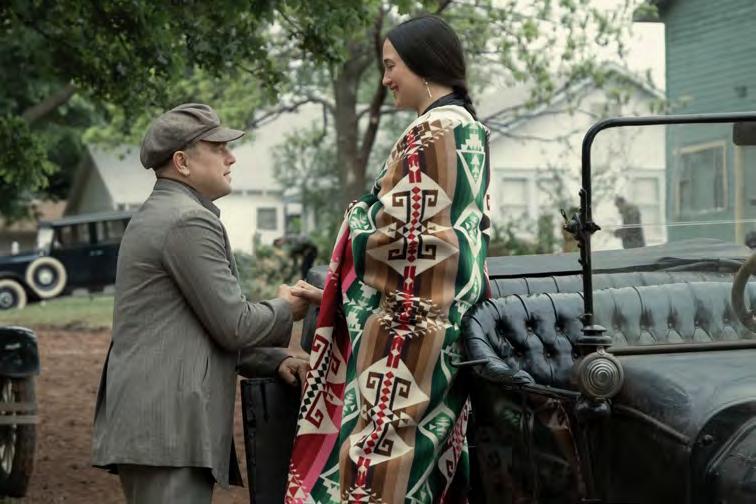
And then we did The Departed and he just blossomed. That character he plays, Billy, is so wonderful. That kid caught in this Celtic street war where, for fun, they kill the Italians from Providence. This poor kid is in the shooting war in the streets. They’re like, as Roger Ebert said in his review, “This movie is like an examination of conscience, when you stay up all night trying to figure out a way to tell the priest: I know I done wrong, but, oh, Father, what else was I gonna do?” This was his character, and he did it beautifully. He’s not a religious guy, but he understood the human condition, and that boy. I thought that was incredible.
So, with Bob, after Casino we stopped for a while and I did Kundun , and Bringing Out the Dead . And then Gangs of New York . We always checked in,
on that and everything else. He wanted me to do Analyze This , and I said, “We already did it. It was Goodfellas .” I talked to him about other projects, and at one point he said, “You know the kind of stuff I like to do with you.” I said, “OK.” That became The Irishman , and it took nine years. We were always looking. “What about The Departed ?” “Nah, I don’t wanna do that.” “OK.”
He turned down Gangs of New York?
› That was just a check-in. Literally, he said, “What are you doing?” “I’m doing this. You interested?” “Nah.” “OK.” We always talked about that kind of thing, because he is the only one around who knows where I came from and who I am, from that period of time when we were 15 or 16 years old. He knows that part of New York. It was all instinct between us and his courage and his humility, in terms of how he’ll say, “If a scene plays on my back, fine, but if it plays better on the other person’s face, play that.”
Now, that was a certain period of time. Does he still think that way, 10 years later? Turns out he did! But is he the old Bob? No. You’ve got to see where they are. Like when Leo said, “Where’s the heart of this thing?” I said, it’s Ernest. He loves her and she loves him. And yet… when does he know he’s poisoning her?
48 DEADLINE.COM
COURTESY OF APPLE
From top: DiCaprio and Gladstone; De Niro and DiCaprio.

Is it really insulin they’re giving her for her diabetes? All of that is unknown. But he’s obviously harming her, and how does someone who’s in love with this person, has a family, kids, do that? Clearly, he’s being manipulated by Bill, his uncle. The weakness of the character. He’s like Kichijiro from Silence
That character who keeps betraying the missionaries, screwing up and asking for absolution in confession?
› Yes. He was a disaster.
The way it unfolds, you don’t really know if Ernest is in denial, or if he is just ignorant. He could have just been doing what he was told by the doctors who said the medicine would help her diabetes and slow her down.
› That’s the key. That’s the scene. And that scene took until the day we shot it, to write it. We just kept working on the scenes day by day, weekend by weekend. And when he nods, when Leo says, “Well, you know, it’s just gonna slow her down.” He’s saying, “I accept in denial what all of you are forcing me to do.”
Lily Gladstone, as Mollie, is the movie’s conscience. What kind of direction did you give her? She’s stoic and often doesn’t say much, which leads to a critical payoff.
› Lily had her own thoughts. She has an intelligence and a groundedness about her, in her mind and heart. It’s almost instinctual. When Mollie says, “You know, Coyote wants money,” he says, “Right, I love money. Let’s have some fun!” She goes, “You’re right. I’m with you.” She loves him. That’s Mollie’s issue. She didn’t leave him until after the trial.
I think she just really loved him. She talks about his eyes and that sort of thing. Her sister says, “Oh, I like the other one, the red-haired guy. But, you know, they both want your money.” Mollie says, “It doesn’t matter, his uncle’s rich, and he doesn’t need that much.” I would use the phrase ‘beautiful failure’ here, and hers is that she trusts and loves. Maybe we see it as a failure, but it’s not a failure for her, because she’s loving and trusting. She has heart, and she cannot accept the fact that he would do anything like poison her intentionally.
But Mollie’s relatives were dying in suspicious circumstances all around her. › He has nothing to do with it, in her mind.

You’ve described the shorthand that you have with De Niro. How does it work with DiCaprio?
› With Leonardo, there’s no shorthand. It’s longhand. We hang out and talk and get all kinds of research. I give him stuff to read, and music. He’s very good with music. As I say, he prompted me to think about Ernest rather than Tom White for him, even though there was very little written on Ernest, and he is the weakling, a man who was in love with his wife, but he’s poisoning her. He was like, “Yeah. OK. How are we gonna do that?” He wanted to go into that uncharted territory. That’s the excitement. We did, and it’s hours and hours and days of work. On set. On the weekends. The film was day and night. Same with Bob, to a certain extent.
When Deadline did a long interview with Coppola recently, he said that after all the studio meddling on The Godfather, he only wanted to write The Godfather Part II with Mario Puzo, but he had the perfect young director to take over: you. Paramount turned him down. What do you remember about that?
› He told me, and, honestly, I don’t think I could have made a film on that level at that time in my life, and who I was at that time. To make a film as elegant and masterful and as historically important as Godfather II, I don’t think… Now, I would’ve made something interesting, but his maturity was already there. I still had this kind of edgy thing, the wild kid running around.
I didn’t find myself that comfortable with depicting higher-level underworld figures. I was more street-level. There were higher-level guys in the street. I could do that. I did it in Goodfellas particularly. That’s where I grew up. What I saw around me wasn’t guys in a boardroom or sitting around a big table talking. That took another artistic level that Francis had at that point. He didn’t come from that world, the world that I came from. The story of Godfather II is more like Thomas Malory’s Le Morte d’Arthur. It’s wonderful art.
I always wondered why you gave up Schindler’s List to Steven Spielberg. You grew beyond the street level mobster thing with breathtaking films like Kundun, Silence and now Killers of the Flower Moon. When you decided Schindler’s List wasn’t for you, was it like Godfather II, outside a world you were most familiar with?
› Oh, no. Godfather II, Francis just mentioned it to me. For Schindler’s List, I hired Steve Zaillian, and Steve and I worked on the script. I was about to direct it. But I had reservations at a certain point. Don’t forget, this is 1990, I’d say. I did The Last Temptation of Christ in 1988. The whole point of that movie was to start a dialogue about something which is still important to me, which is the nature—the true nature—of love, which could be god, could be Jesus. I’m not being culturally ambivalent here, it’s what’s in us. Is god in us? I really am that way; I can’t help it. I like to explore that. I wanted a dialogue on that. But I didn’t know about all that yet. So, I did Last Temptation, I did it a certain way, and Schindler’s List was scuttled by its reception. I did the best I could. I went around the world. Any arguments, I took ’em on. I may have been wrong, but I’m not sure you can be wrong with dogma. But we could argue it.
In the case of Schindler’s List, the trauma I had gone through was such that I felt to tackle that subject matter… I knew there were Jewish people upset that the writer of The Diary of Anne Frank was gentile. I heard that there were people who complained about Schindler, that he used the inmates to make money off them. I said, “Wait a minute.” I could… well, not defend him, but argue who he was. I think he was an amazing man, but I didn’t know if I was equipped for it at that time. I didn’t have the knowledge. I remember Steve Spielberg, over the years, mentioning it to me all the time. He held up the book when we on a plane going to Cannes, and he said, “This is my dark movie and I’m going to make it.” That was back in 1975. And I said, “Well, I have The Last Temptation of Christ, and I’m gonna make that.”
I used the phrase at the time, “I’m not Jewish.” What I meant was, it’s the
50 DEADLINE.COM
“ THE WHOLE P Ø INT of LAST TEMPTATION WAS TO ST a RT A DIALOGUE ABOUT SOMETHING WHICH is STILL IMP Ø RTANT TO ME, WHIC Ħ IS T h E NATURE—THE TRUE NATURE— of LOVE, WHICH COULD BE GOD, COULD BE JESUS.”
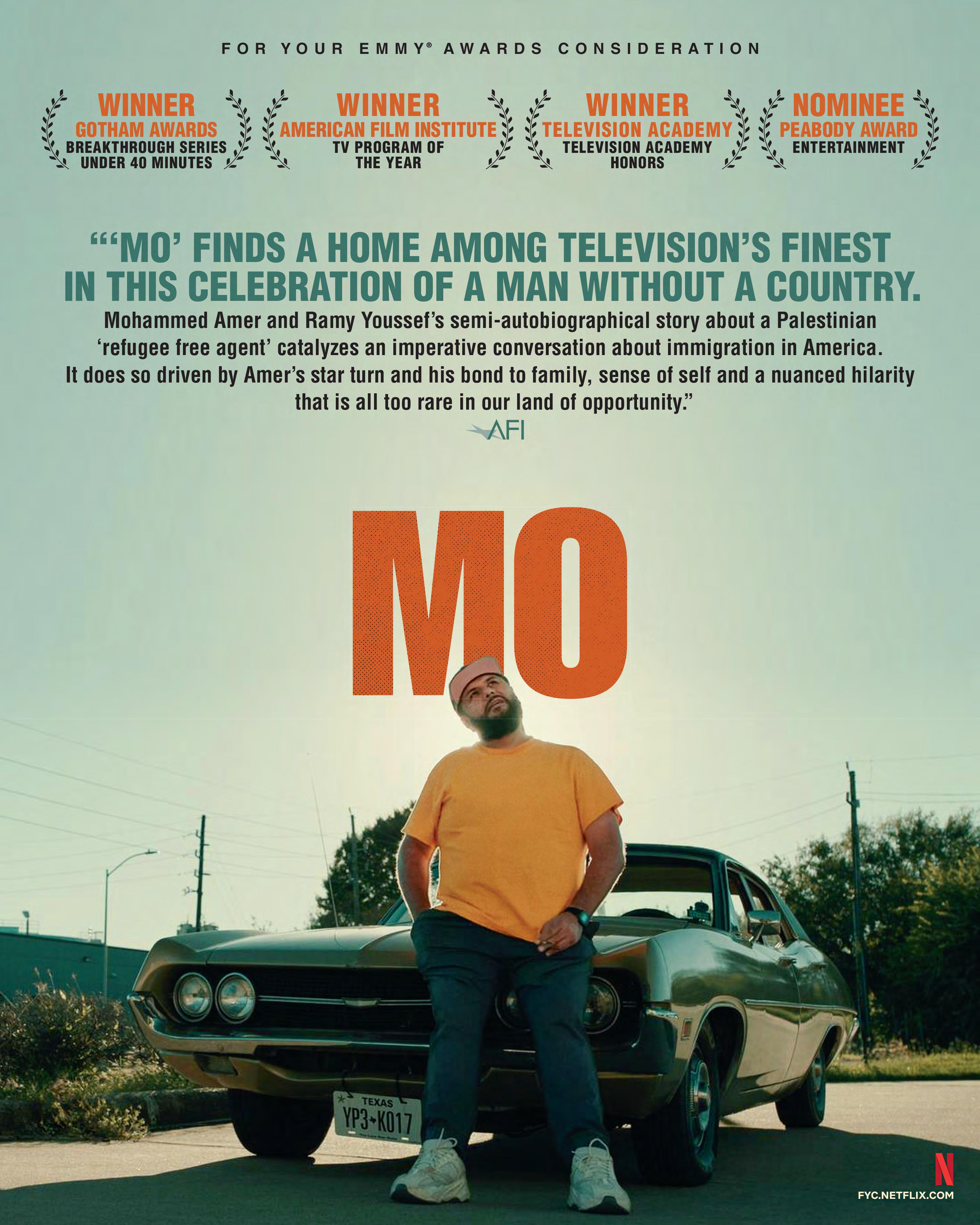
old story that the journey had to be taken by a Jewish person through that world, and I think Steven also learned that. He came from… [pauses] where is The Fablelmans set, Phoenix? He told me there were only 200 Jews in Phoenix. I couldn’t believe it. Because I come from the Lower East Side, and grew up with the Jewish community. I wasn’t being altruistic, but it just made sense to me that he was the person who really should go through this. I was concerned that I wouldn’t be able to do justice to the situation.
That journey changed Spielberg’s life. When you finally watched Schindler’s List, how did you feel?
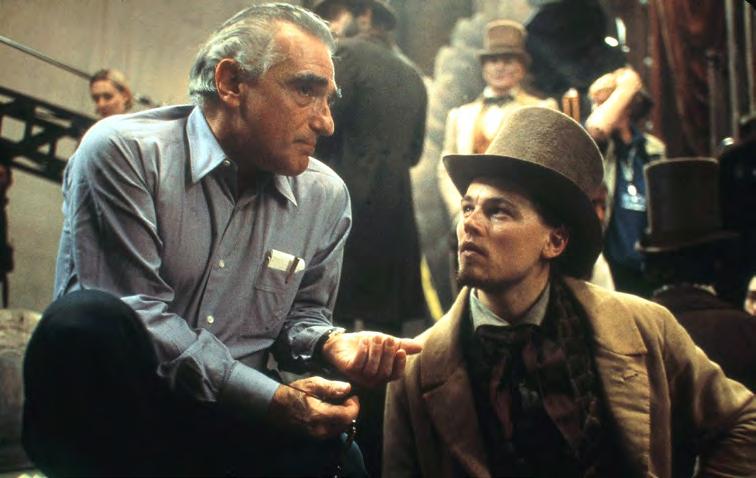
› Let me put it this way, and you may say that it’s deflecting the question. But I guarantee you, if I did it, it would not have been the hit that it became. It may have been good, that I can tell you. I had some ideas. Most of it’s there. I had a different ending. I admired the film greatly. But I know that my films just don’t go there. They don’t go to the Academy. You’ll say, “But you’ve got so many nominations!” Yeah, that’s true. But when Paul Schrader and I were not nominated for Best Screenplay and for directing Taxi Driver, that set the tone. I realized, just shut up and do the films.
Raging Bull? We thought, for a second, we’d win, but I said, “It’s not going to be.” I was fine. At least it was recognized by the industry. In the ’80s, I wasn’t recognized at all. From King of Comedy, up to Goodfellas. Nothing on Last Temptation I realized, ‘You just don’t make these films, Marty. You don’t do them. Just shut up make your films. And if you want, maybe you should make films in Europe. Maybe you should make low-budget, independent films.’ But I tend to start that way, and then they usually wind up being part of the mainstream. In the ’80s, I went low budget with After Hours, and did an industry film with The Color of Money. Then, Last Temptation was made for very, very little. And then I did another industry picture, which was Goodfellas. But, you know, even Goodfellas, I was treated in a tough way. No special treatment at that time, in 1989, even by Warner Bros.
Why?
› Budget, dammit. I’m responsible for it, man. I was 15 days over schedule on Goodfellas. Here’s the thing. [First AD and second unit director] Joe Reidy boarded the picture at 70 days. They said, do it in 55. And we tried. Towards the end, we were stumbling over ourselves, exhausted. I even had a doctor tell me, “Don’t take coffee, because it might make you too nervous.” And we ended on day 70.

Exactly as you originally planned it…
› Yeah. Now, that doesn’t mean we were right, and they were wrong. “Do it cheaper, do it faster.” I get it. But we weren’t treated very nicely by them when we started going over. It was, “Oh my god, two days over! Oh my god, another day over!” Geez. I mean, it was a nightmare. They did well with it. They enjoyed it, and they were great in the end. It’s just that, at the time, they weren’t great. Nobody knew. I knew it, but they didn’t. I had a feeling there was something special with that picture. This is different, Killers of the Flower Moon. We did it day by day. We discovered it as we went along. It’s wild. I mean, I had it structured. It was exotic in a way. It didn’t make for a very relaxing time.
Sounds like the act of discovering left you feeling alive. › Yeah. In terms of Goodfellas, it was visceral but it
was there on the page, with Nick Pileggi and I, and then it was a matter of pushing, pushing, pushing. It was also designed on the page. Some things were spontaneous. Like, Joe Pesci would come in and say, “I wanna do this scene...” With that whole movie, we were like, “Just do it.” We did it in rehearsal, rewrote it from rehearsal.
Just recently, Super Mario Brothers has minted money, while Air, Ben Affleck’s movie about Michael Jordan’s Nike shoe endorsement, had box office that didn’t match its rave reviews. The media narrative behind Killers of the Flower Moon is obsessed with its runtime and its $200 million budget. Apple’s decision to put the film through a wide global release through Paramount might ultimately be the future that connects streamers and theatricals, because the P&A makes it more culturally relevant than if it just landed on a streamer. Where is all this headed, the future for ambitious theatrical films?
› It’s the question, really. Who said cinema was going to continue the way it has for the past hundred years? In the past 25 years things have changed, in the past five years things have changed, and just in the past year, things have changed. Who says it’s going to continue to exist that way? Where people would
Below, top to bottom:
52 DEADLINE.COM
MIRAMAX/WARNER BROS./EVERETT COLLECTION
Scorsese and DiCaprio on the set of Gangs of New York ; De Niro and Scorsese on the set of Goodfellas

go see a film like Out of the Past or The Bad and the Beautiful, in a theater on a giant screen with 1,000 or 2,000 people in the audience on a Saturday or Sunday afternoon or evening? I would like it to continue that way, because I knew it that way. And I do know that a communal experience with an audience, with any film on a big screen, is better than one where you’re watching alone. I know that. Well, the nature of the technology is such that a whole new world has been created. In that world, there are certain films, for example, that even I would say, “Let’s wait and see it on streaming.”
But you’re talking to an 80-year-old man. People in their teens, 20s, 30s, 40s, they should be experiencing films in a communal experience in a theater. Films like Mario Brothers are excellent for younger people. But they also grow into mature people. What about that part of their lives? Are they going to think movies were only for game movies or, what do they call them, tent shows?
Tent-poles.
› Yeah. Are they going to think that’s what cinema is?
To a certain extent it is, and when I was a kid, Around the World in 80 Days was like the tent-pole thing. The screen was amazing, it was Todd-AO. I’ll never forget the Technicolor intro, with Edward R. Murrow. And then the rocket goes up and the screen opens, the curtains open, and you had this giant screen, and on it this magnificent travelogue that is Around the World in 80 Days. So those things happen, but it’s not for all of cinema.
I do think there has to be a concentrated effort to nurture an appreciation for films that that audience will go see in a theater as they grow. Which means the theaters also have to help us. The theaters say, “Well, we played a smaller indie film.” Everything has become pigeonholed. But what if that screen is in a place that is comfortable? Not a closet with a screen that is smaller than the one you have at home. That means a person will come out and go to that theater with a few friends and respond to that picture. And you never know. That person may come out and write a script or a novel that becomes a script that becomes a tent-pole film that’s going to make more theaters more money in the future. Because maybe, like
Spielberg and me, we go see Jules and Jim, and he becomes friends with Truffaut and Fellini. Those films influenced him. I think we can create this experience with Killers of the Flower Moon in a theater for people who want to see this kind of picture.

And when people talk about how much money I’m spending, it’s really how much money Apple is spending. If Apple gave me a certain amount, I think, ‘OK, I have to do it for that amount.’ You might want to say, ‘You got more?’ But sometimes more money is not the best thing. You try to make it for what you’ve agreed to, and believe me, I do. It’s different from The Irishman, where Netflix gave us the extra money for the CGI.
When the press narrative is your budget, DiCaprio changing roles that left Paramount stepping out as the principal financier, and the runtime, does that ratchet up the pressure for you?

› It certainly does. The risk is there, showing in a theater in the first place. But the risk for this subject matter, and then for running time. It’s a commitment. I know I could sit down and watch a film for three or four hours in a theater, or certainly five or six hours at home. Now, come on. I say to the audience out there, if there is an audience for this kind of thing, “Make a
commitment. Your life might be enriched. This is a different kind of picture; I really think it is. Well, I’ve given it to you, so hey, commit to going to a theater to see this.”
Spending the evening, or the afternoon with this picture, with this story, with these people, with this world that reflects on the world we are in today, more so than we might realize.
You’re 80. Do you still have that fire to get right back behind the camera and get the next one going?
› Got to. Got to. Yeah. I wish I could take a break for eight weeks and make a film at the same time [laughs]. The whole world has opened up to me, but it’s too late. It’s too late.
What do you mean by that?
› I’m old. I read stuff. I see things. I want to tell stories, and there’s no more time. Kurosawa, when he got his Oscar, when George [Lucas] and Steven [Spielberg] gave it to him, he said, “I’m only now beginning to see the possibility of what cinema could be, and it’s too late.” He was 83. At the time, I said, “What does he mean?” Now I know what he means.
54 DEADLINE.COM
WARNER BROS./EVERETT COLLECTION
From top: Scorsese and DiCaprio on the set of The Departed ; De Niro and Scorsese on the set of Taxi Driver

L i LY GL A DST NE
Place your awards season bets now on the INDIGENOUS AMERICAN FROM MONTANA
who’s more than a match for the most famous names in Hollywood
Although Leonardo DiCaprio and Robert De Niro take top billing in Martin Scorsese’s harrowing drama, one might say the real star of Killers of the Flower Moon is a relative unknown: Lily Gladstone, who plays Mollie, wife to DiCaprio’s Ernest. Mollie is the film’s conscience, a rich Osage woman who is slowly being robbed of her health by a seemingly simple case of diabetes. Insulin shots only seem to make matters worse, and after losing her sisters in suspicious circumstances, Mollie insists that only her husband can administer her medicine. But is she being too trusting?

An American actress of Blackfeet and Nimíipuu heritage, Gladstone came to Scorsese’s attention after he saw her in Kelly Reichardt’s Certain Women In an ensemble cast including Michelle Williams, Kristen Stewart and Laura Dern, she more than held her own, prompting Rolling Stone’s review to enthuse that “Gladstone gives a performance of such piercing honesty and yearning, you almost can’t look at her.” So, it’s hardly a stretch to suggest that Scorsese’s film might take her all the way from Cannes to the Oscars.
Growing up in Montana, Gladstone recalls hearing stories about the exploitation of the Osage. “I didn’t have language for it being the reign of

56 DEADLINE.COM
COURTESY OF APPLE
Gladstone and Scorsese on the set of Killers of the Flower Moon

terror, until David Grann’s book reached the cultural zeitgeist,” she says. “I was aware of it in passing from my dad when I homeschooled in fifth grade. He told me about how Osages were killed for having oil money. I remember being upset about it, and then I would hear Osage stories make the rounds across Indian country. My father joked about how he’d heard that Osages had so much money they would buy a Rolls Royce, and when it ran out of gas, they’d go, ‘Oh well, I guess it’s time for another one.’ And then they’d go buy another car.”
She continues: “It’s a funny story, until you think about the implications. You had all these people who moved to Osage County to take advantage of this first wave of folks with headrights to oil, at a time when people were moving from a horse cart to driving automobiles. Nobody was going to say to those first generations of Osage, ‘No, you just fill the tank up with gas.’ All these people set up businesses around Osage wealth. Grann mentions it in the book, and this is something that a lot of families talked about, how there was this ‘Osage tax’, which meant things were horribly overpriced.”
Although some dramatic license has been taken, Gladstone believes that the version of events presented in Killers of the Flower Moon is true, and that attention to the film will help the Osage’s claims that their land and fortunes were stolen, either literally, or, more chillingly, by white ‘guardians’ appointed to oversee Osage tribe members’ money and limit their access to it. Gladstone’s research included the novel A Pipe for February by Charles H.
Red Corn, which offered an Osage perspective on what happened to them and their rising levels of paranoia. “It’s a beautiful book,” she says.

But instead of talking history, Scorsese and DiCaprio wanted to talk to Gladstone about the moral aspects of the story. “Marty and Leo had conversations with me about what the nature of evil is, and how evil doesn’t see itself as evil,” she remembers. “Can somebody really love and honor another, feel all these things in one aspect of their psyche, and then turn around and do all of these other hateful, evil, entitled things? The tightrope walk was exploring the relationship between Ernest and Mollie.”
She says playing Mollie helped her understand the structures of Osage society. “The Osage are a patriarchal society only in the sense that men are the ones who get up and speak and kind of represent the family,” she explains. “But the women own everything, and when families come together, it’s really around the woman. She grounds everything, and I can see Mollie having that view of herself, coming from a tradition of women really being the heart of everything, and being the backbone.”
That insight made it easier for her to navigate the relationship. “The Mollie that I found loved Ernest for the innocence that she saw there,” she says, “which is something that can resonate with lots of women: loving that hurt little boy. If you do that, if you don’t think somebody can do something so calculated and evil, then they can. Right under your nose. I could see the tightrope Leo was walking. Ernest was receiving love and acceptance from Mollie, and yet there were other loyalties in his life.” A
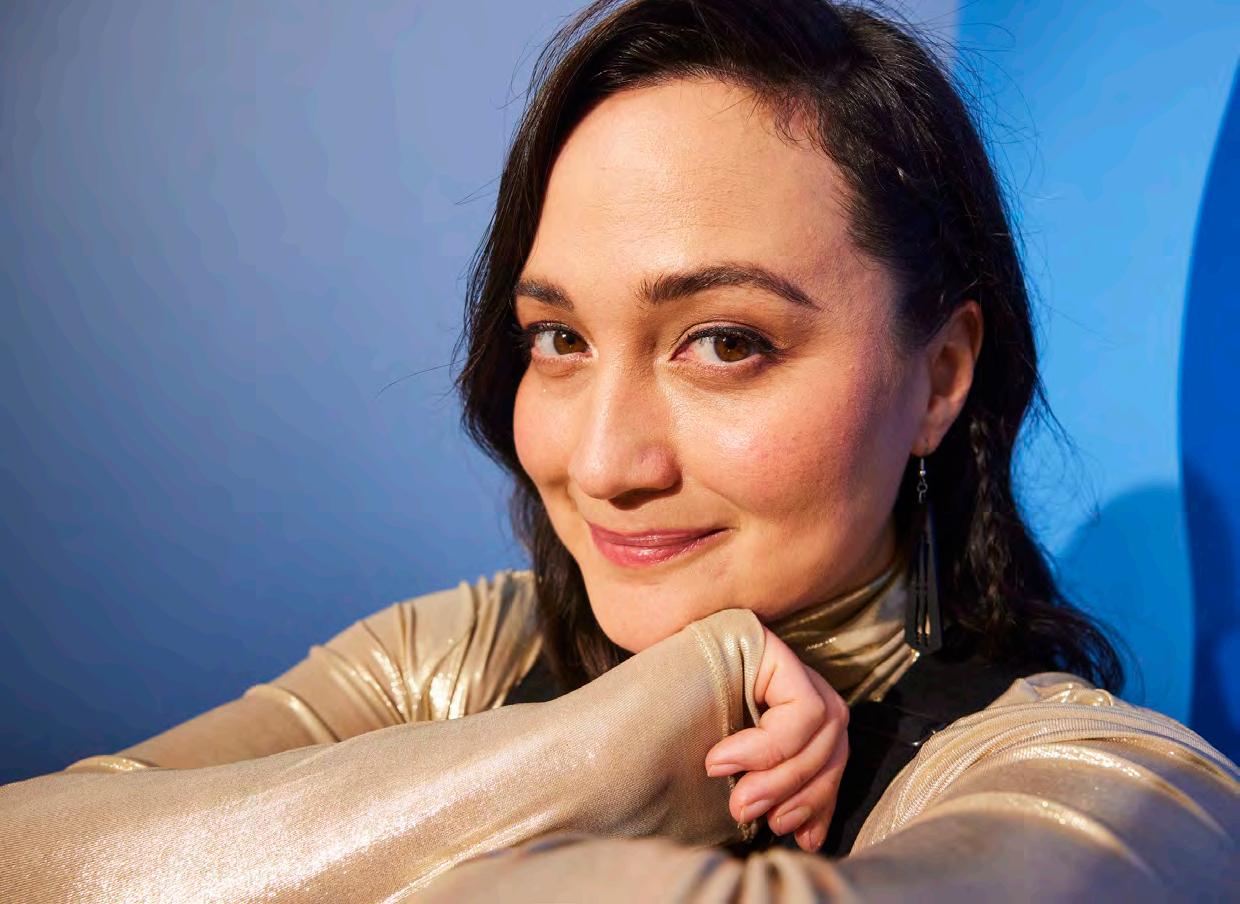
58 DEADLINE.COM
COREY NICKOLS/GETTY IMAGES FOR IMDB
Scorsese says Gladstone has an “intelligence and a groundedness about her” as Mollie in Killers of the Flower Moon


It is a time of great upheaval in the entertainment industry as it battles to get to grips with a changing landscape. Deadline’s 2023 group of Disruptors suggests the future will be decided by exciting new and established talent. The people, companies and movements reflected in this year’s selection come from across the industry and across the globe, transcending barriers and rewriting film, television and theater into exciting new forms. Meet this year’s class, in alphabetical order…
DEADLINE.COM 61 EDWARD BERGER 9O QUINTA BRUNSON 62 FRANCIS FORD COPPOLA & KEVIN COSTNER 1O2 DIGITAL DISRUPTION 98 IDRIS ELBA & MO ABUDU 82 HYBE CORPORATION 88 IRANIAN REBELS 92 MAGNOLIA NETWORK 8O MEDIAWAN 94 LOUIS THEROUX 96 TOLLYWOOD 76 VISION ENTERTAINMENT 74 WORD-OF-MOUTH HORROR 75 YOUTUBE REVOLUTIONARIES 7O
When Quinta Brunson was working at an LA Apple Store 10 years ago, a customer came in complaining that her tablet screen wasn’t working. The swipe function was broken, she said. But when Brunson tried it, it was fine.
“No,” the woman, clad head-to-toe in pink, said. “My dog’s paw isn’t working on it.” Apparently, Rover was having some trouble using his favorite app.
The way Brunson tells it, the Apple store scenario is sitcom gold. How could it not be? She’s the Emmy-winning creator and star of massively popular workplace mockumentary Abbott Elementary. And how that show came to be a hit begins with her instinct to go against the grain; to do precisely what others were not.
Back in 2021, we emerged blinking from our pandemic isolation, with streaming subscriptions up the wazoo, Apple remotes glued to our palms and having ‘finished’ Netflix.
The captive lockdown audience had kickstarted an industry scramble for more streaming sites and more and more content. But with bloated online libraries at our fingertips, we could barely choose what to watch. Our attention spans shrank to such fruit-fly capacity, even Quibi seemed like a good idea. For a minute. On we scrolled.
Enter Quinta Brunson, star of A Black Lady Sketch Show. She had
62 DEADLINE.COM
WHILE HER PEERS WERE INTO TIKTOK AND STREAMING, THE ABBOTT ELEMENTARY CREATOR WENT OUT ON AN UNEXPECTED LIMB AND MADE AN OLD-FASHIONED FAMILY-FRIENDLY NETWORK SITCOM BY ANTONIA BLYTH

DEADLINE.COM 63 JONNY MARLOW
begun her career posting short Instagram videos (when that idea was still new, mind you). She’d also, among other things, worked at Buzzfeed making video content. She was, in theory, primed for this runaway online market.
Instead, she turned around and did something totally unexpected: she made a network comedy Abbott Elementary, Brunson’s sitcom about a Philadelphia school and its staff, first appeared on ABC on December 7, 2021. It starred Brunson alongside Sheryl Lee Ralph, Tyler James Williams, Lisa Anne Walter, Chris Perfetti, Janelle James and William Stanford Davis, and by only its second episode, it had the network’s highest ratings since the 2020 series finale of long-running Emmy darling Modern Family
By March 2022, Abbott had been renewed for a second season. Its first season won three Emmys, and Brunson became the first Black woman to be nominated three times in a comedy category.

Brunson had tapped into something we wanted: the family-centric nostalgia of appointment television coupled with the kind of writing we expected from fresh, young creators.
Brunson has pointed out she is not the only successful network comedy out there. She cites Blackish and Ghosts among others. But at the same time, she also notes that network showrunners have tended to skew toward an older generation. Fresh blood either simply wasn’t getting in, or they were jumping on the streamer bandwagon, and
that affected the tone and audience for network.
“The younger creators went over to streaming,” she said at Deadline’s Contenders event last year. “The shows I just mentioned don’t have millennials, they are created by the generation before us. And I think that millennials were having trouble breaking into the network space, because our stories were a little more nuanced. And people like me, like Issa [Rae]—Issa had a project at ABC that didn’t work there, so she went to HBO and made a monster hit. That allowed networks to see the value in a younger story like Abbott, especially when it has a primarily Black cast but is not about being Black.”
As Brunson described Abbott during her recent Saturday Night Live hosting gig: “It’s a network sitcom, like, say, Friends. Except instead of being about a group of friends, it’s about a group of teachers; instead of being in New York, it’s in Philadelphia, and instead of not having Black people, it does.”
In Abbott Elementary, Brunson plays Janine Teagues, an awkwardly enthusiastic second-grade teacher dealing with a TikTok-crazed principal and a self-absorbed wannabe rapper boyfriend. So far, so funny, but the show also touches on heartfelt truths, like the reality of underpaid teaching life in an underfunded school. Named for Brunson’s own sixth-grade teacher Joyce Abbott, it evokes Brunson’s own childhood in Philadelphia with her schoolteacher mom. And in that same SNL monologue, Brunson said, “Remember how important teachers are, acknowledge the work they do every
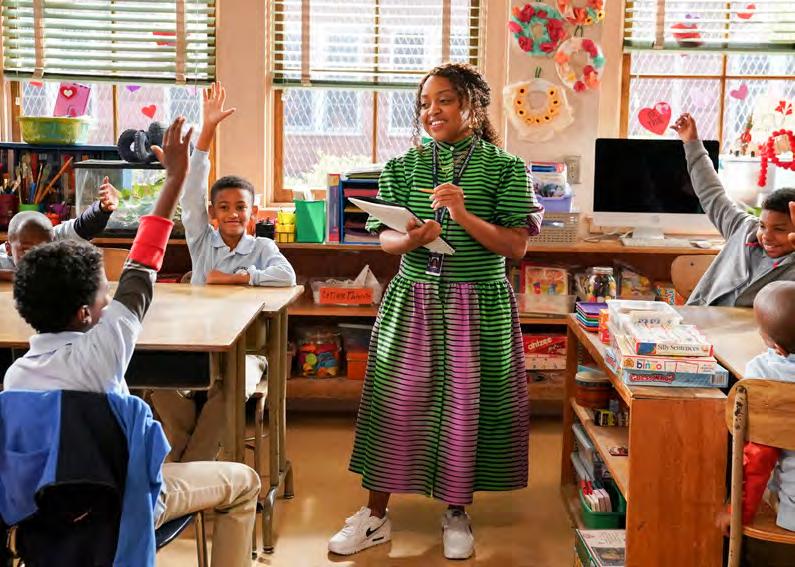
day, and for the love of god, pay them the money they deserve.”
Network TV was also just the way Brunson envisaged Abbott being seen. It harked back to something wholesome and meaningful. “I didn’t really have TV I could watch with my parents and with my nieces and nephews all at the same time,” she says.
And there was something familiar and accessible about network. “I just appreciate the access of network comedy,” Brunson says. “I’m even starting to get a little confused with how many streaming services are available, and I’m young and of this era, but there’s so much. I enjoy all those different streaming platforms, but it felt like ABC was a very safe place to go where people knew how to get to ABC, how to watch ABC.”
Network’s scheduled appointment television creates a kind of agreement between a creator and their audience: we have to show up, at the same time, together. “It’s kind of like when you go to the theater, you’re making a commitment to sit in that seat until intermission and watch that,” she says.
“I’m entering a deal with you as an audience member that you’re going to watch this and respect it. That’s what’s hard on the internet. That relationship isn’t there. I have a deal with the audience members, and I don’t want to make something without that deal anymore.”
And long-form, involved storytelling tends to inspire more of a commitment to watch. “I didn’t feel I could tell a cohesive story on the internet. I
From Left: Brunson as Janine Teagues; Janine with her mother Vanetta, played by Taraji P. Henson.
64 DEADLINE.COM ABC/GILLES MINGASSON
“It’s a network sitcom, like, say, Friends. Except instead of being about a group of friends, it’s about a group of teachers; instead of being in New York, it’s in Philadelphia, and instead of not having Black people, it does.”

didn’t feel like I could really target an audience. I wanted to tell long-form stories, like Abbott, and, as we know, that’s just not what the internet is built for anymore. As a storyteller, I just had to honor the fact that that was not my ministry anymore. The internet was not my preferred platform.”
As a child, Brunson never imagined that the job ‘TV writer’ even existed, until her father’s boss mentioned his daughter was one.
The daughter, Elisa Zuritsky, was then a writer on Sex and the City, and when Brunson was in her early teens, Zuritsky gifted her a Nickelodeon magazine subscription. “I was like, ‘Wait, if someone I know can be a TV writer, then maybe I can be a TV writer.’ That Nickelodeon magazine was very important to me, because it was the next level. It was beyond just watching TV. The magazine went behind the scenes of these TV shows.”
In college, Brunson studied improv, and by 2004 she had created her own comedy Instagram series, Girl Who Has Never Been on a Nice Date, which
went viral. She sold two web series in partnership with Buzzfeed Motion Pictures and wrote, produced and acted in shows like iZombie and Lazor Wulf, then A Black Lady Sketch Show. She sold Harrity Elementary, named for her own childhood school, to ABC as Abbott Elementary in May 2021.

Working with ABC was a collaborative experience, Brunson says. Still, even as a first-time network showrunner, she never caved to casting only big-name actors. Case in point: Janelle James as Principal Ava Coleman.
“I had such a specific character in mind when I was writing her, and I had this fear that I wouldn’t be able to find that exact person. And then Janelle auditioned, and it was, ‘We would be doing so much work to get somebody where Janelle is, let’s do less work and hire this person.’ And I kind of had to frame it like that to the network and studio. This is only Janelle’s second acting role, and I actually appreciated that about her, because the freshness helped. It aided the character.”
The network and studio loved James but wondered if they should go with someone “a little bit more tenured,” Brunson says. “And I’m like, ‘No, let’s not go against the oh wow factor. That’s what I think is going to make this show special.’ And I knew I had veteran actors who could help pull her up. I remember telling her from the beginning, ‘Girl, you’re an actress. You’re not just a standup who’s here by some whim. No. You are good at this.’ So, I think it was about asking the studio and network to really trust me with these unconventional choices.” It paid off: James was Emmy-nominated, Sheryl Lee Ralph and casting director Wendy O’Brien won, and the ensemble cast claimed a SAG award. Brunson unapologetically knows she’s good at what she does. “It’s not something that men have to really deal with often, the doubt of it. So, I just don’t waste my time with that. I’m here. The proof is in the pudding. I have no reason to think that I’m not good at what I do, or that I don’t deserve to be in the position that I’m in. I’ll listen to interviews of people who I think are incredible, and they’ll do the thing of, ‘Oh man, I don’t deserve to be here…’ And I get that, but I do feel like so many women have come before me and done such amazing things that allow me to be here, and pretending that I shouldn’t be here is a disservice to all that has been done already. I don’t want to keep pushing the same narrative that, ‘Oh, I’m not able to do this, or I’m not able to do that, or this has been hard.’ I’m very fortunate in that I think a lot of the groundwork that has been laid by so many people—and women—has allowed me to have a much easier time in this industry than I would have, say, 10 years ago.”
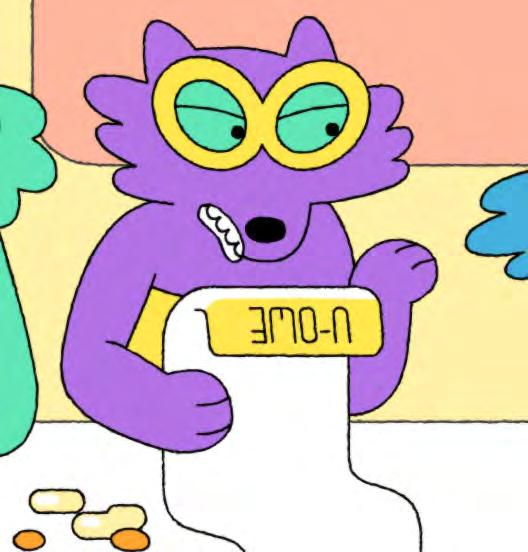
To hone the show’s mockumentary-style direction, Brunson recruited an alum from The Office—Randall Einhorn. She told Abbott EPs Justin Halpern and Patrick Schumacker it needed a director with a lot of specific experience.
“My own stipulations kind of pigeonholed us into a world of white men, because I very much said, ‘I need whoever does the pilot to have done mockumentary before and have done a lot of it,’
From left: Brunson with Robin Thede in A Black Lady Sketch Show ; Blazor Wulf, Brunson's voice character in Adult Swim show Lazor Wulf
66 DEADLINE.COM HBO MAX/ADULT SWIM
“It’s not something that men have to really deal with often, the doubt of it. So, I just don’t waste my time with that. I’m here. The proof is in the pudding. I have no reason to think that I’m not good at what I do or that I don’t deserve to be in the position that I’m in.”
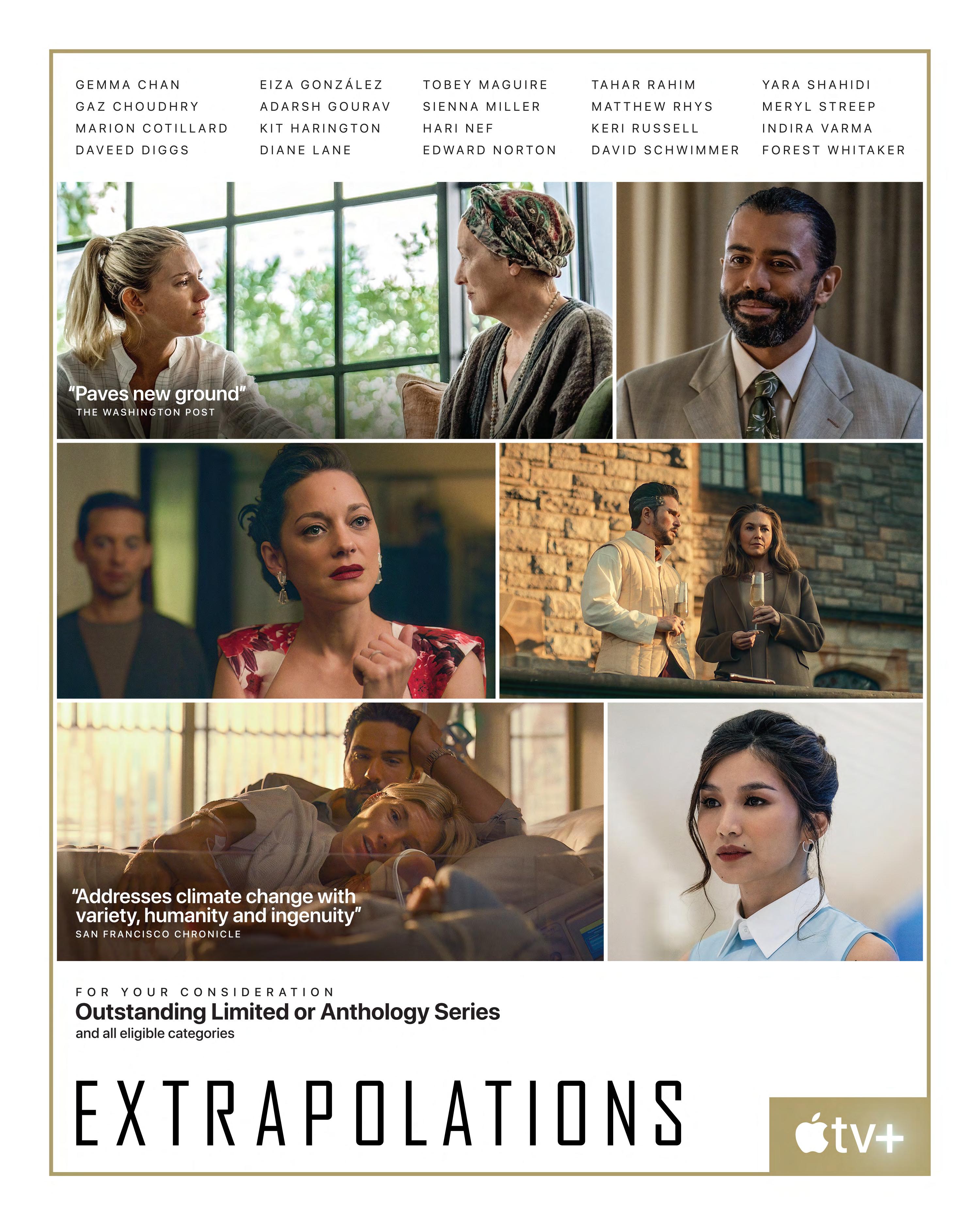
and that immediately made our pool so small. We came in being like, ‘Oh man, we’d love a woman of color to direct.’ We were so gung-ho about that. And then I was like, ‘Yeah. Also, they need to have done mockumentary, and a ton of it.’ And I was like, ‘Well, you know what? I’m not willing to sacrifice this. This is important. We need someone who has done it.’ I had never done it. Pat hadn’t. Justin hadn’t. ABC hadn’t since Modern Family.”
Einhorn clicked with the show right away. In fact, he liked Abbott so much he became an EP. “Randall just got it,” Brunson says. “He saw the pilot so clearly, and then he saw the rest of the show so clearly.”
He also had no intention of recreating The Office with Brunson’s material. “In his interview, he talked a lot about tone. He was like, ‘This show feels warm. It feels warmer than The Office.’ He was like, ‘I’m seeing warm colors.’ It was little things too. In The Office they would do their talking heads sitting down in one of the conference rooms. But the first time he did the talking heads in
Abbott, he had it set up in the hallway with people passing by. That was to help show that these people don’t really have that much time to rest. They’re not bored like they were at The Office, they’re on their feet. And it’s little things like that that make such a big difference. It’s such a small thing, but it helped set our show in motion and helped give what makes it special.”
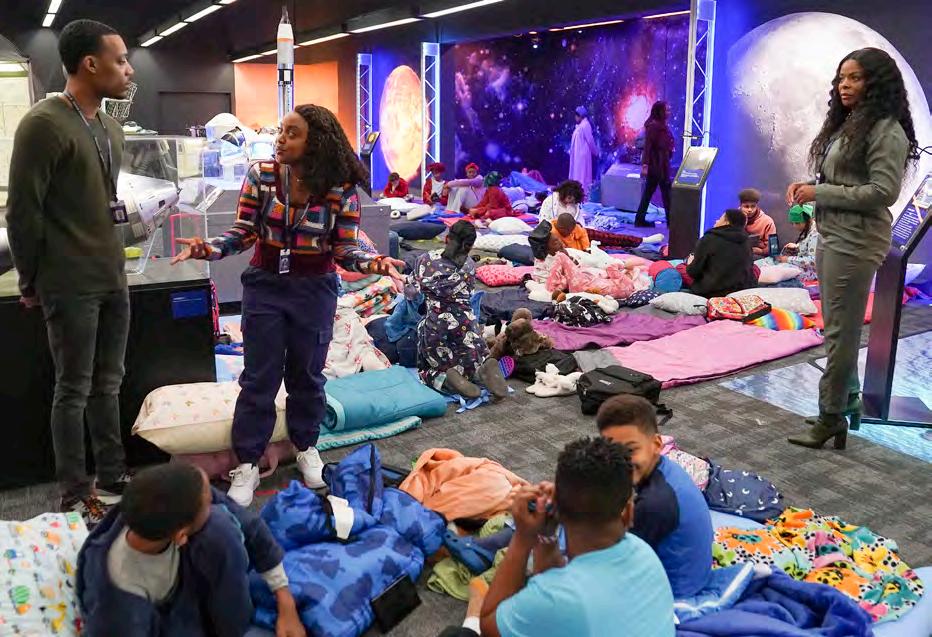
At the time of writing, Brunson has not yet begun shooting Season 3, but she’s ready to go. And she has always known what she wants the show’s final end point to be.
“I have planned out Season 3,” she says. “I really think of writing Abbott, or writing maybe any good TV show, like you’re writing a book. And I think a lot of people, a lot of authors, they know what the end of the book is, but the journey on the way is just about getting there and finding exciting turns. It’s different with 22 episodes of network television because while I have specific points I want to hit, we have so many episodes, and we have to make sure that we’re protecting our plot points, but still having a great time with the audience. And some of our best episodes are when the characters just get to fuck around, and we’re not really talking about anything or doing anything. But I know what I want the ending of Abbott to be, which helps me. We’re just going toward that point. And I don’t know how many seasons we’ll have, so as long as I keep that ending in mind, we can always move toward it.”
Last year, Brunson signed a muti-year overall deal with Warner Bros. Television, and she’s thinking about her mission for the future.
“The other day a friend’s son was reading me this Dr. Seuss book, and I know he’s a controversial figure, so it’s not about him, but I was just listening to that book, like, ‘Man, this is a good story.’ I mean that in the most basic way. I think that’s what we need to go back to. I know that Abbott gets a lot of praise for its diversity, for the topics we talk about, the things we touch on. But at its root, I believe that Abbott is just full of good stories. The show alone is a good story, and then the stories we can tell with Abbott are good. And that is what’s important to me, and I think it’s important to any piece of work. All the talent, all of that can only compliment a good story.”
Of course, the burning question is, will she be making that Apple store mockumentary anytime soon? “It’s too massive for me,” she says. “I hope someone does. Some things are so massive, it feels so hard to get them into a show. But Apple was such an experience, it would make an excellent workplace comedy.”
Recently, at a party, Tracee Ellis Ross reminded Brunson of those Apple store days. “She came up to me and was like, ‘Quinta! You used to help my mom.’ Her mom would come into that store, and it was amazing to me, because she wanted to know how to work her own Apple products. A lot of people in her position would send their assistants or whatever, but she would come in that store for her appointment every week, and so it would just be the Diana Ross sitting at a table at the back.”
Pure sitcom gold, indeed. A
From left, Tyler James Williams, Brunson and Janelle James in Abbott Elementary
68 DEADLINE.COM ABC/GILLES MINGASSON
“I really think of writing Abbott, or writing maybe any good TV show, like you’re writing a book. And I think a lot of people, a lot of authors, they know what the end of the book is, but the journey on the way is just about getting there and finding exciting turns.”

Harnessing audiences for film and television content is now more challenging than ever thanks to variables such as the streaming model disruption and aftershocks of the pandemic. And while the industry tries to keep up with the ever-evolving landscape, content creators on YouTube are attracting enormous audiences to their channels and building multi-million-dollar empires in the process.
YouTube has 2.1 billion monthly active users across the globe and around 122 million daily users—numbers that show no sign of abating. The figures clearly show that, in terms of eyeballs on screens, the platform’s reach often surpasses film and TV viewing figures. Younger audiences are increasingly spending their time scrolling through the site’s video offerings, a fact that has caused the film and television industry to sit up and take notice. It’s understandable why many believe this platform—which is less than 20 years old—will continue its growth as a global one-stop shop for entertainment.
To illustrate this, we’ve handpicked seven of the most disruptive and dynamic YouTube talents making waves on the platform. These are savvy entrepreneurs with loyal fan bases who successfully monetize their endeavors in a way never seen before. For the older generation who might be unfamiliar with consuming content on YouTube, it’s a hard concept to grapple with, but there’s no doubt about it: YouTubers are changing the game of content creation in a way we could have never foreseen.
MrBeast
At just 24 years old, MrBeast (real name Jimmy Donaldson), has become the most-subscribed individual and highest-paid YouTuber ever to have launched off the platform. Famed for his costly stunts and cash-prize giveaways, he boasts a whopping 116 million (and counting) subscriber tally for his main MrBeast channel which led to him earning $54 million in 2021. He’s got four additional channels, which collectively have more than 86 million subscribers, and Forbes currently
estimates his net worth at around $500 million.
These are some staggering numbers for a guy who started uploading arbitrary content, such as filming himself playing computer games on the platform back in 2012. Five years later, MrBeast cracked the YouTube code when a video of him counting to 100,000 went viral, catapulting him into YouTuber fame. Since then, he’s continued his trajectory in the vlogging sphere with a number of crazy stunts that continue to reel in
subscribers, such as building a real-life Willy Wonka factory to promote his Feastables chocolate bars (a gimmick that attracted 37 million views in three days), as well as a $456,000 real-life Squid Game experiment, and the courageous confinement of being buried alive for 50 hours. The North Carolina-based star spares no expense with his wild antics: the average budget of a MrBeast video is between $1 million and $3.5 million.
MrBeast has perfected the way to market to his subscribers throughout the years and has successfully used the platform to boost his offline endeavors, which, as well as his chocolate bars (available in Walmart stores in the U.S.), include his MrBeast Burger franchise, a delivery burger service that became the fastest-growing restaurant in the U.S. with more than 1,000 locations in two years. The latter made $100 million in revenue by July 2021 after it launched in December 2020. The YouTuber has also ventured into philanthropy by giving away money and filming it for content. Most recently, he posted a video where he helped 1,000 people get sight-restoring surgeries, a gesture that drew as much criticism (for ‘performative altruism’) as praise.

Linus Tech Tips
 Canadian YouTuber Linus Sebastian
Canadian YouTuber Linus Sebastian
first founded his popular Linus Tech Tips channel in 2008, and today, just over a decade later, its 15.3 million subscribers can tune in to see reviews on products ranging from computer processors to nuclear fusion reactors as well as emerging technologies. His production agency, Linus Media Group, which started out in his garage, now has more than 80 employees, and according to some reports, Sebastian has an estimated net worth of $50 million. His eight channels have a total of 26 million subscribers, with the main channel, Linus Tech Tips, dubbed the most-watched technology channel on YouTube. Videos such as a computer capable of supporting seven users simultaneously or a three-part series documenting the making of an 18-carat gold Xbox controller have continued to lure in viewers, with the former drawing in 6 million views and the latter 1.3 million views.
In 2017, LMG launched its annual LTX Expo convention, which brings together tech-focused content creators and personalities. Its goal is to “create a hands-on experience” with the tech community and Linus Tech Tips fans. Sebastian also founded his own online streaming service, Floatplane, a paid-for service that allows content creators to upload and monetize their own content.
BURGERS, NINE-FOOT JEANS AND AN 18-CARAT GOLD XBOX CONTROLLER: HOW GEN Z IS EXPANDING THE VLOGOSPHERE BY DIANA LODDERHOSE
70 DEADLINE.COM DAVE KOTINSKY/GETTY IMAGES/YOUTUBE
MrBeast Linus Tech Tips
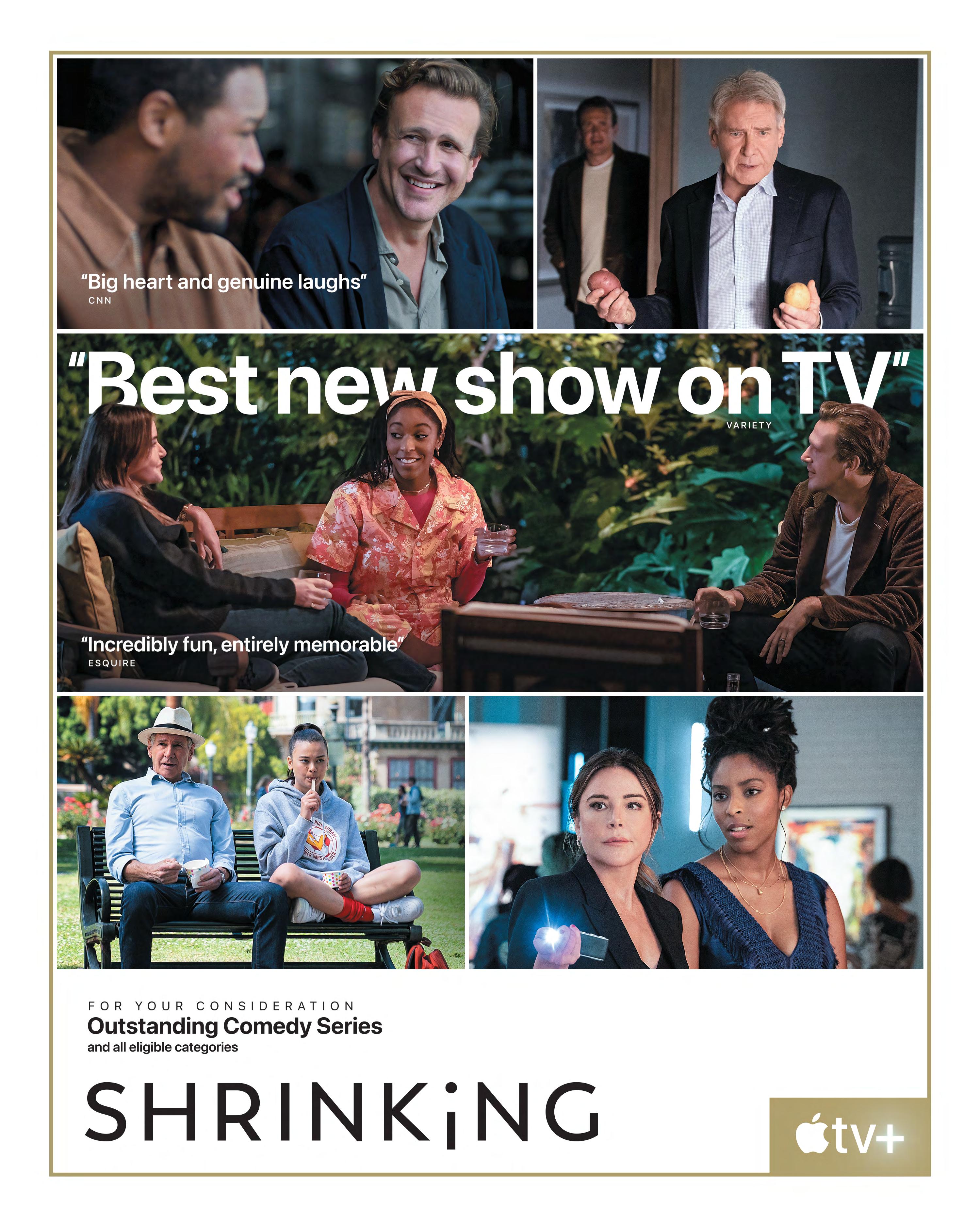
Kids Diana Show
Younger audiences are increasingly turning to YouTube rather than linear television to watch their favorite shows, and Kids Diana Show is one of the platform’s most popular channels for children. It stars nine-year-old Eva Diana Kidisyuk and her brother Roma in the popular Diana & Roma videos with content including kids’ songs, roleplays, unboxings and educational entertainment and has more than 110 million subscribers. Since launching in 2015, Kids Diana Show has amassed more than 100 billion views, making it the sixth most-viewed and sixth mostsubscribed show on the platform.
Ukrainian-American Diana and Roma are frequently joined by their parents, Volodymyr and Olena, on the show, which now has been translated into 20 languages across 20 channels on YouTube, bringing in another 100 million subscribers to the content.
The Kidisyuks initially started the channel in 2015 to share video content of their children with family and friends, but when their subscribers hit the 1 million mark, both parents put their energies into the channel full-time and have since relocated from Ukraine to Miami (for a year) and then to Dubai, where they currently reside.

In 2020, the brand inked a deal with digital kids’ content studio Pocket. watch, to create a global franchise named Love, Diana—The Princess of Play that expanded the empire into a live-action animation series, which is available on OTT platforms such as YouTube, Prime Video, Roku Channel and Samsung TV+. The deal also spawned a mobile game and
merchandise. While no official stats on income have been released, some reports suggest Kids Diana Show is worth more than $100 million.
MKBHD
Marques Keith Brownlee, aka MKBHD (his initials plus HD for ‘high definition’), is another tech-savvy entrepreneur who has parlayed his reviews of tech products and gadgets into a successful online business on YouTube and through his podcast Waveform. He gives viewers videos on everything from drones to smartphones and frequently speaks to some of the tech world’s biggest corporate professionals. His loyal fan base has seen him build a reported $40 million empire ever since his 2014 review and scratch test on the iPhone 6 (which has since amassed 9.2 million views on YouTube).
MKBHD has 16.8 million subscribers on his channel, and he has interviewed a raft of big names, including Bill Gates, Will Smith, Neil deGrasse Tyson, Mark Zuckerberg and Barack Obama. Oh, and he is also a professional ultimate frisbee player.

Dude Perfect
Fourteen years ago, five friends at Texas A&M University—Tyler Toney, Garrett Hilbert, Cody Jones and twins Cory and Coby Cotton— launched their first video on YouTube, which saw them shoot a series of wild basketball shots in their backyard. Today, that video has had more than 44 million views and the channel now boasts more than 59 million subscribers, making it the second-most subscribed sports channel on the platform.
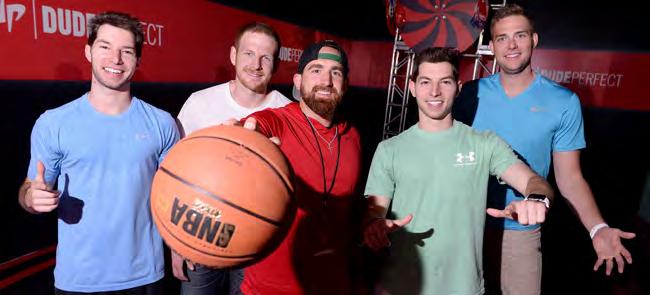
With the tagline “five best buds just kickin’ it,” the sports and comedy brand has had guest appearances from the likes of Paul Rudd, singer Tim McGraw, Serena Williams, Green Bay Packers quarterback Aaron Rodgers and members of the 2012 U.S. Olympic Team to name a few. They set a Guinness world record in 2009 for the longest basketball shot, have been featured on ESPN and have even filmed with British soccer clubs Manchester City, Arsenal and Chelsea.
All this fanfare has generated the Texan quintet a string of lucrative sponsorship deals, a book deal, live tours, merchandise and a television series dubbed The Dude Perfect Show on CMT, which then moved to Nickelodeon. In 2020, they partnered with YouTube Originals for the documentary Backstage Pass, which chronicled their live tour.
Casey Neistat
Casey Neistat is arguably one of the most well-known faces in the vlogging world, having successfully utilized the platform to spin out several lucrative businesses. A filmmaker in his own right, he kickstarted his career in the early 2000s on video projects by artist Tom Sachs and a short doc called iPod’s Dirty Secret, which covered the absence of a battery replacement option for Apple’s newly launched iPods. He then began his daily vlogs on YouTube in 2015, which captured his life in New York City and covered random experiences such as flying in first-class on an Emirates flight for $21,000.
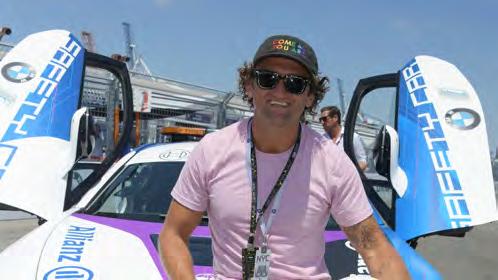
His comic delivery and digital savviness led to him expanding into other
tech and startup businesses: In 2015, he built a video-sharing app called Beme, which CNN then bought for $25 million. When that deal came to an end a few years later, Neistat launched a new workspace venture dubbed 368. He also writes, directs and stars in commercials—his Make It Count video for Nike has had more than 32 million views—and his documentary Under the Influence, about YouTube phenomenon David Dobrik and made with Christine Vachon’s Killer Films, debuted at SXSW last year.
Safiya Nygaard
Safiya Nygaard worked as a video producer for BuzzFeed’s popular Ladylike series, in which women attempted a variety of beauty rituals, before she left to launch her own YouTube channel in 2017. Her video “Why I Left BuzzFeed” has racked up more than 15 million views since she posted it in 2017, one of many videos of the same name posted by ex-BuzzFeed staffers that year.
But what has made Nygaard so appealing to her subscribers (all 9.66 million of them) is her offbeat approach to vlogging about beauty: rather than standard tutorials or product reviews, Nygaard makes wildly entertaining content with series such as Bad Beauty Science, where she mixes every lipstick from Sephora together, or fashion-focused content such as wearing wacky items of clothing like 9-foot-long jeans. Her love of creating content independently has seen the Stanford graduate grow her online business to a net worth of $5.5 million, and in 2019, she released a lipstick collection with ColourPop. A
 MKBHD Safiya Nygaard
Dude Perfect
MKBHD Safiya Nygaard
Dude Perfect
72 DEADLINE.COM ROY
IMAGES/YOUTUBE
Kids Diana Show Casey Neistat
ROCHLIN/DAVE BENNETT/STEFANIE KEENAN/GETTY
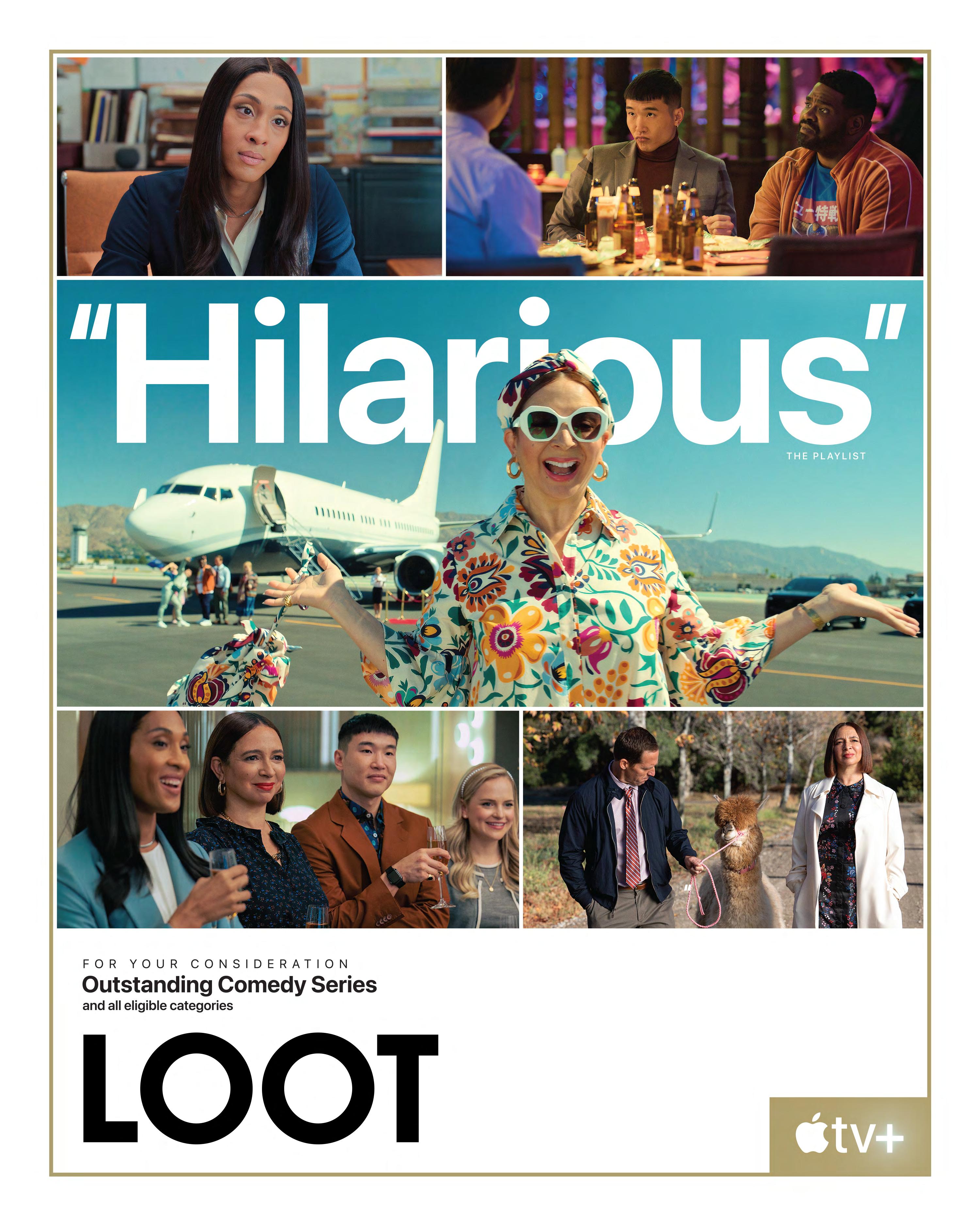
VISI N ENTERTAINMENT
Back in 2012, Liam Scholey and Andres Budnik, assistants at WME and Creative Partners Group respectively, met by chance at Laurel Hardware, a vibey bar-restaurant in West Hollywood. Scholey, who grew up in Panama, overheard the Chilean Budnik speaking Spanish, and the two got to talking.

Scholey was in an agent training program, and he andBudnik discussed the lack of Latinos at their companies.
“I worked for an agent named Eric Rovner,” Scholey says. “He was the Latin agent for the agency. But there were very few Latin people. And anything that had to do with Latin America or speaking Spanish, people would come to me and ask me. And that happened at every company that I worked at. It was surprising at such large companies there weren’t a lot of people that could navigate that space or that world.”
The men became fast friends, and on a Thanksgiving surf trip together, an idea bloomed.
“We really wanted to represent diverse underrepresented voices, in particular Latinos, which is our culture, and the culture we love,” Budnik says. “To put them in front and behind the camera. We saw an opportunity to push for terrific talent, terrific voices that were not having a space in the industry. So, we said, ‘Let’s resign from where we’re working and start our own company.’”
In December 2013, Vision Entertainment was born. At that time, the U.S. and Latin American industries were “two separate worlds”, as Scholey puts it. “Mexican actors were working in Mexican television, or they would do Telemundo, but there wasn’t a lot of crossover, because the [U.S.] roles that were written weren’t there for these types of actors.”
So, the co-CEOs went looking for more Latino actors. And to tackle the lack of authentic roles, they added writers and directors to their clientele.
Next came an office in Mexico City. And then a production arm, overseen by their newest hire, Eben Davidson, Paramount’s former senior VP of acquisitions and production, alongside Mexico-based producer Carolina Tamez. The agency now has projects and represents talent across multiple languages, continents and genres.
And their fight for representation and equality rages on. “We had a client that was a renowned actor from Latin America,” Budnik says. “[A U.S. show] was offering him $15,000 per episode. Which is very, very, low. We said, ‘Hey, why? You’ve budgeted double, or more than double that.’ And they said, ‘Oh no, because he has never worked in the U.S., this is likely the most money that he’s ever made.’ We said, ‘Pay them what their job is worth!’” A
HOW SURF GAVE BIRTH TO A TRAILBLAZING AGENCY AND PRODUCTION COMPANY THAT FIGHTS FOR EQUAL PAY AND BETTER ROLES FOR LATINO ARTISTS BY ANTONIA BLYTH
74 DEADLINE.COM CARLOS NU ŇEZ/UNIVERSAL/20TH CENTURY FOX/WARNER BROS./SHUDDER/IFC MIDNIGHT/PARAMOUNT/ EVERETT COLLECTION
From left: Andres Budnik and Liam Scholey, co-CEOs of Vision Entertainment.
WHY THE SURPRISE SUCCESS OF SKINAMARINK SUGGESTS A NEW DAWN FOR THE GENRE
BY DAMON WISE
So far in 2023 we’ve had the sixth installment of the Scream franchise and a fifth Evil Dead movie. Both did surprisingly well at the box office, given that the failure of the 13th iteration of Halloween suggested that horror fatigue might be setting in. But for genre crowds, the real story this year was a Canadian film, shot entirely in the director’s family home, that cost just $15,000 and freaked out audiences with close-ups of a creepy Fischer-Price toy telephone. Given a speciality theatrical release in January, Kyle Edward Ball’s Skinamarink brought in a worldwide gross of $2 million, even though it was set to appear on streaming service Shudder less than three weeks later.
Skinamarink followed Zach Cregger’s fall 2022 release Barbarian by becoming a genuine word-of-mouth hit, but where Cregger’s movie caused a stir for its outlandish bait-andswitch slasher-movie plotting, Skinamarink stood out for its near-total lack of plot, being the nightmarish tale of two unseen children facing a deadly dream demon. One could draw parallels with Paramount’s Smile, which spent a lot on a gimmicky ad campaign, or AI chiller M3GAN, which came from the tried-andtrusted Blumhouse stable, but the difference is that both films went viral in a very different way, with audiences colluding to keep their secrets and emphasising the necessity of in-person screenings.

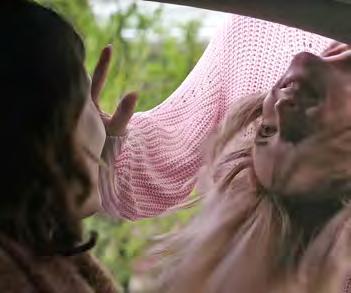
Ironically, Shudder is firmly on the case with the latter, as proved by their handling of special effects genius Phil Tippett’s animated feature debut Mad God. Made as a side project over 30 years and described by Fangoria as “a primordial world of tortured souls, globular monsters, and gore-filled hospital beds," Mad God doubled its $150,000 budget at the box office—even while it was streaming—and since its limited U.S. release in June last year has sold to Japan, France, Germany, Italy and Scandinavia.
It’s too early to speculate quite how this kind of success can be replicated, but the lesson to the majors is that, in the drive to get audiences back into cinemas post-pandemic, the horror movie is still an important tool. As the late George A. Romero said, “If one horror film hits, everyone says, ‘Let’s go make a horror film.’ It’s the genre that never dies.” A

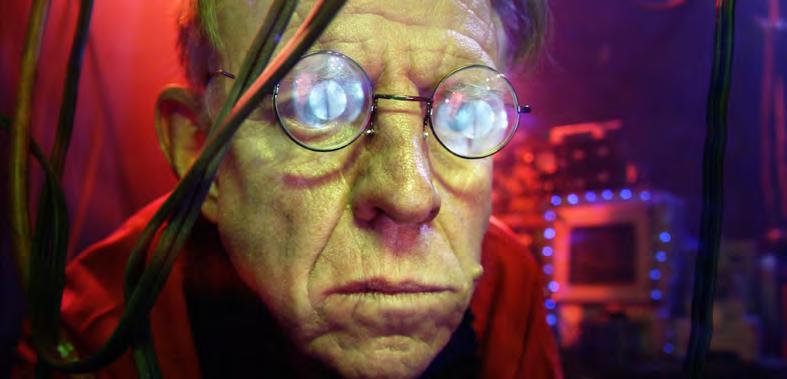


DEADLINE.COM 75
Skinamarink Smile
Evil Dead Rise
Mad God
Barbarian
M3GAN
HOW
For foreign audiences, Indian cinema has long been closely associated with Bollywood—sprawling, colorful spectacles that feature songs and dance routines—and often one of the three Khans (the unrelated trio of Aamir, Salman and Shah Rukh). But there has been a shift across the past year as focus turned from Mumbai—which had suffered a string of misses until Shah Rukh Khan’s Pathaan took off on a tear early this year—toward Southern India.
The Indian film industry is one of the world’s most prolific, but it somehow feels like a switch has been flipped with interest from non-diaspora audiences. In part, that’s down to S.S. Rajamouli and his Telugu-language pic RRR, which became a phenomenon unto its own with worldwide box office appeal and awards recognition from myriad bodies including the Academy, who made RRR’s “Naatu Naatu” the first song from an Indian movie to win an Oscar.

Rajamouli had already made waves globally with his two-part Baahubali franchise. But RRR put Telugu titles into the mainstream outside India, arguably fueling growth in so-called pan-India movies. RRR’s N.T. Rama Rao Jr. (NTR) was recently set to star with Hrithik Roshan in War 2, which, along with Pathaan, forms part of Yash Raj Films’ Spy Universe. The crossover could give War 2 wider audience appeal.
India, a multilingual and multi-ethnic country, consists of several different industries corresponding to different states, such as Bollywood (Hindi cinema), Tollywood (Telugu cinema) and Kollywood (Tamil cinema).
NANCY TARTAGLIONE
THE RISE OF S.S. RAJAMOULI’S ROARING BREAKOUT SUCCESS RRR HELPED REVOLUTIONIZE INDIAN CINEMA BY
Given that Hindi is understood in almost three quarters of India, Bollywood was historically the dominant player. As box office analyst Jatinder Singh says, “Due to the language barrier, the industries like Tollywood and Kollywood remained regional players, catering only to their state primarily.” That was until South Indian films began getting dubbed into Hindi, mostly for TV, but also coinciding with the emergence of multiplexes in India, especially in the north. The multiplexes and their higher ticket prices, he says, “started making cinemagoing an elitist activity, and Bollywood started to cater to these multiplex audiences, cutting down on larger-than-life commercial masala films.” In turn, South Indian films dubbed into Hindi began to dominate television, too, as they provided what Bollywood was not delivering.
Then, in a watershed moment in 2015, a Hindi version of Rajamouli’s Baahubali: The Beginning was released theatrically and became a huge breakout success. In 2017, the sequel followed suit. As the audience expanded for South Indian films, so did budgets and production values.
Says Sri Harsha Chundru, co-founder of Walls & Trends, which marketed RRR and regularly works with major titles, “Telugu cinema has proved that language does not matter. A good and emotional story can transcend linguistic and sociocultural barriers. Also, we are one of the few industries that managed to strike a balance between commercial or colloquially speaking ‘mass’ elements and a larger-than-life message or any other inspiring and message-oriented takeaways. I think RRR and other unapologetic entertainers, so to speak, have paved the way for mainstream commercial cinema and inspired
76 DEADLINE.COM/ AWARDSLINE CLASSICS ENTERTAINMENTS/EVERETT COLLECTION
Top: Pushpa: The Rise—Part 1 , directed by Sukumar and starring Allu Arjun (center).
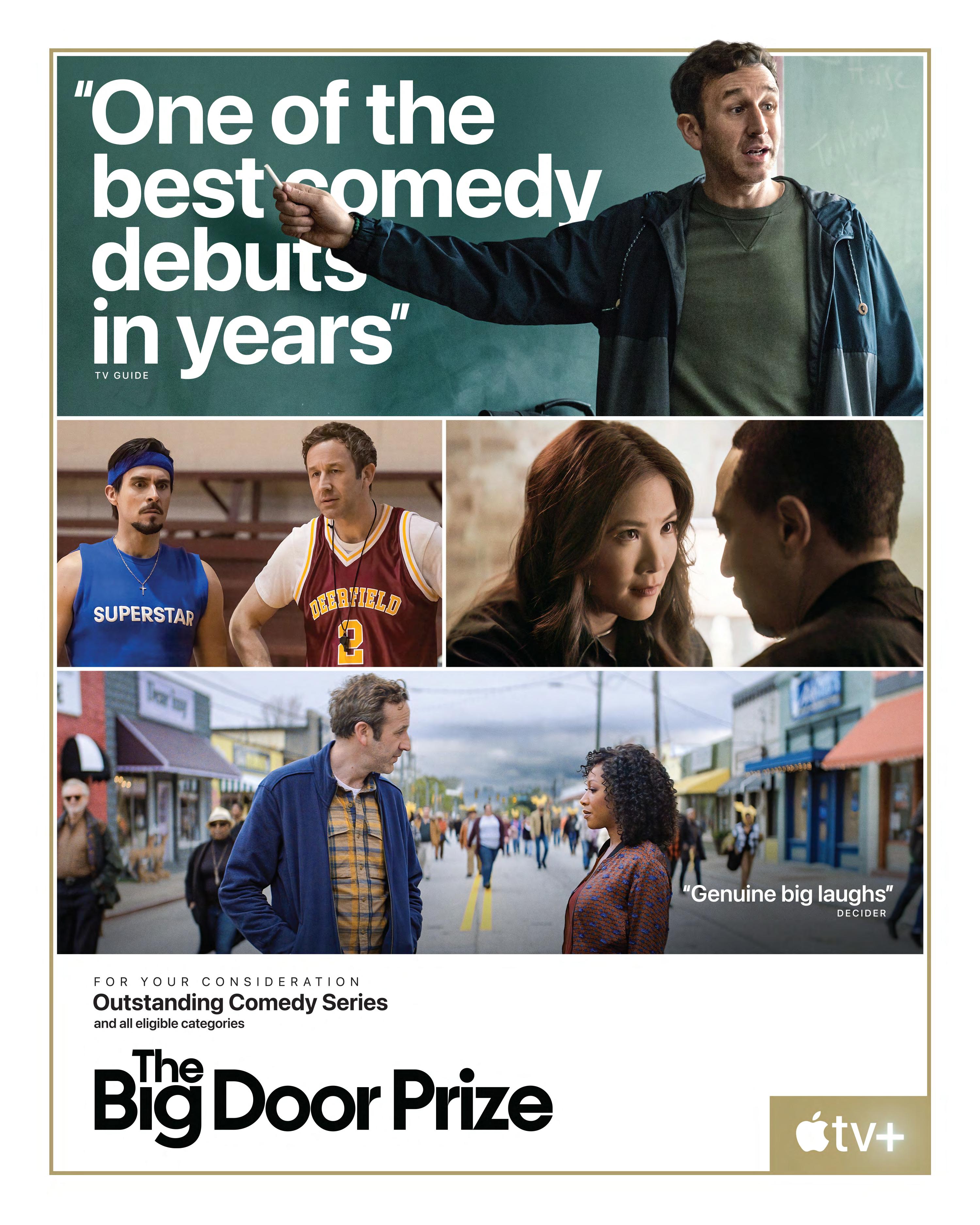
other filmmakers to dream big.”
He calls Telugu cinema “a melting pot of culture”, suggesting that audiences can expect “many more multi-starrer films featuring actors from different industries across India, if not the world.” Whatever comes next, it will be, “bigger, better and bolder.”
But Chundru also predicts, “While the quality of VFX and graphics are likely to exponentially improve, there will be a rise in small-budget films as well. Large-scale Telugu films put Telugu cinema as a whole in the limelight, so audiences across the world would be eager to explore more of Telugu cinema in all its shapes and forms.”
Actress Pooja Hegde, who has appeared in Telugu, Tamil and Hindi films, says that while the perception from outside of India is that Telugu cinema has only just emerged in the past year,
this is not the case. It has been “years of audience building, hard work, and love. And when the dubbed versions were released simultaneously with the original language version in the theaters, the payoff has been huge. It is encouraging that the West is beginning to understand that India is a very culturally diverse country and that there is more to it than just Hindi films. There is a lot of talent in India and film industries from across the states are producing exceptional films, be it through its storytelling or technical skills.”
Says Singh, “2022 felt like it was the year when the result of this was on full display as multiple South Indian Hindi dubbed films found success.” Those also include Pushpa: The Rise—Part 01, Kantara, Karthikeya 2, Vikram and Ponniyin Selvan: Part I

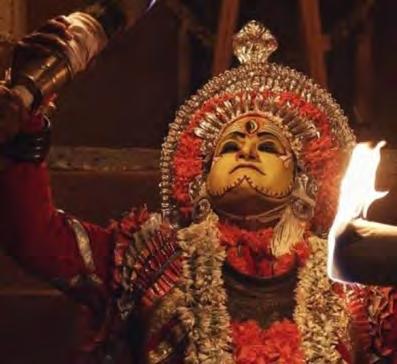
Anticipation ahead is high for upcoming Tollywood titles, including Ram Charan’s Game Changer,
Clockwise from top: Lokesh Kanagaraj's Vikram ; Rishab Shetty's Kantara ; S.S. Rajamouli 's RRR and Baahubali: The Beginning

NTR’s next untitled pic and Hombale Films’ Telugu-language action thriller Salaar, starring Prabhas, who also features in Yash Raj’s Project K with Deepika Padukone and Amitabh Bachchan for release in early 2024. Hombale, which released Prashanth Neel’s Yash-starring Kannada-language smash KGF: Chapter 2, is also working on Kannadalanguage Kantara 2, directed by and starring Rishab Shetty. It’s part of an ambitious slate across four South Indian languages from the studio, which recently pledged to invest $370 million in films and series over the next five years.
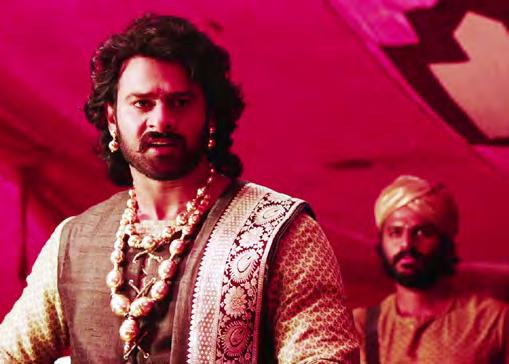
RRR star Ram Charan says, “There is a great exchange of culture that is happening right now. The boundaries are becoming seamless and blurred, and I think it’s important that my nation calls themselves the Indian film industry rather than sectioning ourselves into different industries… I’m happy that I’m in an era where this change is happening. It’s good to be part of the global film industry now.”
Dylan Marchetti of Variance Films, who, alongside Potentate Films, Sarigama Cinemas and Raftar Creations, released RRR in the U.S. and led the Academy push, said recently that RRR could be a “gateway drug”, adding, “There are a lot of people— programmers, bookers, industry people—who were only peripherally aware of Telegu/South Indian cinema. There will be more films like this that can cross over.”
Today he remains bullish. “There's always going to be an audience of film lovers that, if it’s good, they’ll find it. I’m interested in developing the secondary Western audience that needs to be marketed to. That audience, as it grows, will have offshoots leaning more toward action or the fantastical. You need to have a steady supply and marketing in conjunction with the global release. I think there’s a hunger now.”
Variance is looking for the next title to bring to U.S. cinemas. “We are doing our part to put the best of the best in front of the audience,” Marchetti says. “There is a curiosity—once you’ve seen something you’ve never seen before, you want to see more. My hope is that it continues to advance people’s minds.” He points to examples like Crouching Tiger, Hidden Dragon, which spurred folks to dig more into martial arts movies, or the success of Parasite, which turned them on to Korean cinema.
Rajamouli has previously said that the success of RRR and the rise of Telugu cinema is “really important” to him. “Because now I can expand even more,” he explained. “More and more films are going to come and cross these language barriers and tap into people across larger areas. Hopefully, we grow beyond, not just in the country, but into other countries, cultures and languages as well.” A
78 DEADLINE.COM/ AWARDSLINE PRIME MEDIA, BIRCH TREE ENTERTAINMENT, RAFTAR
CREATIONS, HOMBALE FILMS, EVERETT COLLECTION

THERE’S
NO ROOM FOR IMPROVEMENT IN CHIP AND JOANNA GAINES' LOW-KEY BUT FOCUSED MEDIA EMPIRE BY LYNETTE RICE

It wasn’t the kind of splash that Chip and Joanna Gaines were looking to make. During an anniversary trip to Mexico in 2021, Chip Gaines thought it would be fun to post a video of his bikini-clad wife doing a backward plunge into the pool. “I had to kind of beg her,” he recalls, before posting the video and several other images from their sunny vacation on Instagram. “It was so funny. I thought nobody would care.”
Oh, but they did. Almost overnight, the images went viral and were picked up by publications like People magazine “My friends started texting screenshots of me in that swimsuit,” says Joanna. “And I was like, ‘Oh, OK. Noted. Don’t do that.’ I don’t know if that is something you ever get used to. We feel like we’re pretty normal people from Waco.”
But ‘normal’ people in Texas don’t usually turn a simple passion of flipping homes into a multi-million-dollar empire. In just nine years, the couple went from hosting HGTV’s Fixer Upper to partnering with Warner Bros. Discovery to launch the Magnolia Network in 2022. The parents of five are also the sole owners of a broader Magnolia fiefdom that includes a Waco-based shopping center, restaurants, vacation rental homes, a Target-based merchandise line and their Magnolia Journal magazine.
“I think what’s been cool about us—and what I’m proud of— goes back to that sort of naive position of when we got into this. We didn’t look at something we thought was successful and then try to emulate it; try to reproduce it,” says Chip Gaines proudly. “So, if we’re disruptive, it’s because we are completely original and completely authentic. And then even the word authentic, especially over the last three to five years, is kind of like a gag. It’s become its own tagline or sales pitch: ‘Oh, wait until you meet this couple! They’re really authentic!’ And then all the things that preceded them are exactly what they are trying to replicate. We’re just being ourselves.”
The humility runs strong in these effervescent entrepreneurs, especially in light of the decision by Warner Bros. Discovery CEO David Zaslav last year to move Magnolia from the Warner Bros. side of the company under HBO and HBO
80 DEADLINE.COM
Max chief content officer Casey Bloys. “We laugh,” says Chip Gaines about how Fixer Upper reruns can now be found alongside some of the greatest scripted shows ever made for television. “We were just like, what? To be with The Sopranos and, uh, is it The Least of Us?”
“The Last of Us,” responds his wife. “We are The Least of Us.”
“Yeah, we feel like the least of us,” laughs Chip. “But to be in the company of those legendary writers and producers, and then here’s our little family network stapled to the back. We feel like a fly on an elephant’s rear end.”
Hardly. Magnolia Network is already a top 50 cable network among women 18+ and boasts more than 600 hours of original programming that includes the entire Fixer Upper library, Magnolia Table with Joanna Gaines, Maine Cabin Masters, The Lost Kitchen, Homegrown, Restoration Road with Clint Harp and more. It also debuted two record-breaking shows in 2022: Fixer
Upper: Welcome Home (9.2 million viewers) and Fixer
Upper: The Castle (4.5 million viewers).
This means the appetite for home improvement programming has never been bigger, which is why the Gaines are eager to find their next big breakout.
“When you think of these reveals, it’s like everyone thinks it needs to be bigger and bigger,” Joanna Gaines says. “Especially in the world we are going through today,

how do we give people content that is actually attainable? How do we show people relatable content that’s still super-inspirational and helpful for the viewers? I think more than the big reveals, the biggest challenges are in these smaller spaces where you’ve got a $10,000 budget and a weekend to do it. I think with the economy and all the stuff that’s going on, more of these projects that are scaled back can still be beautiful.”
In other words, you don’t always have to go big to make a splash. A
“I think what’s been cool about us—and what I’m proud of—goes back to that sort of naive position of when we got into this. We didn’t look at something we thought was successful and then try to emulate it; try to reproduce it.”
CONGLETON/NBC/NBCU
BANK DEADLINE.COM 81
—CHIP GAINES
NATHAN
PHOTO
WHAT HAPPENS WHEN A GLOBAL SUPERSTAR TEAMS UP WITH A NIGERIAN MOGUL? WE’RE ABOUT TO FIND OUT…
 BY DIANA LODDERHOSE
BY DIANA LODDERHOSE
When two British-born powerhouses get together—Idris Elba, an actor-director-producer of Sierra Leone, Creole and Ghanaian descent, and Nigerian-rooted Mo Abudu, largely considered the go-between for African content to the rest of the world—they have a powerful chemistry. Remarkably, though, they’ve never made anything together.

This is about to change. In March, the two quietly announced that they would join forces to empower and uplift talent from Africa through their respective companies—Elba’s Green Door Pictures and Abudu’s EbonyLife TV. It’s a subject of shared passion for both. Throughout Elba’s prolific career, he’s continued to be involved in stories that are related to the African diaspora, from his early work on TV drama Sometimes in April, or The No. 1 Ladies’ Detective Agency, to his upcoming untitled Ghana project, which he will direct and star in. He’s long championed under-heard voices, and in 2016, he delivered a powerful address to U.K.’s Parliament about the need for greater diversity and representation across the sector.
In tandem, Abudu has spent her career trying to put African stories on the global map. After a career in recruitment, the straight-shooter pivoted to become a talk show host, launching Moments with Mo in 2008 and interviewing the likes of Hillary Clinton and Christine Lagarde in her Africansyndicated show. That show eventually generated EbonyLife Studios and sparked her mission to push African stories to the global market.
When we meet Elba and Abudu one Monday in London, it’s the first time they have met in person, but they interact like old friends. With common backgrounds but differing perspectives, it’s clear there’s a unity in their mission: African stories have long been marginalized by the global film community, and they are going to change that.
82 DEADLINE.COM STEVE GRANITZ/FILMMAGIC/KELECHI AMADI OBI

What are some of the preconceptions about African content that you’re battling right now?
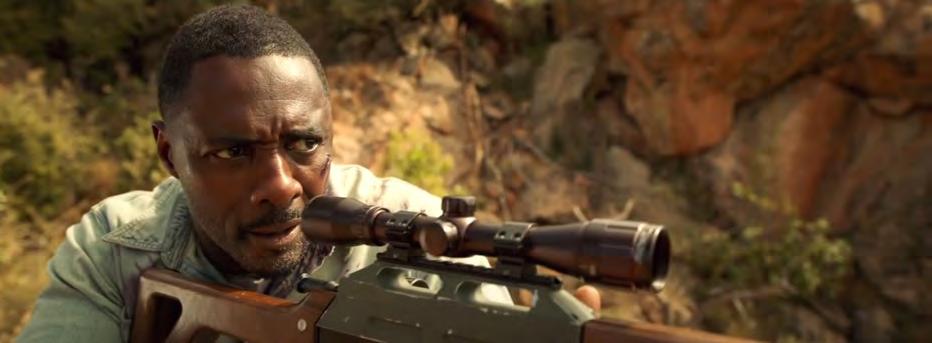
IDRIS ELBA: General knowledge about the African film industry is anchored around a very specific time. That specific time doesn’t account for what happened prior, such as the Nigerian film explosion in the 1970s and what is happening in the future. Everyone now centers everything that happens in Africa around what is described as “Nollywood”.

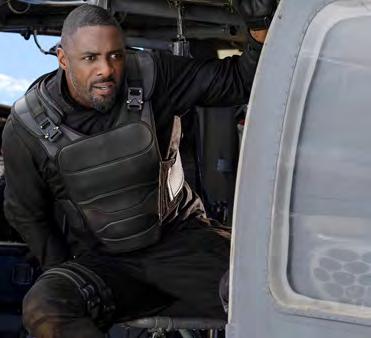

MO ABUDU: Do you know the history behind the word? A Canadian journalist came to Nigeria and decided that he was going to give us the name Nollywood, and that was it. It’s stuck since then. I hate the word Nollywood. The term Nollywood itself is a bad genre of filmmaking. We all know what Nollywood is
supposed to represent—it’s the VHS films that were made back in the day. So, to still be called Nollywood, for me, is a no. We need to use terms like African filmmakers or Nigerian filmmakers.
That’s true—it’s a lazy label to group together a huge span of differing cultures on one continent. Many Indian filmmakers despise the term “Bollywood” as well. Let’s talk about you two and this initiative you’re setting up. Firstly, how long have you guys known each other?
ABUDU: Until today, we haven’t physically met. This is our first real-life meeting. We’ve had Zooms and phone calls.
ELBA: I’ve known of Mo and her work for a while. Our
Idris Elba films, clockwise from top left: Sometimes in April ; Luther: The Fallen Sun ; on The Harder They Fall set with director Jeymes Samuel; The Beast , and Fast & Furious Presents: Hobbs & Shaw
circles have been adjacent for years—probably since the early 2000s. When I started to see what she was doing with EbonyLife TV, I saw this woman that was coming up. She’s different; she’s got a voice, and she’s got perspective. I saw that. And meanwhile, I made my first African film, Sometimes in April, and then I went to Botswana for The No. 1 Ladies Detective Agency. So, it felt like this journey that finds us here today was inevitably going to happen.
ABUDU: I wanted to partner with someone who knows African filmmakers and has the ambition to go further and go wider and take African filmmaking to the international stage. It’s the synergy of Idris having a global perspective and me having a local perspective that works, and we can figure out how we go local for global. I have an obsession with making a big blockbuster that the world is going to see, but putting things into context for Africa, we don’t have the budget. That’s why, no matter what we do in Africa… How global are these films going to be? I’d love for there to be some synergy between our stars and the Hollywood stars. It would help our local projects, incomes and revenues grow.
Mo, EbonyLife Media has several co-production deals in the works with Netflix, Sony Pictures Television, Westbrook Studios, BBC Studios, Starz and Lionsgate, among others. What’s the status of these?
ABUDU: The process of moving from signing development to production can be time-consuming, but we’ve made significant strides with a number of projects. Some of these are being pitched to streamers and broadcasters, while others are going straight from development to production as our partners have their own platforms. But we’re still facing challenges when it comes to gatekeepers who are resistant to new stories from our continent with different backdrops.
Is this where Idris comes in? Tell me about this initiative between the two of you and your companies and your plans for championing filmmakers coming from the African diaspora.

ELBA: I think where our partnership differs slightly from the sort of agreements that Mo has is that I’m in a position as an actor to be able to greenlight projects based on if I want to be in them and if I like them, on varied budgets.
ABUDU: That’s the power Idris brings. Not only does Idris have a production company, but he’s also a great talented actor that people can relate to. He’s also very accessible—you’re able to call him and discuss ideas with him. Even though he’s very busy, he will make the time. That makes all the difference. He’s a partner that is ready to listen.
"It’s important for us to amplify the voices in the continent. If we can build a footprint that is pan-African, then it allows for more diversity in terms of what’s on offer to Netflix, Amazon, Disney, Paramount and all of those guys."
—IDRIS ELBA
84 DEADLINE.COM HBO/JOHN WILSON/NETFLIX/DAVID LEE/NETFLIX/UNIVERSAL/EVERETT COLLECTION
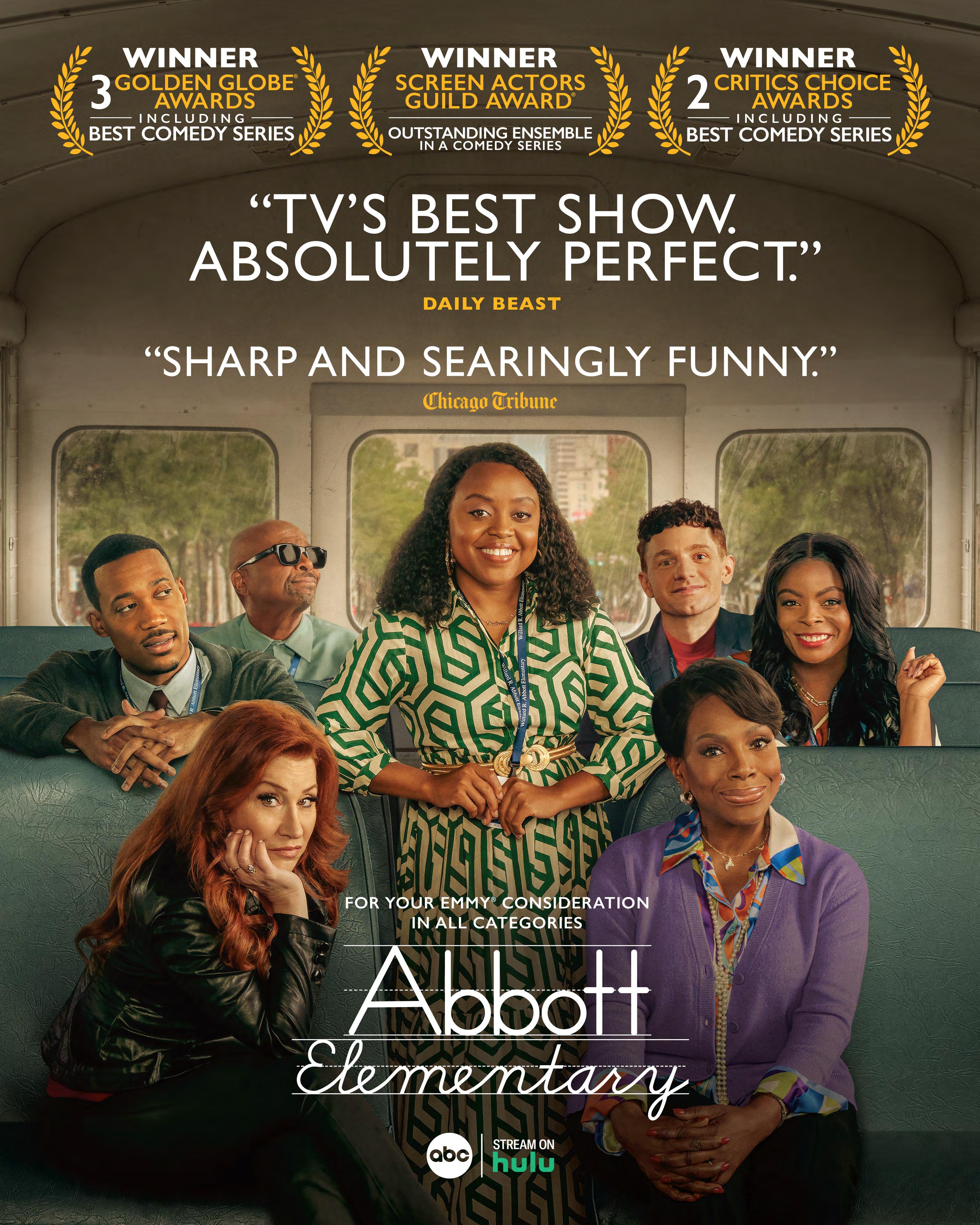
ELBA: I’m aware of my position, and I want to bring people into the room. We are identifying stories that Mo and I want to make, and we have a pyramid of them. But to get the right combination, we need to have the right strategic partners. I don’t want to make five films and find that maybe two of them are good. I want to do two or three films that are amazing. This is a long-term partnership.
ABUDU: The other component to our work is capacity-building and upskilling filmmakers. What I’ve done for the last three years is run the EbonyLife Creative Academy in Lagos, funded by the Lagos State Government, for students who can’t afford it. We’re taking that model, and we want to try and roll it across the continent. We’re still trying to sort out how that would work, but we know that in order for Africa to have the best filmmakers, we must give them the tools to do so. So many I’ve met are confident and self-made. If they are given capacity early, they’re just going to fly.
ELBA: Africa needs talent and capacity. It’s important for us to amplify the voices in the continent. If we can build a footprint that is pan-African, then it allows for more diversity in terms of what’s on offer to Netflix, Amazon, Disney, Paramount and all of those guys.
ABUDU: This is a market that is totally undiscovered. Kamala Harris gave a speech and said that in 2050 one in every four people will be African. What does that say? We have the youngest youth population in the globe. Look at what we did with the music industry. Afrobeats have totally found their way, and those guys have grown by themselves. They’ve gone out, made music, and become global stars without much support. The film industry is harder. It takes more work because of the length of the process as well as finding talents that people are going to recognize, but it’s possible.
ELBA: Afrobeats is a good analogy. But the interesting thing about Afrobeats, and music-making technically, is that the democratization of technology is what has allowed people to make those records: you can make a record with your laptop just as Michael Jackson did in a big studio. You could even do it on your phone. Filmmaking is different, but think of what could happen on this digital highway.
ABUDU: The thing is, these guys can spend a week making a two-minute video. We, unfortunately, cannot—we sometimes have to shoot 10 pages a day on a script to make sure that we stay within budget. In Hollywood, how many pages do you guys shoot in a day?
ELBA: It really depends. For a big-budget film, maybe two or three pages.
ABUDU: Two pages! That’s crazy! Amen to that, because, of course, you’re going to have a betterlooking film if you’re spending one day doing two or three pages.
What are your thoughts when streamers and anyone else looking at growth in the international sector says that Africa is the next market? It’s a massive market with diverse cultures and countries. What do you think about them trying to infiltrate Africa?
ABUDU: Take K-Drama, for example. A show like Squid Game was budgeted at $2 million an episode, which I think is a decent budget for a series like that. But we still don’t have those sorts of budgets locally yet, and we’re told by our partners that budgets will grow when subscribers grow. But it’s a bit of a chicken and egg situation. Which comes first? How do you get subscribers if you don’t have the shows? We’re told the numbers are growing, and they’re getting subscribers based on the budgets that are being invested in the shows that we do. But we have the same costs in production. It doesn’t cost me any less to rent an area or equipment than it does in, say, England, but our margins are lower.
Another challenge we face is the lack of scriptwriters. Because there has been very little investment in Black filmmakers, there are no writers—and the best writers are busy. The new writers can’t skill up if no one commissions them. Again, it’s a chickenand-egg situation. It’s all part of the cycle.
Idris, tell me a little bit about what you’ve been doing in Ghana to improve the access and advance the situation there.
ELBA: In Ghana, for the last three years, I’ve been working with the government to help them understand these incentive packages around filmmaking for Africans and how essential it is to put in policies and mechanisms for filmmakers and creatives that allow them to utilize investments from international partners and stretch it further within Africa. Ghana has committed to—and hopefully, it will be done by June—a policy or system that will mean more money is spent locally. Hopefully, I can use the system for the film I want to shoot in Ghana in December. If we’re looking for streamers to give us more money for film, it’s going to be a while before that happens, so we
have to find mechanisms that allow our value to be raised internally. Netflix’s fan base for African films is mostly outside of Africa, so we have to get to a place where subscribers are on the continent.
Can you explain specifically what Ghana is committing to? Is it a tax credit or a rebate?
ELBA: Economies like Ghana don’t have the money like other film capitals, so they just want the business. What we’ve constructed is something where we won’t charge you taxes, or import taxes, which accumulate to quite a big part of your budget. I spoke to His Excellency [Papa Owusu-Ankomah], and the specifics are still being ironed out. The Ghanaian Film Authority is also working alongside three partners, and we’re building a studio there. The reason why we’re building this, and why we’re keen on the policies, is because we want to leave a legacy behind and attract these filmmakers.
What can you tell us about this project you’re shooting in Ghana in December?
ELBA: We’re still figuring out the name of the film, but I’m going to direct and star in it. The story is about a guy who heads up a department of the United Nations that looks after the relocation of refugees, and he finds some refugees where they shouldn’t be. I’m taking part of the storyline to Ghana.
Let’s talk about the young population in Africa. More than 60 percent of the continent is under the age of 25. I’ve recently spent some time in Saudi Arabia, which is ramping up its efforts in the international film and TV space, and they have a very young population as well. While their economy is very different from Ghana’s, there’s been some prejudice in the media regarding how it’s perceived from an international perspective. What would you say the challenges are about this on the African continent?
ELBA: Prejudice is a fair word, and sustained prejudice is what has happened to Africa, which we have to fight. There’s a misconception that everything is corrupt, conflict is everywhere, people will get malaria, all of that kind of thing. Stories are where we can make a difference. Mo and I have lots of different types of stories—our creative juices are flowing—and they’re African and about African people, but they have an international appeal. Look at what Korean films have done. We have to start somewhere, and we just want to amplify these voices. That’s why Mo and I are doing this. We’re coming together to move it forward.
ABUDU: It’s really important to find the right people that have a shared vision. Different visions can come together and make things work. I’m obsessed with getting a global blockbuster to come out of Africa, something that will put us on the map.
How can Hollywood and Europe step up their commitment and interest?
ABUDU: What’s frustrating is looking at the amount of content that gets repeated, and meanwhile, we don’t get a chance to be heard. The other day I saw an advert for The Three Musketeers. Again? How
"Different visions can come together and make things work. I’m obsessed with getting a global blockbuster to come out of Africa, something that will put us on the map."
86 DEADLINE.COM
—MO ABUDU



As well as bagging four Oscars and nine BAFTAs, Edward Berger’s WW1 drama
All Quiet on the Western Front cemented its place in popculture history by becoming an internet meme. Under ‘how it started’, the meme shows the film’s protagonist, Paul Bäumer (Felix Kammerer), as a laughing, idealistic new recruit. But then, under ‘how it’s going’, we see the same young soldier, now hollowed out, filthy, and traumatized by the carnage he’s seen.
For Berger, however, everything’s going just fine. Hours after celebrating his BAFTA win at London’s Royal Festival Hall, the director was on a flight to Italy to resume work on his follow-up, Conclave

Adapted by screenwriter Peter Straughan and based on the 2016 novel by Robert Harris, it stars Ralph Fiennes in a modern-day thriller about the power struggle that ensues after the death of a fictional pope. Filming inside the 15th-century Vatican is forbidden, but Berger found a place that’s just as holy: the legendary Cinecittà Studios in Rome, where Stage 15 has become a full-scale replica of the interior of the Sistine Chapel.
The ceiling will be added in post, but the attention to detail is extraordinary, especially when the extras arrive. The day we meet, Berger is directing the vote for a new pope, and the set is awash with men in white cassocks and scarlet zucchettos. It’s a simple scene, but Berger has it all storyboarded, and his perfectionism starts to show when one of the featured background artists fails to hit his mark (“Find me someone who can walk normally,” he whispers to his First A.D.). Oscar night is less than three weeks away, but Berger isn’t stressing about that either, as the room is given a top-up spray of “atmos”.
In person, he is a cheerful, unassuming chap in
his early 50s, but this easygoing exterior is deceptive: Edward Berger is not afraid to say no. And the first thing he said no to was what life seemed to have in store for him. “I come from Wolfsburg, a fairly small city in Germany,” he says. “They build Volkswagen cars there, and that’s all they do. Everyone works for Volkswagen in Wolfsburg, so, usually, in that city, you become an engineer, a teacher, a doctor, or a lawyer. You get a proper job.” The third of four children—three boys and a girl—Berger thought he’d do that too; his father was an engineer (at Volkswagen), as were his older brothers. Still, they were an arts-leaning family, and they encouraged Berger in his love of theater. “I always loved movies, too, but I didn’t have a clue how they were made. I thought the actors made them.”
He was 14 when the scales fell from his eyes after a trip to the art school in nearby Braunschweig. “They had a film course,” he recalls, “and people were walking around with cameras. It was the first time I realized how you make a movie.”
His teenage awakening, however, wasn’t like The Fabelmans. “I started slowly, not like Spielberg re-enacting movies. I had a Super-8 camera and a video camera. It was all awfully terrible and not full-time.” He also started writing, and the play he wrote at 15 offers some clues to his later decision to adapt Erich Maria Remarque’s anti-war novel All Quiet. “It was terribly pretentious,” he admits. “It was called Carthage. I had the idea from [playwright] Bertolt Brecht, who said that the great state of Carthage fought three wars: after the first war, it crumbled; after the second war, it was barely existent; and in the third war, it was destroyed. It was obviously a metaphor for Germany.”
At 18, Berger surprised his father by enrolling in an engineering degree in Berlin (“He was like, ‘Really? Engineering?’”). His father’s instincts proved right. “I went for the first day, which was
MIKE COPPOLA/GETTY IMAGES/REINER BAJO/NETFLIX/SUNDANCE FILM/AIDAN MONAGHAN/AMC/EVERETT COLLECTION 90 DEADLINE.COM
THE DIRECTOR OF ALL QUIET ON THE WESTERN FRONT REFLECTS ON THE TOUGH DECISIONS THAT GOT HIM TO THE OSCARS BY DAMON WISE
a prep course in math. I sat and listened to it and thought, ‘That’s not for me.’ So, I left and went to that art school in Braunschweig.”
After Braunschweig, Berger moved to New York in the early ’90s to study film at the Tisch School, but after graduating in ’94, he was at a loose end. “I’d watched a lot of independent movies in school, and New York was the independent hub. A lot of the movies I loved came from one company in particular, Good Machine, and so I knocked on their door.” Anthony Bregman, now an acclaimed producer, opened it. It was a tiny company that employed just eight people. “I started as an unpaid intern,” says Berger. “I did photocopies and errands for three months, and that turned into my first job.”
He stayed there for a year and a half, earning $400 a week, and the crunch came when he was offered a job as a production supervisor on Ang Lee’s The Ice Storm. “It was, like, $2,400 a week or some insane amount of money. I started stuttering, and I said, ‘I can’t do it.’” Why not? “If I’d taken it, I wouldn’t be a director today.”
Berger, quite correctly, knew it was time to go. “It was the best time,” he says. “But you also felt you were at the end of it. I had an apartment on the Bowery, and the Angelika Film Center was around the corner. There was a film market there every year or so. I saw all these independent filmmakers, with their fliers, running by my apartment, and I could see their desperation, like wet soap was slipping from their fingers. Most of them ended up with a massive credit card bill and an unsold movie.”
Like Fritz Lang before him, Berger decided to go home. “I went back one summer and thought, ‘Wow, life is happening here, and it’s cheap.’ I also thought, ‘I’m not American; what am I doing in New York? I don’t have a story to tell there.’” A summer in Berlin inspired him to write a film called Gomez: Heads or Tails, that took place there and got it funded very
quickly. “It was about a kid growing up in Berlin who ends up in a knife fight in the subway. I forget what happens in the end.” He shrugs. “I think he dies.”
Immediately, he hit a rock. “I realized I didn’t have anything to say afterward.” And though his next film, a romantic comedy, cost 10 times as much (“I had four million Deutschmarks back then, which was a lot”), he still wasn’t satisfied. “It was shallow,” he sighs. “It did OK, but it was just mediocre. It wasn’t the movie I’d hoped I was making, and I also realized that I didn’t quite know yet how to use storytelling tools.”
Television was a good place for him to learn that, but a dangerously seductive one. “The German system sucks you up,” he says, “because television is so powerful, and there’s hardly any movies made. You get opportunities with actors that you’ve grown up with, which is amazing. But you don’t realize how, bit by bit, you’re drifting away from your ideals, like the ones I had at Good Machine. You get excited, and then when it’s finished, you realize, ‘Oh, it’s just a television movie. Let’s do the next one, and it’ll be better.’ So, you put all your heart and soul into it—and you make another television movie. Now, I learned a lot about directing in that time. But after 10 years, I realized if I continued doing that, I’d just be a television director.”
The biggest lesson he’d learned was that the movie has to come from inside you, and inspiration finally struck when he gave up on the next script
he was writing. “I had a crisis,” he says. “I couldn’t finish it, so I played soccer with my son in the garden instead. And one Sunday afternoon, I saw a kid walking by with a backpack. My kid said, ‘Oh, that’s Jack. He’s in my class. On Friday nights, he goes to stay with his mom, and on Sunday nights, he goes back to the children’s home.’ I was so moved by this kid—he was smiling and waving and walking towards the sunset—I thought, ‘Look at him. Stop complaining about your stupid script and write another one.’”
The new script, Jack, told the story of a 10-yearold boy struggling to hold his single-parent family together and premiered in Competition at the 2014 Berlin Film Festival, giving Berger his first taste of legitimacy. It also set the director on a new course when he read the script for a mini-series called Deutschland ’83, about a young East German sent to the West as a spy by the Stasi. “It was the first script I’d read in Germany that felt international,” he says. “All the other offers felt kind of smaller, but this one was more irreverent toward history, more fun, and that’s what attracted me.”


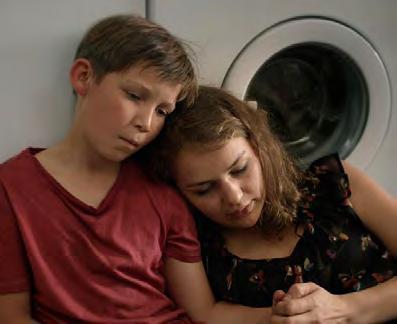
Ironically, although Berger thought he was trying to leave TV behind, the success of Deutschland ’83 coincided with the rise of a new, upmarket kind of TV and actually led to more. He followed it in 2018 with AMC’s The Terror and, the series closest to his heart, Showtime’s Patrick Melrose, based on Edward St Aubyn’s semi-autobiographical novels about a privileged man from a broken home. “I’d read those books when I was at Good Machine, rollerblading home from work, and I just became such a fan.”

Berger soon learned to trust his instincts, and when producer Malte Grunert came to him in 2020 with All Quiet he jumped at the chance. It was “an urge”, he says. “We wanted to tell that story and share it. We wanted to speak of our youth and the feelings we’d grown up with. The guilt and the shame. The responsibility. It all went into that movie.”
Looking back, does he see a pattern? “Different projects pull me in different directions,” he says. “That’s my compass. I’m not catering to an audience. After All Quiet I thought, you know what? Next time, I want to make something entertaining. At the end of All Quiet it’s just silence. There’s no music. I really had the urge to make a movie where I could put a pop song on and have people get up and say, ‘That was fun. Let’s go have a drink.’” And after Conclave? “I’ll probably want to do something different again.” A
“We wanted to speak of our youth and the feelings we’d grown up with. The guilt and the shame. The responsibility. It all went into that movie.”
DEADLINE.COM 91
Clockwise from top left: Ivo Pietzcker and Luise Heyer in Jack ; Berger with Jakob Schmidt on the set of All Quiet on the Western Front ; Sonja Gerhardt and Jonas Nay in Deustchland 83 ; and Ciarán Hines in The Terror
Marjane Satrapi
Marjane Satrapi, who was nine years old when Ayatollah Khomeini came to power in 1979, recalls taking to the streets with her politically active parents to protest against the imposition of the hijab. “My mum went to demonstrate, and I went too, and so did my dad,” recalls the graphic novelist and filmmaker. “He was one of the very few men; they didn’t understand at the time that women’s rights are society’s rights.”

Satrapi’s parents sent her to Europe to study as a teenager and encouraged her to make her permanent home there. Satrapi captured these experiences in the graphic novel series Persepolis, which she turned into an animated feature in 2007. Having lived in exile in Paris since the early 1990s, Satrapi has often received threats and slurs from the regime over her work. “I’ve learned in life not to be scared,” she says. “It’s not that you don’t feel fear; you feel the fear, but then you decide whether you care about it or not.”
Satrapi recently organized a flash mob in front of the Iranian embassy in solidarity with five Tehran teenagers who were arrested for posting a TikTok dancing to the Rema and Selena Gomez track “Calm Down”
Mohammad Rasoulof
Once a Cannes regular with awardwinning films such as Manuscripts Don’t Burn and A Man of Integrity, director Rasoulof has not been allowed to leave Iran since 2017. The 2020 Berlinale Golden Bear for his last film, There Is No Evil, was awarded in his absence.

He is currently home after a six-month stint in Evin Prison with fellow filmmakers Jafar Panahi and Mostafa Al-Ahmad. While there, he contracted a gastrointestinal illness due to the poor sanitary conditions. “I was in a hospital bed for two weeks, under 24-hour prison guard watch,” he says. “They handcuff and shackle sick prisoners.”
News of the Woman Life Freedom protests, which broke out after his imprisonment, percolated into the prison. “We were truly impressed by the activities of this young and defiant generation. There was obvious excitement among all the political prisoners.”
Despite everything, Rasoulof says he has never regretted challenging the authorities. “Even when I was in solitary confinement or during the interrogations, I felt no remorse.”
Golshifteh Farahani

Actress Golshifteh Farahani fled Iran in her late 20s after she got on the wrong side of the government for appearing in Ridley Scott’s 2008 spy thriller Body of Lies without a hijab.
“After 15 years, I feel like I lost an arm, and this arm, it will never grow back,” she says.
The actress has since rebooted her career in Europe and the U.S. and now uses her fame to highlight the struggles of her people back home.
Last October, she joined Coldplay on stage in Buenos Aires for a performance of Grammy-winning Iranian protest song “Baraye” by imprisoned singer-songwriter Servin Hajipour.

“The irony is that Coldplay was the soundtrack of our teenage years,” she says. “When I was 15 or 16, this is all we were listening to. I have so many videos of myself singing those songs, so going there and singing in Farsi was as if this revolution had somehow given me back my language and the Iran I lost in these 15 years.”
Zar Amir-Ebrahimi
Zar Amir Ebrahimi, who won best actress at Cannes last year for her performance in Holy Spider, has been busy on the festival circuit these last few months participating in panels on the future of Iranian cinema in the light of the Woman Life Freedom movement. However, the actress and director, who fled Iran nearly 20 years ago, wants to move the discussion on to the more practical matters of fund-raising to support Iranian filmmakers who are trying to boycott film funds backed by the Islamic Republic. “We’re asking people in Iran not to work with the money of the government and the revolutionary guard,” she says, “but we need to find a solution for them.”
Some film professionals are even leaving the business altogether rather than tap into state funding, and Amir-Ebrahami cites the example of Payam Dehkordi. The actor, who recently opened a bakery, announced last October that he would not appear in anything new out of solidarity for the protests. “We need to start talking about fund-raising,” she says. “That’s what I’m trying to do. Sometimes I feel alone, but I’m talking to colleagues outside of Iran to see if we can find solutions.” A
IRANIAN FILMMAKERS ARE USING THEIR PLATFORMS TO BACK THE PRO-DEMOCRACY MOVEMENT AND STRIKE A BLOW FOR WOMEN’S RIGHTS BY MELANIE GOODFELLOW
92 DEADLINE.COM ANDREAS RENTZ/SYLVAIN LEFEVRE/GETTY IMAGES/CHRISTOPHE SIMON/AFP
The winds of change are sweeping Iran as the ‘Woman Life Freedom’ protests, provoked by the killing of 22-year-old Mahsa Amini last September, continue. Here, four Iranian disruptors talk about their struggles, their acts of solidarity for the pro-democracy movement, and their hopes for the future of their country.
FOR GETTY IMAGES

Mediawan has been shaking the foundations of the film and TV world in France and Europe since it was launched in 2015 by producer Pierre-Antoine Capton, billionaire entrepreneur Xavier Niel and financier Matthieu Pigasse. Starting from scratch, the Paris-based group has gathered some 70 film and TV production labels under its umbrella. High-profile acquisitions have included the television division of Luc Besson’s EuropaCorp; Lagardère Studios and its 25 labels, including Spain’s Boomerang Group; French production houses Chapter 2, Chi-Fou-Mi and Call My Agent creator Mon Voisin Productions as well as Italian producer Palomar.
In 2021, it took a majority stake in the U.K.’s Drama Republic, while on the eve of Cannes, it bought Submarine, the Amsterdam and Los Angeles multi-platform behind the Emmy-award-winning documentary Bellingcat: Truth in a Post-Truth World and Richard Linklater’s animated feature Apollo 10 1⁄2: A Space Age Childhood
The burgeoning content group made headlines beyond Europe last December when it announced it was acquiring a significant stake in Brad Pitt’s company Plan B Entertainment.
Curiosity about the $300 million deal and how the production house behind The Departed, 12 Years a Slave and Moonlight will fit into the Mediawan fold is rife on both sides of the Atlantic.
“This partnership is an important step for us,” says Mediawan Pictures CEO Elisabeth d’Arvieu in an interview at the group’s seven-floor Paris HQ, home to many of the French labels. “We’re a European studio, our DNA is European, but our vision is international. While our producers and talent are carrying projects

that are local in nature, their international ambitions are growing.”
She continues: “The American market is an important one for European works, and we understood we needed a partner in situ. Until now, we’ve been working on a case-by-case basis, but we wanted a partner who could be the image of Mediawan in the U.S.”
D’Arvieu emphasizes that at the heart of Mediawan’s approach is respect for the independence of its producers and says this is a factor that helped facilitate the tie-in with Plan B. “When a producer joins Mediawan, there is one thing we pledge to uphold, and that is their total independence in terms of creativity and production. We’re never going to dictate what they make.
“They are protective of their creative independence, which fits perfectly with our DNA,” she says. “We came together in a fairly natural way. The idea is to build bridges between the United States and Europe, to bring European talents onto the international market.”
The executive points to the trajectory of Florian Zeller, the Oscar-winning director The Father, whose Paris and LA-based production company Blue Morning Pictures is backed by Mediawan, as an example of a French talent who has made it on both sides of the Atlantic.
D’Arvieu was speaking on the eve of a trip by Plan B co-presidents Dede Gardner and Jeremy Kleiner to Paris in mid-April for meetings with some of its European producers. Similar trips are also planned to Spain and Italy.
Quizzed on first projects, D’Arvieu says ideas are cooking. “We only finalized the deal in January. It’s early days, but the exchanges have started already,
and the aim is really to create exchanges between all our talent like Florian, Plan B, Chapter 2, Palomar, Chi-Fou-Mi…”
Outside of Mediawan’s Transatlantic ambitions, the group has steadily grown its cinema footprint, particularly in France. It successfully launched the first part of Martin Bourboulon’s ambitious $72 million two-part, French-language Alexandre Dumas adaptation The Three Musketeers: D’Artagnan in early April. Spearheaded by Dimitri Rassam at Chapter 2, in collaboration with Pathé, and starring François Civil, Vincent Cassel, Romain Duris, Pio Marmaï, Eva Green, Louis Garrel, Vicky Krieps, and Lyna Khoudri, the film grossed $37 million in its first three weeks.
Two other films produced by Mediawan labels were also enjoying successful releases at the same time: Denis Imbert’s On The Wandering Path (Radar Films) and Jeanne Harry’s ensemble drama All Your Faces (Chi-Fou-Mi Productions).
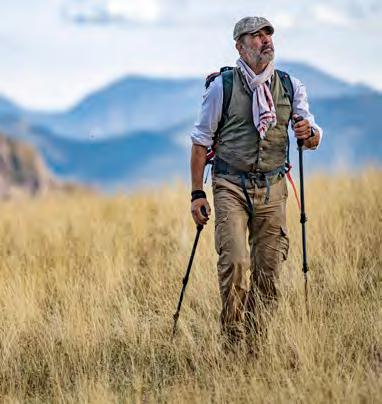
The 2023 release slate also includes Chapter 2’s Carmen by Benjamin Millepied and The Three Musketeers: Milady, as well as Chi-Fou-Mi titles Omar La Fraise (which world premieres as a Cannes Midnight screening) and Nathan Ambrosioni’s Camille Cottinstarrer Toni, En Famille. Also coming up are Autumn and the Black Jaguar, the latest production from Mia and the White Lion director Gilles de Maistre under his Mai-Juin Productions banner, and Jeremy Zag’s Miraculous, on which Mediawan label On Kids & Family is a producer.
“We’re across all types of cinemas from tentpoles to family films, auteur and genre works,” d’Arvieu says. “We don’t favor any one type of film. What interests us is the project, the talent, and the possibility that the film can travel.” ★
 On The Wandering Path
The Three Musketeers: D’Artagnan
On The Wandering Path
The Three Musketeers: D’Artagnan
AS THE COMPANY WELCOMES BRAD PITT’S PLAN B TO THE FOLD, CEO ELISABETH D’ARVIEU EXPLAINS ITS INCLUSIVE APPROACH: ALL FOR ONE, AND ONE FOR ALL BY MELANIE
GOODFELLOW
94 DEADLINE.COM MEDIAWAN/RADAR FILMS/TOM KING
Mediawan CEO Elisabeth D’Arvieu

Louis Theroux is not comfortable with the disruptor moniker. He almost recoils at the notion, sitting back in his chair, chewing over the word and its literal, historical and symbolic connotations. “It has become a cliché; it’s definitely a cliché,” he eventually says.

But then comes one of the pensive expressions Theroux is famed for. His eyes fixed behind black-rimmed glasses. A man silently arguing with himself, jostling for clarity of thought. Suddenly, a revelation. Maybe he is a disruptor after all—or at least he once was.
“There’s a sense in which I came along in my presenting work and was a bit of a disruptor,” Theroux decides. “I took elements of conventional presenting and elements of classical vérité filmmaking and combined them.”
His talent in front of the camera was spotted by Michael Moore, who gave him a starring role in NBC’s TV Nation, interrogating evangelical Christians about the end of the world and launching mortars at an Arkansas shooting range. By
1998, he had graduated to his own show on the BBC, Louis Theroux: Weird Weekends, and he has remained a durable screen presence ever since.
Theroux enjoys an almost unique status in the U.K. He is a respected journalist, author, and interviewer whose brand of immersive reporting does excellent business for the BBC, and Netflix, which licenses his films. He is also adored by legions of internet fans, who have printed his face on T-shirts, spammed social media with Theroux memes, and turned his viral “Jiggle Jiggle” rap into an actual Jason Derulo hit. Some even describe him as a national treasure.
“Once you’re recognizable, and your shows do well, then audiences respond and come to your programs in the future,” he says, about his longevity.
So, you might find it surprising to learn that Theroux is deliberately doing less of what has made him a success. For the second act of his career, the filmmaker is handing over the presenting keys to others through his production company, Mindhouse. He’s still keeping his hand in on-screen, but right now, Theroux is intent on building something bigger than himself.
He agreed to this interview because he wants to raise awareness for his producer-first reincarnation, arguing that Mindhouse is now a serious player in the documentary and podcast space. The company, co-founded by Theroux’s wife, Nancy Strang, and former BBC producer Aaron Fellows, boasts 16 employees and an equal number of announced commissions.
These include Prime Video film KSI: In Real Life, spotlighting the outrageously successful YouTube star JJ Olatunji, and Sex Actually with Alice Levine, now in its second season for Channel 4. Theroux also talks animatedly about Gods of Snooker, a three-part BBC deep dive into the breakout stars of the British table sport. Theroux does not feature in the Snooker series, but he drunkenly re-watched it recently and was left glowing with pride about what Mindhouse is attempting to achieve. “That’s very big-headed of me,” he says with a knowing smile.
Four years ago, Theroux was still a BBC employee, producing and presenting only his own films in a small enclave of BBC Studios. He remains umbilically linked to his former employer through
STIAN LYSBERG/NTB/AFP VIA GETTY IMAGES/BBC/PRIME VIDEO/DOG EAT DOG FILMS/EVERETT COLLECTION 96 DEADLINE.COM
IN LIEU OF A LUCRATIVE RAP CAREER, MICHAEL MOORE’S PROTÉGÉ IS HOLDING HIS FOLDING AND BANKROLLING A WHOLE NEW GENERATION OF INVESTIGATIVE TV TALENT BY JAKE KANTER
a development deal, which Mindhouse recently renewed for 12 months. He also continues to present shows for the U.K. broadcaster, though he feels that the success of his back catalog on Netflix means audiences no longer consider him a BBC star.

How would he fare if he ran the Gary Lineker gauntlet? Or, to put it another way: if, like the Premier League presenter, Theroux skewered the government’s asylum policy on Twitter, would it send the BBC spiraling into an impartiality crisis because he is perceived to be a BBC presenter? No is his answer, but that’s largely because he wouldn’t have tweeted in such a nakedly political way in the first place.
“It’s always been more helpful for my work if my true opinions are kept slightly ambiguous,” he says. “It’s my job as a presenter and journalist to have a freewheeling critical attitude; to have an all-purpose, polyvalent sense of subversiveness so I can upset any political orthodoxy.”
Theroux adds that this goes to the heart of his documentary-making: “I try not to make audiences too comfortable and try to challenge the viewer about whatever particular received opinion they

hold. If you’ve got an attitude that is capable of surprising, which is unpredictable, then I think that’s a much more interesting place.”
So much of Theroux’s work is marked by his desire to find nuance, to spend time with people to understand their outlook, no matter how extreme their views. He recently filmed with Nick Fuentes, a leading figure in America’s white nationalist far-right movement. Past documentaries have seen him explore Scientology and immerse himself in the Westboro Baptist Church, an organized group that pickets funerals with incendiary homophobic signs.
Does Theroux believe that people are less tolerant of those they disagree with? His response is carefully worded. Theroux thinks that social media has “collapsed” the public and private spheres, meaning we all know what everyone else is thinking and are “constantly being shocked and outraged” by one another. Having said this, he does not subscribe to the idea of cancel culture, which he considers simplistic and unhelpful.
“There are people who are censorious, quick to judge, and overly sensitive. There are also people who are trolls and provocateurs who are attracting clicks and views based on being outrageous,” he says. “Can cancel culture be a real thing in a world in which Andrew Tate can get hundreds of millions of views and build a media empire by pushing misogynistic messaging?”
Theroux thinks provocateurs can be canceled in a very literal sense, such as being blocked on social media or banned from university campuses, but he is skeptical of the idea that freedom of speech is being strangled. “The notion that we’re in a suffocating and censorious atmosphere, which has been pushed and amplified by people like Piers Morgan, is obviously not the case in any simple and straightforward way,” he adds.
However, Theroux acknowledges that certain subjects have become increasingly complicated to discuss. He agrees that it would have been “more difficult” to make his 2015 documentary, Transgender Kids, in a climate in which gender identity has become one of the vogue issues of the so-called culture wars.

Somewhat ironically, he praises a one-time subject matter for plotting a successful path through the debate, saying he enjoyed The Witch Trials of J.K. Rowling podcast by Megan Phelps-Roper, a reformed member of the Westboro Baptist Church. Phelps-Roper has gone on her own journey from extreme to enlightened and applied this experience to hours of interviews with Rowling, who has become equal parts pariah and heroine for her staunch position on transgender ideology.
Podcasting is a medium that comes naturally to Theroux after he launched his own BBC interview show during lockdown in 2020. Grounded with Louis Theroux has evolved into Spotify exclusive The Louis Theroux Podcast, a long-form interview format produced by Mindhouse. “Podcasting at its best is about authenticity, and that’s very much in the DNA of all the programs I’ve made. I’ve always valued the parts of my shows that feel real and unexpected,” he says.
Mindhouse is building out its podcasts business with another series featuring Rylan Clark, a British presenter known for his work on Big Brother and the Eurovision Song Contest. The podcast has been commissioned by the BBC, though details remain under wraps. Theroux interviewed Clark and says he is an exceptional broadcaster. “He’s like warm maple syrup being drizzled into your ear,” he laughs.
Theroux clasps for a piece of paper featuring what appears to be prompts for our interview. There are lots of presenters he is developing projects with, he says, including Amelia Dimoldenberg, whose YouTube Chicken Shop Date series gave rise to Theroux’s “Jiggle Jiggle” rap. He is also developing projects with Netflix and A24, though is reluctant to reveal any further details. Theroux also declines to comment on a yet-to-be-announced documentary Mindhouse is making for CNN and the BBC about the Space Shuttle Columbia disaster in 2003.
Scripted is another area of interest for the company. “There’s something beautiful about telling stories where you don’t have that restraining influence of worrying about the real-life people behind it, whether it’s platforming them or their vulnerability,” Theroux says. Getting a drama away would be a full-circle moment for Theroux, who wrote TV scripts as a child.
His love of the medium is obvious, but are we getting to the point where audiences have too much of a good thing? Is there too much television?
“It feels like there’s been a thinning of the herd,” he says. “It seemed to me that there was a tipping point when CNN+ broke down its data. They launched with tens, if not hundreds, of millions of dollars, and then they found out that in America, only 10,000 people a day were watching. A midlevel TikToker or YouTuber was getting bigger numbers than the CNN streaming service, which sort of tells you everything you need to know about television in 2023.”
What was the last thing he watched that blew his mind? “Probably Watchmen, the Damon Lindelof series on HBO,” he says. There’s a mention for White Lotus too. “I like really good television. I mean, I’ll watch crap television too. But I prefer to watch TV that is outstandingly creative and interesting.”
The conversation points us back to the BBC, which he says is “embattled” by the big streaming services. Theroux would like to see the license fee survive beyond 2027, when the U.K. government says it plans to scrap the funding mechanism, raising questions about the corporation’s future. “If you look at the TV landscape in America, it’s very far from ideal,” he says. “I know that it makes some of the best programs in the world, but when you go there, you do miss the BBC. You miss that sense of the calm, center-ground voice.”
You can take Theroux out of the BBC and set him free in the world of independent production, but you will never take the BBC out of Theroux. A
DEADLINE.COM 97
From top: Channel 4's Sex Actually with Alice Levine ; Prime Video's KSI: In Real Life ; and Micheal Moore on NBC's TV Nation
The Greek philosopher Heraclitus once said, “Change is the only constant in life,” and the entertainment sector is no exception to this adage. It’s an industry that has long benefited from advancements in technology that have increasingly enriched the quality of films and programs and have also condensed the filmmaking process across the entire pipeline from pre-production to distribution and exhibition.
But while it’s easy to look back and see how digital tech has improved the sector, assessing the future of the business as it stands on the threshold of two hot button topics—Artificial Intelligence (AI) and Epic Games’ Unreal Engine—is much less clear.
AI has been increasingly polarizing, with Twitter and Tesla CEO Elon Musk and Apple co-founder Steve Wozniak among more than 1,100 signatories of an open letter calling for a six-month moratorium on the development of advanced AI systems, citing “risks to society”. Meanwhile, Epic’s free Unreal Engine platform is popularizing the concept of the metaverse with its real-time 3D platform, which has been used in projects such as Rogue One: A Star Wars Story, The Batman and Ford v Ferrari. Significantly, Lucasfilm and Jon Favreau used Unreal Engine to build entire 3D environments for The Mandalorian, a real turning point for the technology.
But what does it all mean? Here, a number of experts in both fields help break down how these two tech advancements are disrupting the production sphere and what the future of the business looks like when they become a part of the everyday process of filmmaking.
UNREAL ENGINE
According to Framestore’s Chief Creative Officer Tim Webber, "Things are moving so quickly and unpredictably at the moment that it’s really hard to know what's going to be happening even in five years time.”

Webber, who won an Oscar for his VFX work on Gravity, says he and his team have been using Unreal Engine for a decade or more in pre-production for virtual production and the immersive division, virtual reality experiences and experiential setups. “Most of Unreal’s lifespan and history has been dedicated to the games industry, and that's what has shaped it up until this time,” he says. “But more people, such as the film industry, are tailoring it to other needs, so it’s getting better and better all of the time.”
The tech has, he says, been impactful in planning and experimenting in a virtual space. “You can have people being motion captured in real time and see them as evolving creatures, and you can get an immediate response to it in real time.”
Framestore VFX supervisor Theo Jones adds, “It’s so useful in preproduction because it’s very good for rapid iteration and, obviously in preproduction, making a lot of changes very quickly and that interaction and interactivity is really key.”
Most notably, Unreal Engine has been popularized for use in in-camera effects, or what many refer to as ‘virtual production’, where, as in The Mandalorian, one can film in a space where the background is rendered in real time and put onto a wall behind the actors.
“There are things that we do that are fundamentally different than any sort of DCC [digital content creation] renderer, that’s out there, such as how it approaches things in the real world, with real physics and real spatial depth,” says Miles Perkins, Industry Manager of Film & Television at Epic Games. “The big thing with Unreal Engine is that it can render in real time at least 24 frames per second, if not 60. And you interface with it in much the same way you would interface with a real set. That, to me, is what’s incredibly exciting.”
Perkins, who spent 23 years at Lucasfilm before moving to Epic Games, recalls first using Unreal with Steven Spielberg on 2001 title A.I. The forward-thinking director used an Unreal Tournament game engine to plan out his scenes for the sci-fi project.
“We were able to immediately visualize what it was going to be so that he could block out all of these shots,” he recalls.
The exec compares the change in technology at Epic to the first time he saw a test screening of Jurassic Park. “When I first saw the test and walked into the theater, I just knew that the industry was going to change because of computer-generated imagery. The exact same thing happened to me in 2019 when I joined Epic and I saw what we were doing with The Mandalorian.”
Indeed, since The Mandalorian, the proliferation of the tech on these LED walls has been, says Perkins, “almost hard to keep up with”. In 2019, there were just three of these stages, but now, according to the exec, there are more than 300.
Flite
AFTER SO MANY GIANT STEPS IN THE FIELD OF VIRTUAL TECHNOLOGY AND AI RECENTLY, IS IT FINALLY TIME TO GIVE UP AND WELCOME OUR NEW ROBOT OVERLORDS?
98 DEADLINE.COM FRAMESTORE
BY DIANA LODDERHOSE
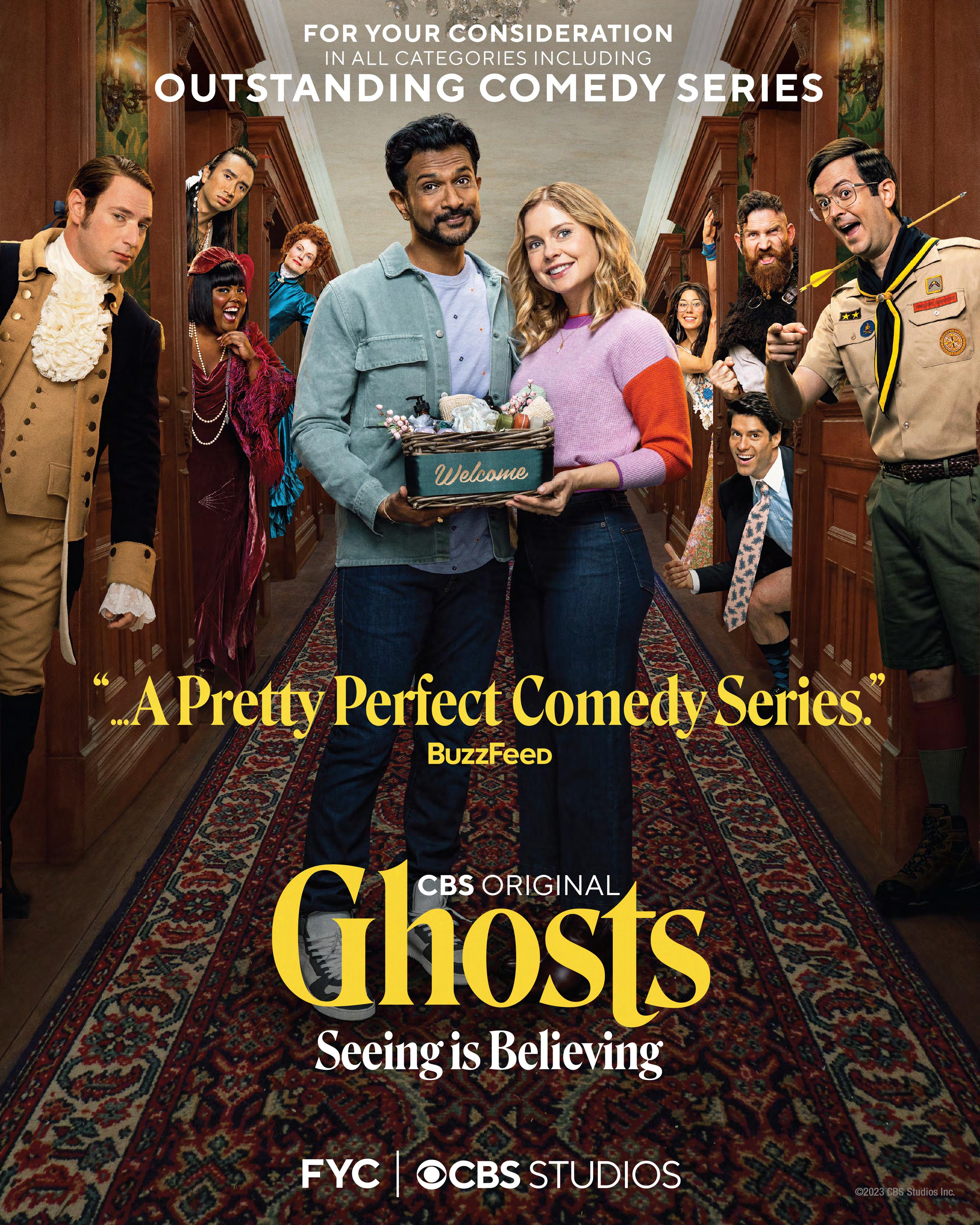
Unreal has been particularly useful in the animation space, with companies such as Reel FX using the game engine to animate its Netflix series Super Giant Robot Brothers!. The company was the first to use the game engine to create an animation pipeline to visualize and render every aspect of the show.
Perkins recalls the show’s director, Mark Andrews (Brave), turning around 140 shots per week instead of the normal 12-20. “Imagine what it means for the filmmaker,” Perkins says. “It frees them up to engage with the visuals. We’re really only on the precipice of what this is going to mean long-term.”
The exec thinks that real-time technology will soon start to attract directors from outside the animation space. “Directors are now engaging with the animation in the same way they would with liveaction, or near to that, so all of a sudden you’re going to start to see animation open up to people who are more traditionally live-action filmmakers.”
Webber and Jones recently finished shooting a short animation title dubbed Flite, a live-action animation hybrid, entirely in Unreal Engine. Specifically, it used its in-house VFX pipeline FUSE (Framestore Unreal Shot Engine) to make the innovative short. With Unreal Engine at its heart, the purpose was to build a pipeline that enabled them to work at the scale of a feature film, utilizing all of the different specialist artists within the company for one project.
“Previously this wasn’t possible, and it had to be small teams working together,” Webber says. “But with Flite we wanted to build it so you could have your crew of 250 people with all the different expertise they’ve built over 20 years, all working together on something with hundreds of shots.”
It’s a great example, says Jones, of how the realtime technology can be rolled out into a pipeline that will “create a much more efficient way of working.”
Germany-based Telescope Animation is another outfit that is benefiting from this technology. The company was recently a recipient of Epic Games’ MegaGrants and a grant from the EU’s Creative Europe Media, which will see the company use Unreal Engine 5 for a multi-platform project The Last Whale Singer. In addition to a feature film, there is a planned prequel video game, episodic series and AR/VR projects that will use the same assets across all platforms.
For Telescope Animation founder Reza Memari, use of the game engine is revolutionizing the kind of animation coming out of Germany. While the European nation is a powerhouse when it comes to exporting animation, these projects are typically done at much smaller budgets (€8 million-€12 million) than their U.S. counterparts. The speed of rendering that Unreal can offer, plus the ability to create a larger pipeline for other platforms, makes it more efficient for smaller teams.
“Unreal has really accelerated the development toward the kind of animation that we are doing,” Memari says. “For small indie studios, it always meant there was a quality reduction, because we could never achieve the kind of polish that American studios can achieve because they have the money and the teams to keep reworking on it and revising it until it’s perfect. We just don’t have that kind of capacity, but Real Time allows us to work on it non-stop.”
ARTIFICIAL INTELLIGENCE
While there is a sense that Unreal Engine is propelling the industry forward in the virtual production space, the effects that AI will have on the business are still much less defined. AI, as we know it now, has a much broader use across the business, from screenwriting to VFX and distribution. As recent months have seen with the eruption of publicly available AI systems such as GPT-4 and ChatGPT, the film industry is— understandably—contemplating what the potential benefits and pitfalls of this technology could mean.
To start, there’s the efficiency side of it. For some in the business, particularly on the postproduction side, there are tools starting from the bottom up that are, Jones says, “taking some of the repetitive drudgery out of some of the tasks that artists have to do.”
Jones is currently using it on Disney’s live action Peter Pan & Wendy, and he says it’s been useful for “giving our artists better feedback”.
“One of the key characters that we are bringing to life, we are able to use machine learning to give our animators much higher resolution characters to work with,” he says. “So, normally, because our animators need to work interactively, they need to make very quick decisions and what we normally have to do is create a very, very high-resolution rig for the final images, which includes skeleton, muscles, skin, fascia, all of these things and how they interact, which is computationally expensive so we can’t normally get even close to that.”
With the use of AI, Jones has been able to give that representation to animators so they can review their work in real time and make creative decisions quicker. “A rig that was taking 20 to 30 seconds to move one frame forward, is now taking between two and six milliseconds to do the same computation.”
Indeed, it’s a handy tool to enable artists to make these decisions so they can spend more time on the creative process and less time waiting for timelines to update. But Webber cautions that they would never use the AI to create any kind of final image, as the uncertainty of copyright issues is too murky.
“At the moment, AI is a bit of a black box,” he says. “This is the problem with it in all areas, not just in the visual arts. You input something and you get an image or an essay, but you’ve got no idea what’s going on in between and you can’t tweak it very easily. That’s where it is now, but the big change will come where what you get out is something you can then manipulate yourself a little and adjust it.”
Last month, the Writers Guild of America clarified its stance on the use of AI in the writing process and says it plans to “regulate use of material produced using artificial intelligence or similar technologies”.
It also warned that AI could not be used as source
material to “create MBA-covered writing or rewrite MBA-covered work, and AI-generated text cannot be considered in determining writing credits.”
It’s an interesting conversation that continues to be had, says producer and analyst Stephen Follows, who last year teamed up with a particle physicist to secure a professional script development deal to create a feature film script entirely written by AI.
“The WGA step is encouraging,” he says. “They’re taking a step where they’ve said, ‘OK, we obviously don’t want writers to be replaced.’”
In his experiment, Follows says his experience showed that the only thing that defines the quality of the output was the quality of the input in the textgenerated AI. With this in mind, he feels that writers would largely be the ones who would benefit the most through using AI. “They are the most likely to get the most out of it to be able to protect their area of speciality and then also to be able to avoid things that are inherent.”
While he says the tech was half-decent at coming up with ideas, it was even better at giving good feedback. “Some of the best things we found were setting up important questions and getting them to answer them,” he says. “That’s its biggest strength. It comes up with a lot of ideas—and it comes up with a version of Alice in Wonderland quite a lot—but it’s shooting for the generic middle. However, if you’re coming up with so many ideas, you only need one nugget.”
Additionally, Follows found that the AI was good at problem-solving. “When you get a problem that we can’t think of an answer to, it can give a very concise answer that can be very convincing.”
He says, “Ultimately, with this technology, our concept of IP control and copyright is going to completely break down. It will also be a detriment to people who have very formulaic jobs—people whose main job has been gatekeeping.”
More recently, Miramax tapped AI tech developer Metaphysic to help de-age actors such as Tom Hanks and Robin Wright in Robert Zemeckis’ upcoming movie Here. Meanwhile, neural network lab Flawless has developed software called TrueSync, which utilizes AI to change the movement of an actor’s mouth for dubbing in different languages.
But the real questions on everyone’s mind are, will AI really be stealing all the creative work from humans in the film business, and will we all be living in The Matrix in the coming years? Jones thinks not. “AI will definitely be used in our industry increasingly going forward. But it will be used as a tool to help the creative process in the hands of artists, as opposed to replacing them, which people kind of get worried about. In fact, it will be giving them much better tools, and that’s what we’re seeing at the moment.” A
"Imagine what it means for the filmmaker. We’re really only on the precipice of what this is going to mean long-term."
—MILES PERKINS
100 DEADLINE.COM
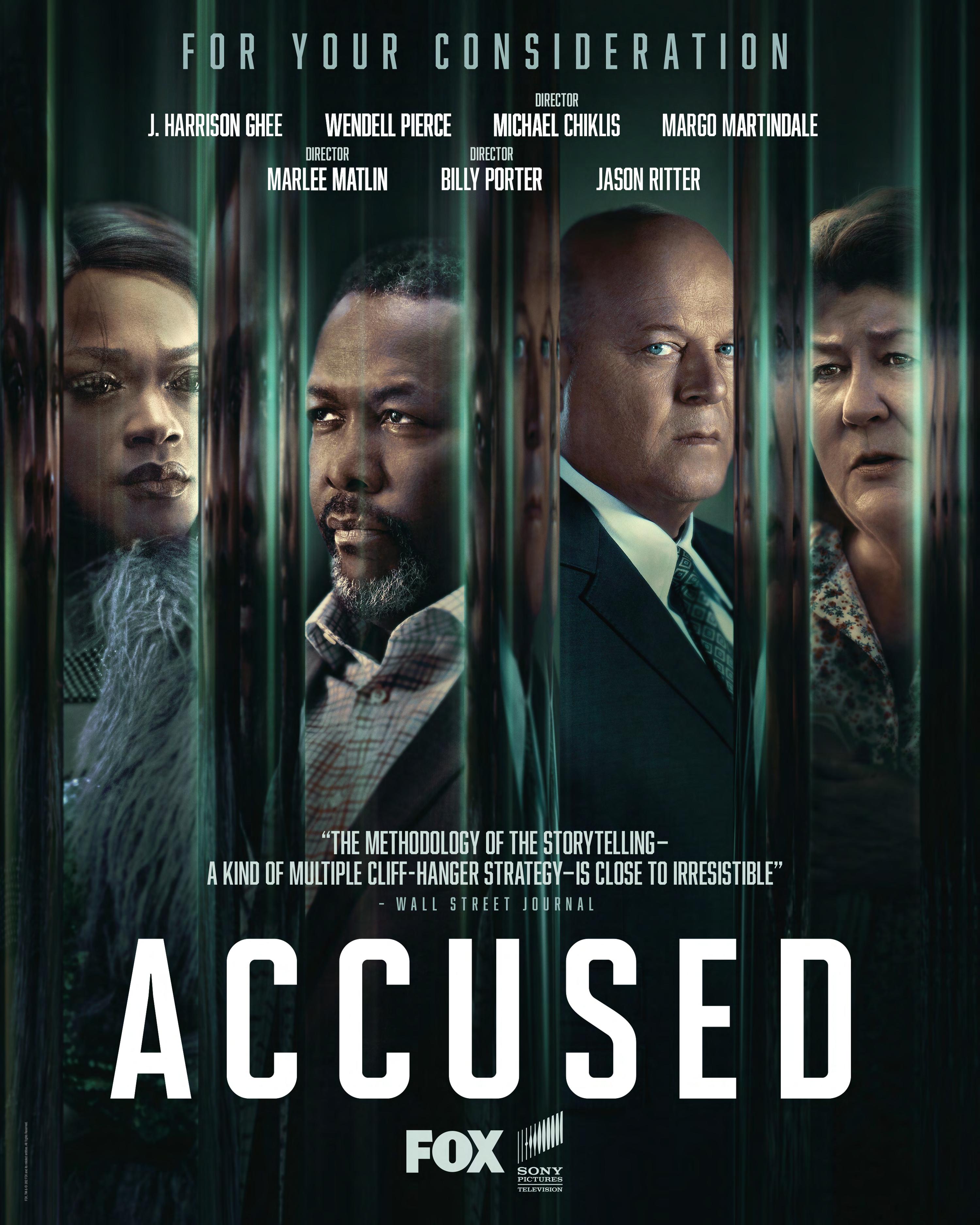

THE DIRECTORS OF MEGALOPOLIS AND HORIZON EXPLAIN WHY THEY’RE WILLING TO RISK EVERYTHING THEY HAVE TO BRING THEIR VISION TO THE SCREEN BY MIKE FLEMING

DEADLINE.COM 103
It’s a spring afternoon, high up in the mountains of Moab, Utah, and Kevin Costner looks up at the sky. Rough weather is starting to roll in and he needs to get back to work and bank some more scenes. After all, it’s coming out of his pocket. The project is called Horizon, the first of four films set in the pre- and post-Civil War expansion of the American West. It is his most sprawling epic since Dances With Wolves, which he also part-funded, and which brought him seven Oscars, including Best Picture and Best Director.
Investing in himself isn’t just frivolous affectation for Costner. It’s in his DNA. “I’ve mortgaged 10 acres on the water in Santa Barbara where I was going to build my last house,” he says. “But I did it without a thought. It has thrown my accountant into a fucking conniption fit. But it’s my life, and I believe in the idea and the story.”
Some days later, down in Atlanta on a chilly evening, the crew waits for Francis Ford Coppola to come out from the Silverfish, the trailer where he has shot most of his films—their titles are painted on the exterior passenger side wall— and a portable residence that looks a bit like an old toaster. Megalopolis is in the home stretch, and the scene is anarchy as factions argue about the future of a New York-like city that has to be rebuilt after a seismic event.
Among those waiting are Shia LaBeouf and Dustin Hoffman. Also in the wings are Jack Black— who’s just come to watch Coppola work—and Leaving Las Vegas director Mike Figgis, who’s shooting a documentary about what could be
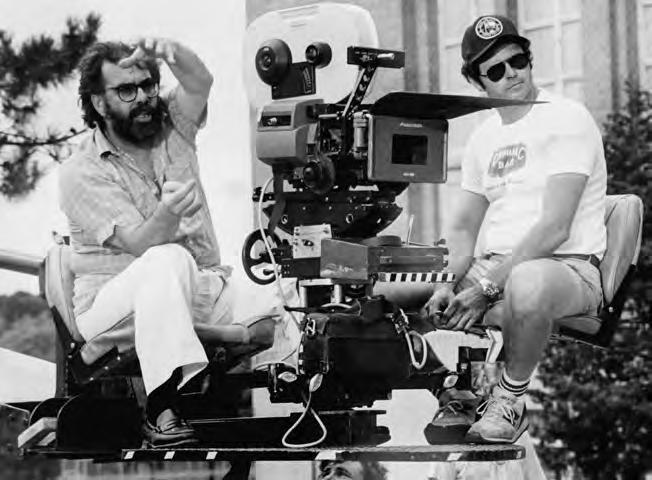

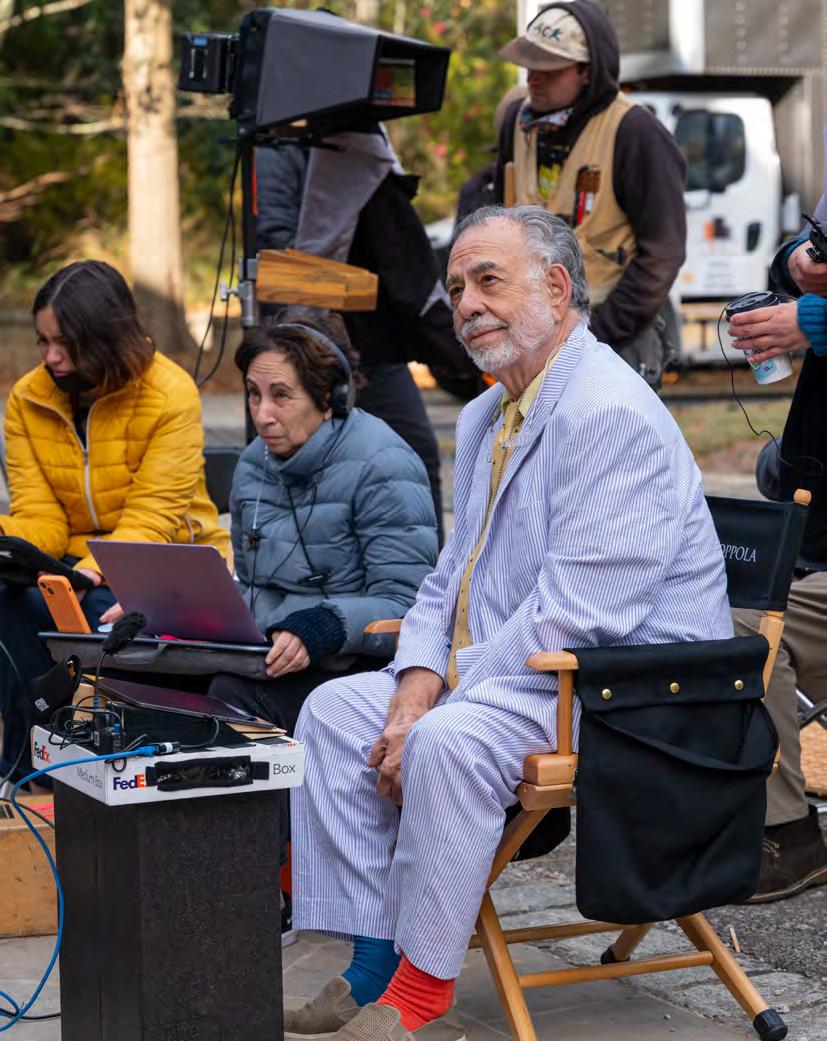
104 DEADLINE.COM
Clockwise from left: Coppola on the set of his upcoming film Megalopolis ; The Outsiders ; Hearts of Darkness: A Filmmaker's Apocalypse
PICTURES/EVERETT
PHIL CARUSO/TRITON
COLLECTION.

the 84-year-old’s last big movie. Coppola finally emerges, wearing a cream-colored suit, scarf and black beret, and the crowd parts for him. I tell him later this must have been how General Patton did it, and he laughs. Patton was a seminal figure in his career: Coppola got the first of his five Oscars by writing the screenplay for Franklin J. Schaffner’s 1970 biopic.
That night, Coppola recalls, he watched the Oscars from New York, where he struggled with The Godfather, the studio shadowing his every move. He was with his friend Martin Scorsese, and after hearing Coppola’s name called, Scorsese said, “There’s no way Paramount can get rid of you now.” That night’s win launched a career as a filmmaker and entrepreneur that allowed Coppola to spend $100 million of his own money to finance Megalopolis when no one else would.
Meanwhile, between putting up cash and deferring all his fees for Horizon, Costner has done much the same thing: Horizon has become his obsession, and presumably has created the stalemate on Yellowstone that likely will lead to his exit after a clash with showrunner Taylor Sheridan. (Costner declined to comment on that evolving situation.)
Costner and Coppola are a rarity in Hollywood: proven mavericks who will put their money where their mouths are. Deadline brought the two together to discuss what it means to believe in your vision so much that you are willing to risk a fortune to see it through.
Each of you previously put up your own money to make a movie or two happen, but these are $100 million-plus productions. Kevin, how did you come to be on the hook for Horizon?
KEVIN COSTNER: The story will speak loudly to Francis; others will scratch their heads. I commissioned this story in 1988. Single movie, two-hander. A conventional Western with a beginning, middle, and end. I couldn’t get anybody to make it. Then, right after I made Open Range and it performed pretty well, I had a chance with Disney. We had a $5 million difference. They had had a lot of money success with Open Range, but a $5 million difference kept them from making this movie. Now, I’m stubborn, and I think probably Francis is too. Eight years later, I started thinking about the story, started writing with a partner, and it ended up being four screenplays. So I reverse-engineered everything from 1988. I thought it was really good. But I still couldn’t get anybody to make it.

You believed in it enough to gamble your waterfront property?
COSTNER: At the end of the day, I’m a storyteller, and I went ahead and put my own money into it.
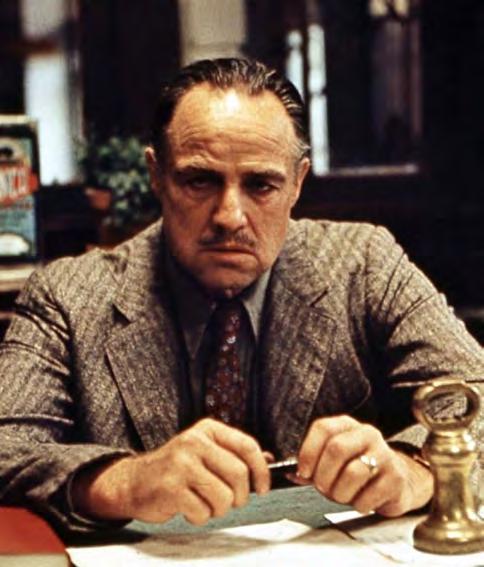
I’m not a very good businessman, so, scratch your head, if you will. I don’t know why, but I have not let go of this one. I’ve pushed it into the middle of the table three times in my career and didn’t blink. This is my fourth. And probably one of the few people in the world I could talk with about this would be with Francis.
Francis, does any of what Kevin said sound familiar to you?
FRANCIS FORD COPPOLA: It does. For me, when you do go into the great unknown, you don’t want to say, “Oh, I wish I had done this or that.” You want to say, “I got to do it.” And you’ll be busy thinking of what you did that you wanted to do, that when death comes, you’re not going to even notice it.
COSTNER: That’s how I feel about it.
The themes of Megalopolis have been in your mind for decades, also.
COPPOLA: I’ve always operated under this vague idea of trying to do stuff, because if you don’t achieve it, it’s no worse than if you didn’t try. At least by trying, you have the possibility you could pull it off. One thing about Kevin, if you were to list all of the really great directors of the world, and you looked at who went from editor to director, or from assistant director to being the guy in charge, which do you think has the highest ratio for making great directors, three to five times more than any category?

I would guess DP or actor?
COPPOLA: Actor, by far. I mean Charles Laughton, Laurence Olivier and, in the old days, G. W. Pabst. Kevin is an example of a great tradition. The reason is that when it comes down to the two essential elements of cinema, like water is to hydrogen or oxygen, cinema is acting and storytelling. Since the highest goal is great
"For me, when you do go into the great unknown, you don’t want to say, 'Oh, I wish I had done this or that.' You want to say, 'I got to do it.'"
—FRANCIS FORD COPPOLA
106 DEADLINE.COM ZOETROPE/UNITED ARTISTS/PARAMOUNT/KOBAL/REX/SHUTTERSTOCK
Francis Ford Coppola classics, from left: The Godfather , The Conversation and Apocalypse Now .

storytelling, actors are among the few who search for truth throughout cinema history, from the silent age to now.
Kevin, how helpful was your acting background when you jumped to filmmaker?
COSTNER: I started as a stage manager at Raleigh Studios and didn’t really tell people that I wanted to be an actor because nobody wants to be around a pining actor. But I kept my eyes open. Everything came to me late. My first [acting] check, I was probably 28 years old, and it took me six years to get my SAG card. Then I got four or five movies under me and wanted to direct this movie that I had a friend of mine write, Dances With Wolves. No one would make it. It went around twice to the studios.
I’m a plodder; it took me a long time. I didn’t burst on the screen as a 19-year-old. When I did my first five movies as an actor and started to direct, people said, “Whoa, you’re going pretty fast.” I thought, ‘Man, I just got here.’ But I had my eyes open for years, watching. And watching what Francis did, and some other smart people. I studied it. Because everybody tries to make a great film, and a lot aren’t good at all. Look at the movies that stand the test of time. There are moments, words spoken, and gestures that you’ll never forget. You’ll find them in Francis’ movies and other movies I studied.
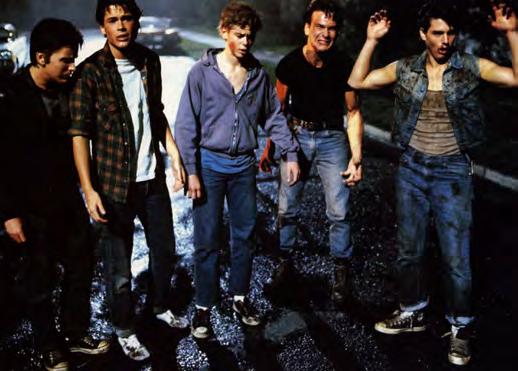
What’s the difference between the mediocre ones and the classics? Authorship?
COSTNER: You feel like you’re in the careful hands of a real storyteller. My background is hunting and fishing. I’ve sat around campfires with my father and watched older men talk. I got to know who the real storytellers were. Time doesn’t matter if your story is interesting.
Francis, you had famous fights with Paramount on The Godfather. Financing Megalopolis makes you the studio.
COPPOLA: You used the word authorship—the idea of auteur theory, where there’s one voice. But even that one author is basically standing on the shoulders of previous giants. There’s no avoiding it. So authorship only means the film is honest to the theme and the premise. It has to be personal, real; it can’t be a synthesis of what people have decided would be a good formula for a movie. I acknowledge fully that any film I make is filled with things I learned from watching the greats that came before me.
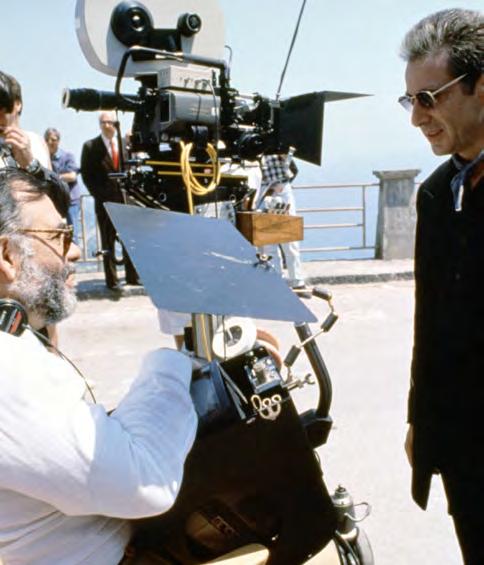

COSTNER: When you go into a studio and walk down the halls, you see all these posters of the movies they made. Unless you’re the filmmaker, you really can’t understand, forensically, how those movies went down: who almost killed it, who could have ruined it, who tried to ruin it and now puts it front and center on their wall. We go in brave and certain about what we feel, but those voices can get inside you. There’s fear about doing something that’s a little bit original. Like, we know in a romantic comedy that, first base, they gotta hate each
other. Second base to third base, maybe there’s something between them. And then you get to home and you have your movie. There’s a formula in comedy. Nothing wrong with the formula. But God curses a person like me or Francis; if we decide to do a straight-up comedy, we’re gonna hit those bases, but we might hit them in our own way.
COPPOLA: There is a first base, a second base, and a third base, but not always in that order.

COSTNER: And God forbid they go test screen it. Then holy hell breaks loose. That’s when the movies are at their most vulnerable when we start giving them scores. Because, really, these are emotional experiences, not intellectual ones. I know, absolutely, that because of testing, studio executives live or die depending on what happens Friday night. But movies can have a life long after that. I believe in the life of the movie more than I believe in the opening weekend, so every decision I make has to do with that.
Francis, you’ve said financing Megalopolis wasn’t about creating a piece of commerce or winning yet another Oscar. It was to leave behind something future generations could find and discuss. What was the conversation like for you, ending with selling part of your wine holdings to do this?
COPPOLA: Oh, I didn’t do it that way. I recognized that, at my age, I didn’t have people to run all these businesses that I not only had started but was running. My children have been an enormous help
"I’ve found the best way is to make a film you have no idea how to make because then the film will help you. And the film won’t tell you which way to go. I like that."
—FRANCIS FORD COPPOLA
108 DEADLINE.COM PARAMOUNT PICTURES/EVERETT COLLECTION/ SNAP/REX/SHUTTERSTOCK/TRISTAR PICTURES
Clockwise from left: Coppola on the set of The Godfather: Part III ; The Outsiders ; with his Oscars from The Godfather: Part II ; on the set of Peggy Sue Got Married , with Nicolas Cage and Kathleen Turner.

in the wine and other businesses, but they have their own careers. Sofia’s not gonna suddenly run a big wine empire, or Roman. The wine business has changed. A lot of consolidation and distributors have gotten bigger and fewer. To be successful in the wine business today, you have to be big enough to get the cooperation of the distributors. That is in the billions now, not in the hundred millions. Although my one wine company was the 13th largest in the country, it was on the edge of being unable to survive if it didn’t get bigger. At my age, I wanted it to be acquired by people I knew and liked. By combining with them, we became the fifthlargest winery. Which means we’re in the game. In the course of that, I realized I had created a holding of value in that company, which I could go and turn into money and make the movie I wanted to make. So I won the bet. But I am grateful to be in the position to be able to make a film that haunts me and that I feel will be wonderful, that will shed light on the subject of what the future might be like and what human beings are really like. I am as happy as I could be.
Francis, you took a deep plunge with Apocalypse Now, and you put it at Cannes as a work in progress, and the film shared the Palme d’Or. You told me your gamble was to stop an overwhelming negative narrative that you would never finish the film, or that it would be the biggest flop in decades. A trade report on Megalopolis painted a picture of an out-of-control production. Aside from déjà vu, how did that affect you compared to the attacks on Apocalypse Now?
COPPOLA: Well, Apocalypse Now was out there being edited for months and months and months. And because it had been made in the Philippines, it was sort of mysterious. [With Megalopolis] it was much the same thing. A rumor starts out; there was a report about chaos. But the source was no source.
From my point of view, I was on schedule, which, on a big, difficult movie, is hard to do. I love my actors, and there is not one of them I would change. The movie has a style that went beyond my expectations. That’s sincerely how I feel. The most important thing is the life the film might have when eventually it cuts together and blossoms. On Godfather II, that happened three weeks before a devastating preview. And Peggy Sue Got Married had a terrible preview, then two weeks later, it came together. Movies can change their chemistry.
COSTNER: It’s tough when you put a pencil in an audience’s hand. It’s really not what the experience is about. I know when I was making Dances with Wolves, they were calling it "Kevin’s Gate", even though they didn’t know that I put all my money into this thing, and I actually asked three other directors to direct it before me.

Why didn’t that happen?
COSTNER: They each had kind of very pronounced ideas about what they wouldn’t leave in the movie. They’re very well-known directors. One said I should get rid of the Civil War sequence and start with them out there in the middle of nowhere. Another said, “The white girl, it’s a cliché.” Well, it wasn’t a cliché. In the West, slaves were traded. They were very valuable in the commerce of the West. I finally directed it by default. What I knew was, I wasn’t as good as any of those other directors. But I wasn’t gonna leave anything out. You just have to trust what you think you’re doing. When I go to a theater, I just sit down in the dark, have the curtain open, and go on the ride with this storyteller.


And, in my opinion, those very Civil War scenes are really among the most indelible of Dances with Wolves
COSTNER: But it was an easy cleavage.
110 DEADLINE.COM ORION PICTURES/PARAMOUNT PICTURES/WARNER BROS./EVERETT COLLECTION
Costner classics, from left: Bull Durham ; The Untouchables ; JFK ; Dances with Wolves ; Robin Hood: Prince of Thieves.
Somebody figured out how to get 10 minutes out of the movie. Congratulations. You’re a genius!
Francis, you told me your wine business has made you more than your films. Kevin, a couple years ago, you had an invention that helped clean oil spills by separating water from the oil. How does the experience of taking an entrepreneurial risk help when you are staking $100 million in Horizon and Megalopolis?
COSTNER: It didn’t for me. It was just a feeling.
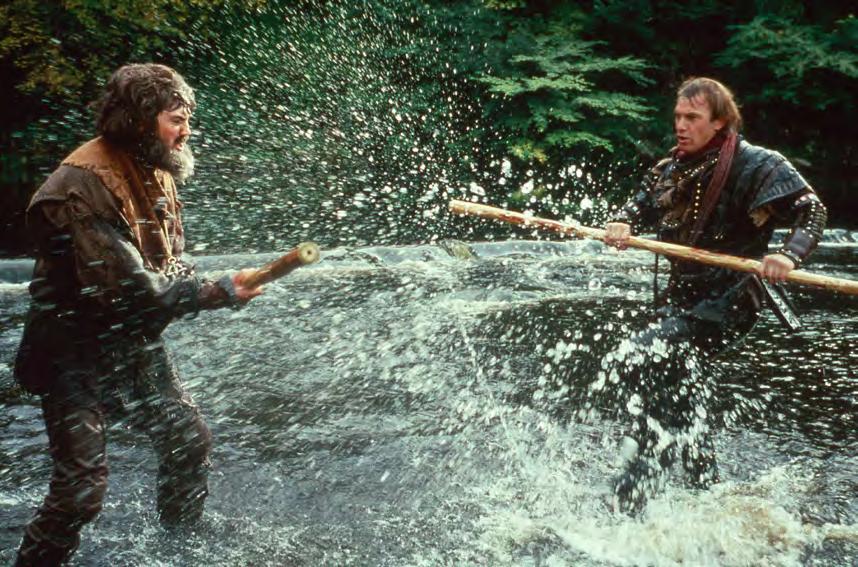
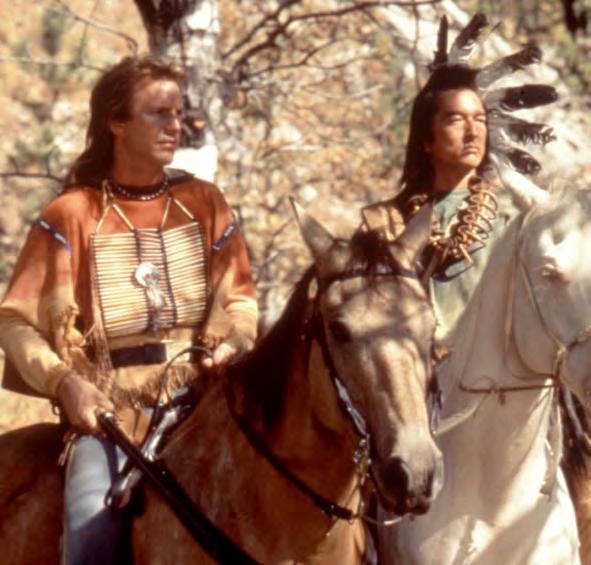
Francis, how about you?
COPPOLA: Oh, I’ve been displaying this behavior for 70 years, trying to learn about cinema. I’ve found the best way is to make a film you have no idea how to make because then the film will help you. And the film won’t tell you which way to go. I like that. I’ve enjoyed my career. As for the risk stuff, what are you risking? You’re risking something that you’re lucky to have, which is the ability to finance a movie. I had that fall in my lap. I wasn’t entrepreneurial for any reason other than that it was fun. I like having fun with people. And that still is the most important thing, and that’s what makes an audience enjoying the movie a great thing to be part of. We’re all there, going to see Lawrence of Arabia together.
COSTNER: I’m not a gambler. People might look at this and say, “Oh, this is a gamble.” And I go, “Well, I guess it is, but do I want to go to Vegas and gamble?” No. I’m not that kind of gambler. I gamble on the love of story. I’m gambling on people, in a sense. I can’t make them go to the theater, but if they get there, I’m going to try to take care of them the best I possibly can. That’s what I count on, like that guy at the campfire.
Francis, you went into Chapter 11 after One From the Heart. It took a number of movies to make you whole. Bankruptcy is a
worst-nightmare scenario for most. What was the biggest lesson that you learned about gambling on your vision and failing?
COPPOLA: It was tough to go through, but I felt I was young and I had gone from being penniless to being in a position of being able to lose so much money. I’m obviously not young now. I couldn’t do it again, nor would I care to. If I’ve noticed anything from this interview, it has been very positive, with neither of us moaning, groaning, or complaining. We are happy in saying we’re doing this because we enjoy it so much.
There was a time of uncertainty when you feared Apocalypse Now might ruin you and cost you the Inglenook vineyard. Your pal George Lucas was flush with Star Wars money, said he would buy it from you, hold the note for 10 years and sell it back at same price. This was after you went to bat for him on American Graffiti when Universal hated the film. Outside of James Cameron helping Guillermo del Toro secure the funds to get back his dad who’d been kidnapped in Mexico, this is exceptional largesse. Quantify a friendship like the one you’ve had with Lucas.
COPPOLA: In a nutshell, if someone said to you, would you rather have a billion dollars or a billion good friends? Friendship is far more valuable than money will ever even begin to be.
Kevin, have you ever had that kind of camaraderie with somebody in the film business?
COSTNER: No, I haven’t had anybody like that, although on this particular movie, I put in all this cash, and I basically deferred my writing, my producer, directorial and my acting fees. So I have an enormous amount in this. But I had two guys from outside the business come in and say, “We’ll make a movie with you.” And it really scared me, because I’m more afraid
"I know when I was making Dances with Wolves, they were calling it 'Kevin’s Gate', even though they didn’t know that I put all my money into this thing, and I actually asked three other directors to direct it before me."
DEADLINE.COM 111
—KEVIN COSTNER
for my friends’ money than my own. And that’s why, on these first two, I deferred everything [laughs]. It’s not the smartest move, but I started this conversation by saying I’m not the greatest businessman. I believe in the movies, the power of them, the longevity. By putting my own money in it, I will chase this movie with my partners the rest of our lives. I can’t put my own money into something and have somebody else be in control, because, at the end of the day, the money isn’t as important to me as the movie.
Francis, you’ve taken these big swings, your wife Eleanor by your side the whole time, directing that doc about the hardship-making Apocalypse Now. I remember being amused when you told me that after you put your family through some hardship, you gave her $10 million so she’d never have to worry about money again. And then you asked for it back a week later for a business opportunity.
COPPOLA: Well, yeah, there have been highs and lows [laughs]. I’ve been married to one woman for 60 years now, and I think taking that money back to buy the rest of Inglenook was one of my smarter moves. My feeling is that as long as I make her happy, I’m doing OK with her. My children, also. I’m risking money that I made on a big risk that everyone told me not to do, but I did anyway. It wouldn’t exist if I hadn’t taken some of my own advice. Sometimes my wife’s advice is very useful. When she says no to something, that’s usually a good reason to do it [laughs]. My wife is valuable to me in many, many ways, but that is one of them. Did you know that I once bought the Chateau Marmont for $6 million?
When was this?
COPPOLA: Around the time of The Godfather Part II. The reason you probably don’t know is because my wife didn’t want me to do it. And I got out of it by invoking a termite clause.
Kevin, when will we see Horizon? Warner Bros. and New Line are releasing it?
COSTNER: Correct. I hope it comes out in the fall. I’d like to take it to the Venice Film Festival. That’s what I want if I get the chance. I love going to Europe, and I’d like to put that out there and let people know that’s what my hope is.

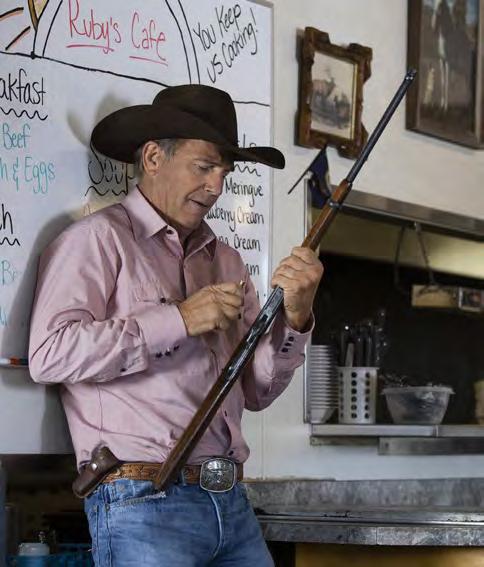
And you, Francis? Megalopolis needs a distributor, and there are a lot of them wandering La Croisette at Cannes.
COPPOLA: I’m not looking for a distributor as much as a distribution partner because the movie has already been made and financed. It has to be in theaters for its initial opening; it’s the way it’s designed to look and behave. I’m most interested right now in arriving at the edit when it’s the film I want. My guess is it’s not coming out this year, so we’ll see.
Last question. Kevin, the year that you won all those Oscars for Dances With Wolves, it was quite an Oscar year. Francis was up for Best Picture and Director for the third Godfather, and Martin Scorsese was up for Goodfellas What do you remember about winning in such a great year for movies?
COSTNER: I was overseas when the movie came out, so I didn’t see what was happening, even in LA. You hear your name called, and it’s a bit of a blur. It’s a forever moment, but it’s just a moment. I was so grateful to the Academy, but I’ve tried to not let awards inform my work. I make these movies for people, not for myself. I author every moment in them as if I’m protecting their experience, protecting the time that they take to come to the theater. That’s how I look at it. But I’ll tell you what. I’m never gonna do this again [laughs]. I’m never putting my fucking money in another movie after these four. A
"When you go into a studio and walk down the halls, you see all these posters of the movies they made. Unless you’re the filmmaker, you really can’t understand, forensically, how those movies went down: who almost killed it, who could have ruined it, who tried to ruin it and now puts it front and center on their wall."
—KEVIN COSTNER
112 DEADLINE.COM PARAMOUNT NETWORK/EVERETT COLLECTION
From left: Costner as John Dutton in Yellowstone ; with Luke Grimes, left, and Cole Hauser.


April 15 & 16, 2023 DGA Theater, Los Angeles Deadline Contenders Television
114 DEADLINE.COM GETTY IMAGES
Vella Lovell and Joel McHale.
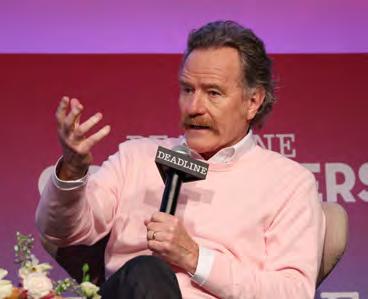

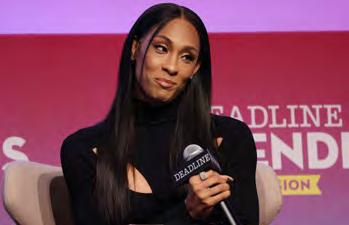

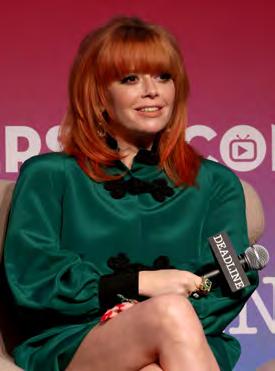

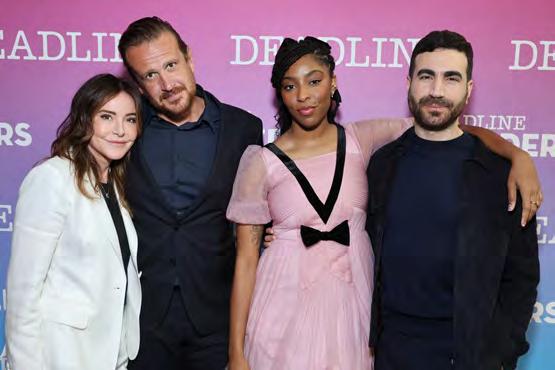
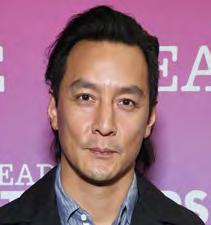






 1. Patrick Stewart
2. Wes Bentley, Gil Birmingham, Piper Perabo and Stephen Kay
3. Max Casella, Jay Will and Garrett Hedlund
4. Kerry Washington and Delroy Lindo
5. Paddy Considine
6. ‘Weird Al’ Yankovic
7. Natasha Lyonne
8. Bryan Cranston
9. Christa Miller, Jason Segel, Jessica Williams and Brett Goldstein
10. Eugene Levy
11. Michaela Jaé Rodriguez
12. Daniel Wu
13. Janine Nabers and Dominique Fishback
14. Jane Krakowski
1. Patrick Stewart
2. Wes Bentley, Gil Birmingham, Piper Perabo and Stephen Kay
3. Max Casella, Jay Will and Garrett Hedlund
4. Kerry Washington and Delroy Lindo
5. Paddy Considine
6. ‘Weird Al’ Yankovic
7. Natasha Lyonne
8. Bryan Cranston
9. Christa Miller, Jason Segel, Jessica Williams and Brett Goldstein
10. Eugene Levy
11. Michaela Jaé Rodriguez
12. Daniel Wu
13. Janine Nabers and Dominique Fishback
14. Jane Krakowski
1 DEADLINE.COM 115
Contenders Television
15. Elle Fanning
Deadline
April 15 & 16, 2023
2 3 5 4 6 7 8 9 10 11 12 13 14 15
DGA Theater, Los Angeles



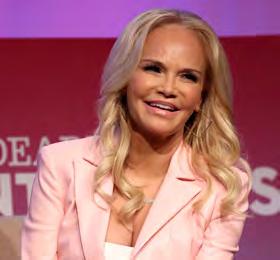




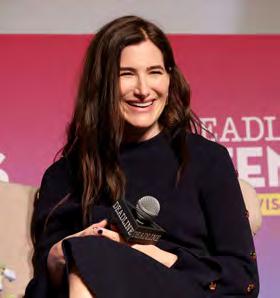






 9. Marlee Matlin and Malcolm-Jamal Warner
10. Camila Morrone
11. Liz Garbus, Melanie Lynskey and Sophie Nélisse
12. Betty Gilpin
13. Rosie Perez
14. Gabrielle Dennis
15. Joan Rater
16. Ali Wong and Steven Yeun
1. Peter Gould
2. Mo Amer
3. Kristin Chenoweth
4. Tricia Fukuhara
5. Scott Z. Burns
6. David Stassen, Wanda Sykes and Ike Barinholtz
7. Evan Peters and Niecy Nash-Betts
9. Marlee Matlin and Malcolm-Jamal Warner
10. Camila Morrone
11. Liz Garbus, Melanie Lynskey and Sophie Nélisse
12. Betty Gilpin
13. Rosie Perez
14. Gabrielle Dennis
15. Joan Rater
16. Ali Wong and Steven Yeun
1. Peter Gould
2. Mo Amer
3. Kristin Chenoweth
4. Tricia Fukuhara
5. Scott Z. Burns
6. David Stassen, Wanda Sykes and Ike Barinholtz
7. Evan Peters and Niecy Nash-Betts
116 DEADLINE.COM Deadline Contenders Televsion April 15 & 16, 2023 DGA Theater, Los Angeles GETTY IMAGES 1 2 3 4 5 6 7 8 9 10 11 12 13 14 15 16
8. Kathryn Hahn
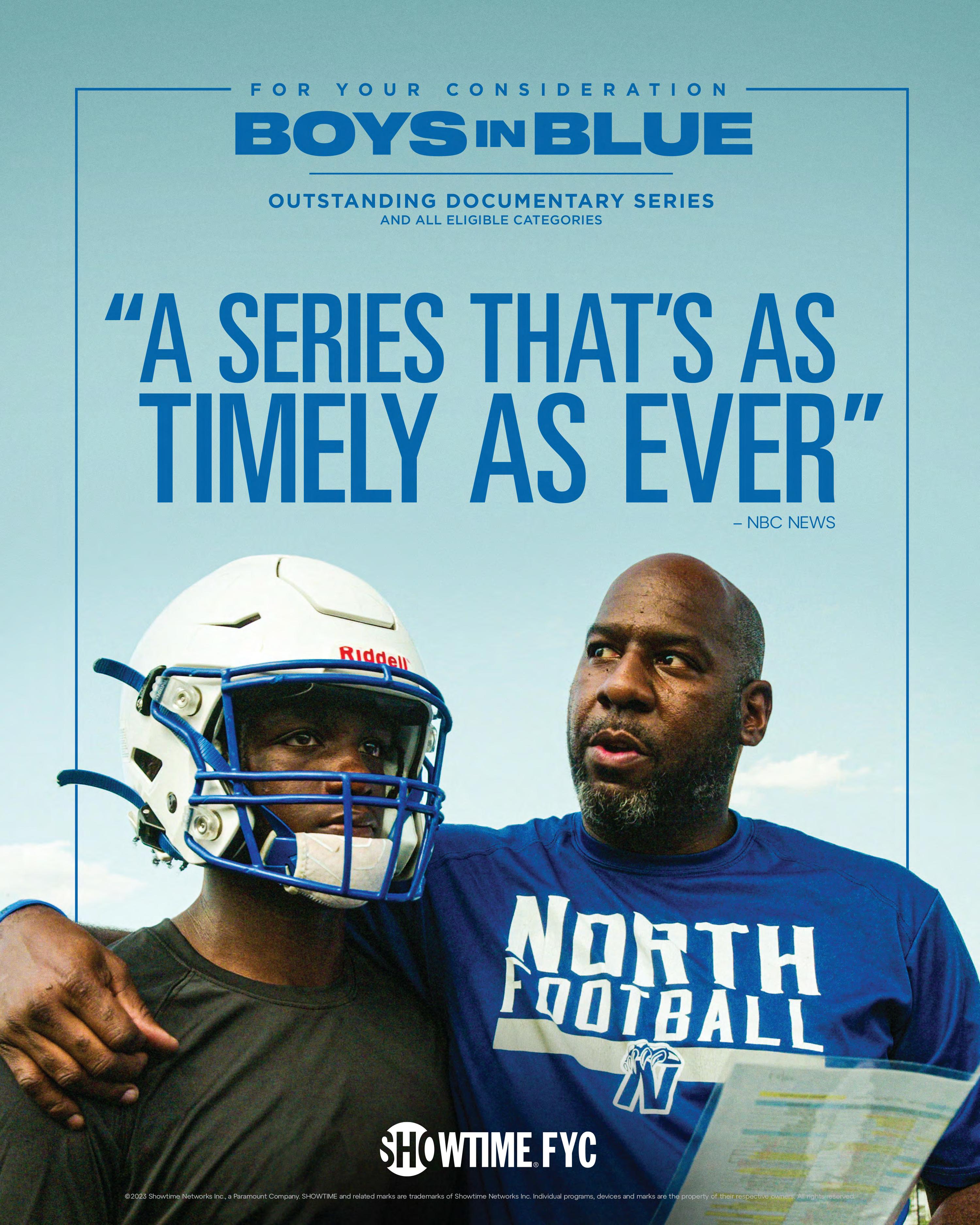





















 ByBazBamigboye
ByBazBamigboye



















 By Damon Wise
By Damon Wise

















 Martin Scorsese photographed by Mark Mann exclusively for Deadline.
Martin Scorsese photographed by Mark Mann exclusively for Deadline.



































 Canadian YouTuber Linus Sebastian
Canadian YouTuber Linus Sebastian





 MKBHD Safiya Nygaard
Dude Perfect
MKBHD Safiya Nygaard
Dude Perfect

















 BY DIANA LODDERHOSE
BY DIANA LODDERHOSE























 On The Wandering Path
The Three Musketeers: D’Artagnan
On The Wandering Path
The Three Musketeers: D’Artagnan














































 1. Patrick Stewart
2. Wes Bentley, Gil Birmingham, Piper Perabo and Stephen Kay
3. Max Casella, Jay Will and Garrett Hedlund
4. Kerry Washington and Delroy Lindo
5. Paddy Considine
6. ‘Weird Al’ Yankovic
7. Natasha Lyonne
8. Bryan Cranston
9. Christa Miller, Jason Segel, Jessica Williams and Brett Goldstein
10. Eugene Levy
11. Michaela Jaé Rodriguez
12. Daniel Wu
13. Janine Nabers and Dominique Fishback
14. Jane Krakowski
1. Patrick Stewart
2. Wes Bentley, Gil Birmingham, Piper Perabo and Stephen Kay
3. Max Casella, Jay Will and Garrett Hedlund
4. Kerry Washington and Delroy Lindo
5. Paddy Considine
6. ‘Weird Al’ Yankovic
7. Natasha Lyonne
8. Bryan Cranston
9. Christa Miller, Jason Segel, Jessica Williams and Brett Goldstein
10. Eugene Levy
11. Michaela Jaé Rodriguez
12. Daniel Wu
13. Janine Nabers and Dominique Fishback
14. Jane Krakowski















 9. Marlee Matlin and Malcolm-Jamal Warner
10. Camila Morrone
11. Liz Garbus, Melanie Lynskey and Sophie Nélisse
12. Betty Gilpin
13. Rosie Perez
14. Gabrielle Dennis
15. Joan Rater
16. Ali Wong and Steven Yeun
1. Peter Gould
2. Mo Amer
3. Kristin Chenoweth
4. Tricia Fukuhara
5. Scott Z. Burns
6. David Stassen, Wanda Sykes and Ike Barinholtz
7. Evan Peters and Niecy Nash-Betts
9. Marlee Matlin and Malcolm-Jamal Warner
10. Camila Morrone
11. Liz Garbus, Melanie Lynskey and Sophie Nélisse
12. Betty Gilpin
13. Rosie Perez
14. Gabrielle Dennis
15. Joan Rater
16. Ali Wong and Steven Yeun
1. Peter Gould
2. Mo Amer
3. Kristin Chenoweth
4. Tricia Fukuhara
5. Scott Z. Burns
6. David Stassen, Wanda Sykes and Ike Barinholtz
7. Evan Peters and Niecy Nash-Betts

